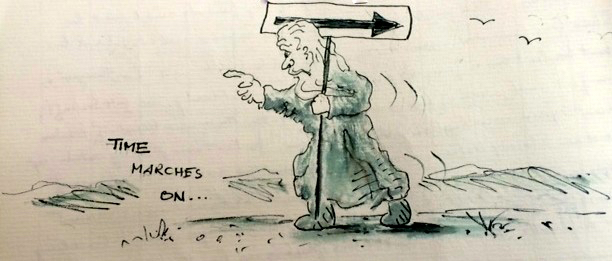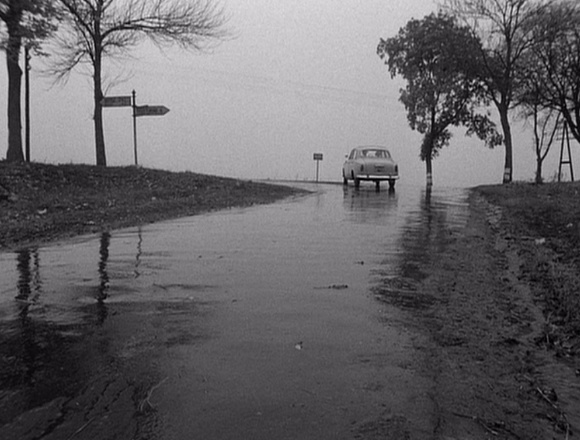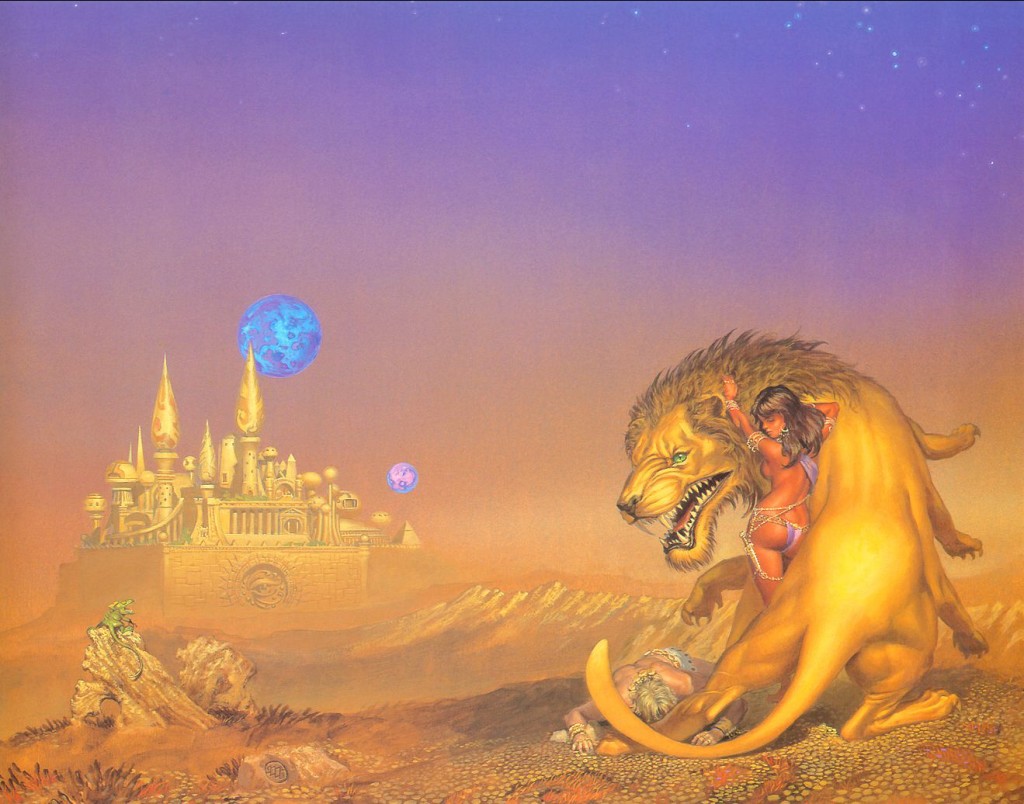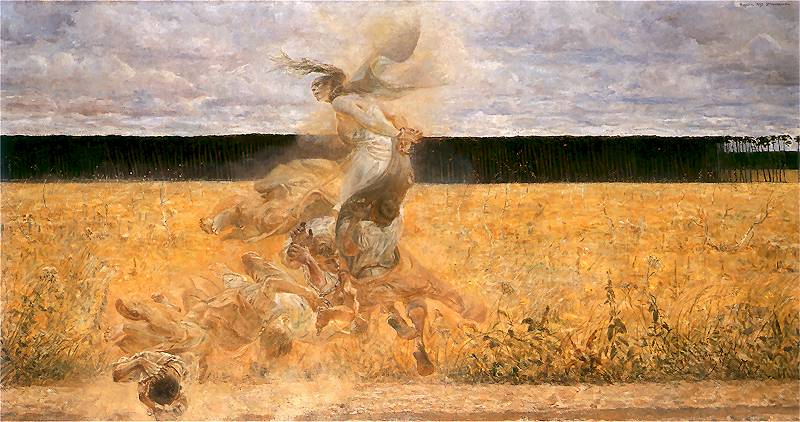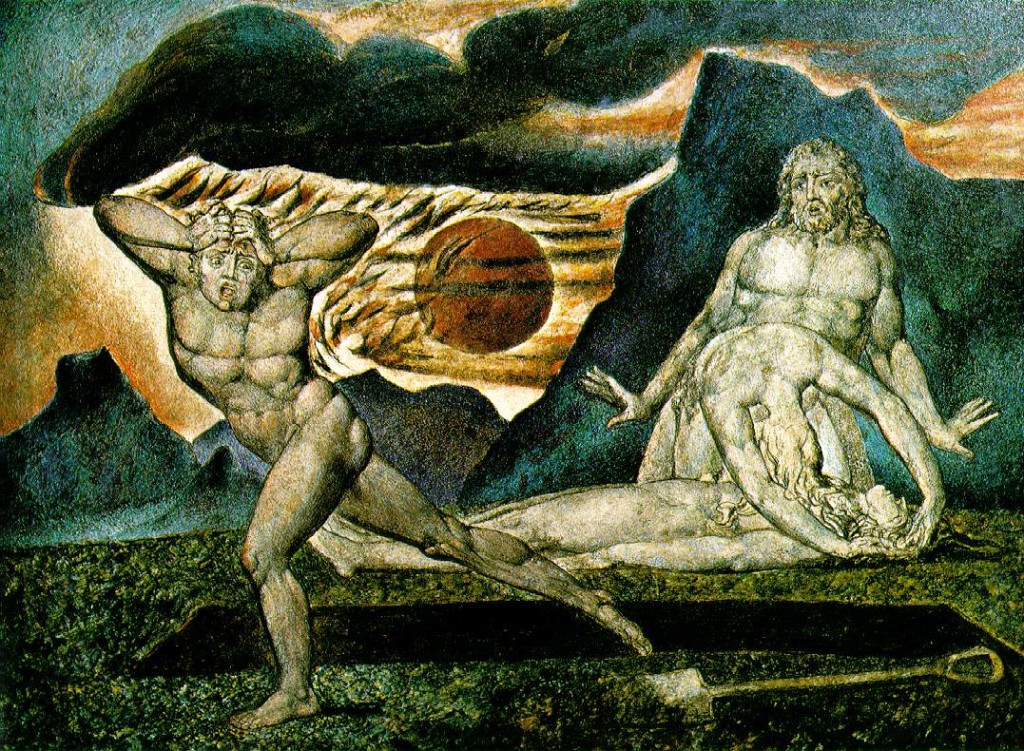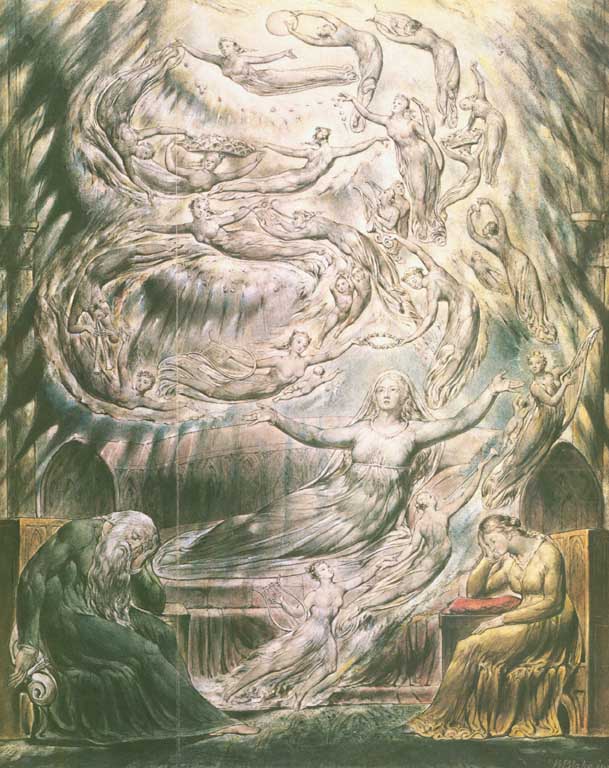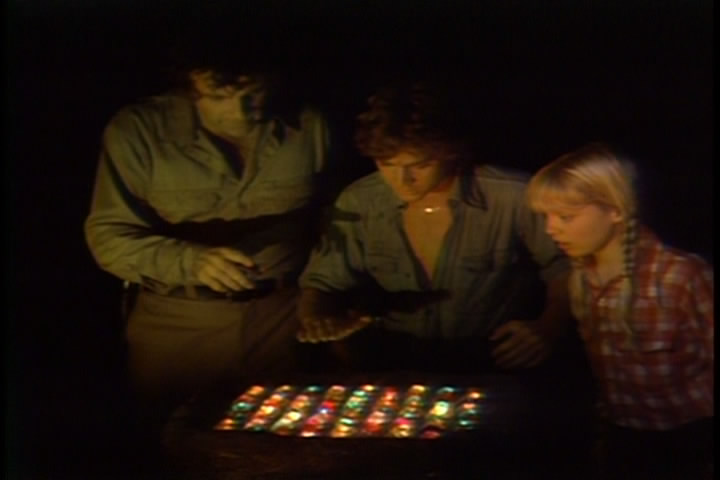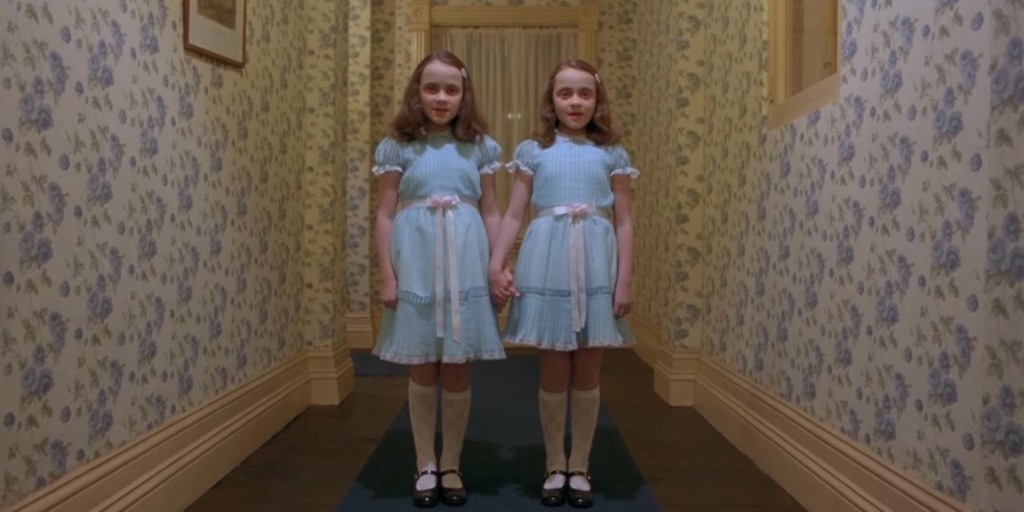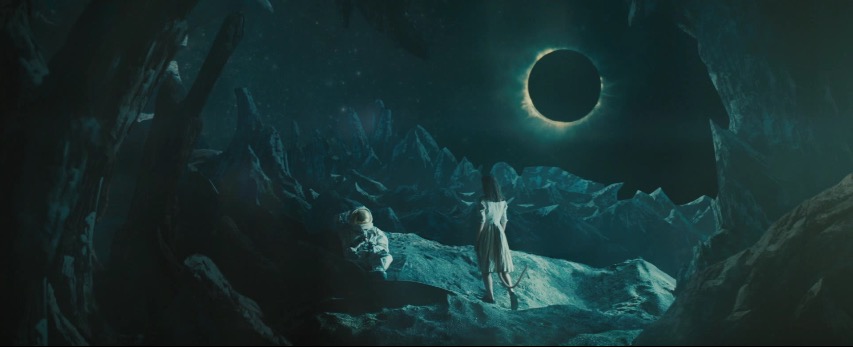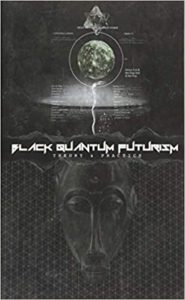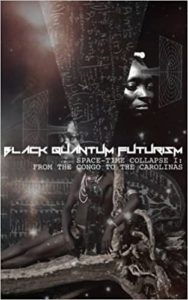The Nightshirt Sightings, Portents, Forebodings, Suspicions
Stories Latent in the Landscape: Spirits, Time Slips, and “Super-Psi”
An alternative explanation sometimes given when mediums provide veridical information about deceased persons is “super-psi”—the idea that the medium is actually obtaining the information clairvoyantly and/or telepathically (i.e., from the heads of their sitters). Super-psi has also been used to account for cases of apparent reincarnation: A child psychically acquires information about a dead person and identifies with that person, producing the appearance of actually being that person in a new life and body. Super-psi explanations satisfy the modern rationalist wish not to appeal to life after death as an explanation for these kinds of phenomena; but as Stephen Braude notes in his fascinating study of the evidence for survival of bodily death, Immortal Remains, it can produce highly convoluted explanations that fail the test of parsimony in comparison to the frankly simpler survival account.
If there is an emotionally powerful story lying in wait for us, some past tragic event just waiting to be learned about or pieced together in our near future, it may elicit a precognitive experience.
I think the problem is that making psi “super” precisely sets it up to fail. I am starting to think that the more different things we allow psi to be, and the more omniscient we pretend psychics are, the less compelling psi is as an explanation for anything. The current vogue for nonlocality as an explanatory framework in parapsychology ignores basic questions of information search and retrieval: How is it that a psychic (or anybody, insofar as we are all psychic) can select a specific piece of information in a whole universe of information and recognize it as the right answer? A much simpler and more powerful explanation for some mediumship cases is the reductive, even Pavlovian framework I proposed in the context of Thomas Pynchon’s Gravity’s Rainbow: What may seem like telepathy or clairvoyance or any number of other ESP or spiritualist phenomena could be simply producing behaviors or descriptions that are tied to future rewards. Those rewards could include future exciting feedback and other learning experiences.
I have written about this in literary contexts, but other forms of learning, including the consulting of archives or just “learning the truth” through some vivid interpersonal disclosure, should have the same effect. If there is a vivid and emotionally powerful story lying in wait for us, some past dramatic or tragic event just waiting to be learned about or pieced together in our near future, it may elicit a precognitive experience that we will mistake as “synchronicity” or perhaps interpret as a past-life experience, or construct in some other culturally less taboo way than precognition.
The story of “Runki’s leg,” for example, is a nice example from the late 1930s in Iceland, which some take as compelling evidence for survival. It seems to me instead like a vivid case of prophetic jouissance, the engagement of a talented Icelandic “precog” with a compelling and culturally potent story latent in his community and landscape. It is a perfect illustration of the power of ancient myths, archives, and geography to intersect and generate, almost like a hologram, precognitive experiences in a gifted psychic sleuth who, quite naturally and according to his cultural tradition, thought of himself as channeling a dead spirit.
Super-Psi Me
The story is told in a 1975 A.S.P.R. article by Erlandur Haraldsson and Ian Stevenson and examined at length by Braude in his book. Hafsteinn Bjornsson was a noted trance medium who, in a series of Reykjavik seances beginning in Fall 1937, began channeling a “drop-in” personality who complained that was looking for his missing leg that was lost in the sea. (A typical feature of “drop-in” personalities is that they are unexpected and display a strong motive for communicating with the living.) This personality was unwilling or unable to further clarify what he meant, or even give his real name, but he persistently appeared during Hafsteinn’s trances asking for his leg over the next year.
A culture that makes a place for spirit mediumship has arguably created an open channel of precognitive information.
Then on January 1, 1939, when a fish merchant named Ludvik Gudmondsson (previously unknown to Hafsteinn) joined the seance circle, the mysterious legless personality announced that his missing leg was in Ludvik’s house, in a town called Sandgerdi (about 36 miles away). Ludvik indeed had purchased a large house there, but knew nothing about a missing leg. After Ludvik demanded to know who the communicator was, the legless drop-in fell silent for some months, but eventually reappeared and told his whole story: His name, he said, was Runolfur Runolfsson, “Runki” for short, and in 1879 he had drowned after passing out drunk on the shore; his body had washed out to sea and then washed up some time later, but was found picked apart by animals with the thigh bone missing. The bone had, he said, washed up later in Sandgerdi, and after being “passed around,” ended up in Ludvik’s house.
“Runki” said his story could be confirmed by checking the records of a church in a town just a few miles from Sandgerdi, which were then housed in Reykjavik’s national archives. The sitters did this, and found that the drop-in’s narrative partly corresponded to the records: Runolfur Ronolfsson had been a tall Sandgerdi local who disappeared in 1879 and whose decomposed and partially dismembered body had been found on the beach over a year after his disappearance. Ludvik meanwhile inquired among elders in the town about a mysterious femur. Older residents recalled that indeed such a bone had been “going around” during the 1920s. In Norse communities, as in many European societies, a person (or an animal) could not be resurrected intact without their skeleton being whole (more on this detail below), so the townspeople wouldn’t just dispose of a human bone. Eventually, the townfolk said, a carpenter had placed the femur in an interior wall of the house that Ludvik eventually purchased. When they opened the wall in 1940, they found the bone, and gave it a proper burial in the same cemetery where Runolfur Runolfsson had been interred, although his exact gravesite had been forgotten. “Runki’s leg” was thus finally laid to rest. It is important to remember that, although the femur was long, corresponding to a tall person fitting Runki’s description, there is no proof that the bone was really Runki’s.
 What was going on here? Assuming the medium had not done extensive research and then somehow maneuvered Ludvik to join his seance circle, how could he have known about Runki or the femur, other than through Runki’s departed spirit actually speaking through him? Haraldsson and Stevenson and Braude weigh this assumption against the super-psi alternative, that the medium was really obtaining telepathic information from the sitters. They naturally find the super-psi explanation wanting: Until they consulted the archives to confirm Runki’s story, none of Hafsteinn’s circle (as far as anyone knows) could have possessed the necessary information to enable the medium to telepathically extract it from their heads; and nobody present, even Ludvik, knew about the mysterious femur or how it ended up in Ludvik’s wall, and this detail was not part of the records at all.
What was going on here? Assuming the medium had not done extensive research and then somehow maneuvered Ludvik to join his seance circle, how could he have known about Runki or the femur, other than through Runki’s departed spirit actually speaking through him? Haraldsson and Stevenson and Braude weigh this assumption against the super-psi alternative, that the medium was really obtaining telepathic information from the sitters. They naturally find the super-psi explanation wanting: Until they consulted the archives to confirm Runki’s story, none of Hafsteinn’s circle (as far as anyone knows) could have possessed the necessary information to enable the medium to telepathically extract it from their heads; and nobody present, even Ludvik, knew about the mysterious femur or how it ended up in Ludvik’s wall, and this detail was not part of the records at all.
But they do not consider that the source of Hafsteinn’s information could have been nothing other than information he would come to read or hear about in his own future. It seems reasonable to me that the arc of his channeling of “Runki” represented his own excited engagement with a really cool mystery, a story latent in his landscape, that his own research and that of his sitters was helping piece together and finally “lay to rest” over the course of 1937-1940.
Leg Work
A directly pertinent fact is that Hafsteinn’s name appears in the visitor register of the national archives, where the church records were kept, but several months after the drop-in personality revealed who he was and how he died. Those church records are crucial parts of that latent story awaiting being pieced together by the medium. Crucially, when “Runki” revealed his life story, he told the group that he died at age 52. This was an error—he was shy of 51 when he died—but the same error appears in the church record. J.W. Dunne’s brilliant forensic work in An Experiment With Time showed how clues like number errors can reveal the true precognitive source of psychic dreams that look on the surface like telepathy or clairvoyance or even encounters with the departed. The errant age in this case reveals that Hafsteinn was most likely precognizing the records in the archives, which he may well have visited precisely to gain insight into the information he had previously channeled.
One of the implicit cultural models of the paranormal is the metaphor of the earth as a recording surface: When something tragic, violent, or sad occurs in a place, it is like making a groove in a record that can be replayed again.
Even if Hafsteinn had read the records beforehand, it would still not discredit him as a fraud, because they told only part of the story. The records did not mention the missing leg (only saying that Runki’s remains were dismembered), nor did they say anything about the femur that found its way into the walls of Ludvik’s house. That had to be revealed by Ludvik, doing his investigative “legwork” (so to speak). Importantly, Hafsteinn began producing this information over a year before Ludvik even arrived in his circle, and we can imagine that the initial communications about the missing leg were a kind of precognitive performance dimly adumbrating the future arrival of a man who would ultimately prove to be a key to a mystery somehow involving a leg and the sea.
The detail of a corpse minus a leg bone has particularly mythic resonances in Norse culture, a detail not mentioned by Haraldsson and Stevenson or by Braude. In his 12th Century prose Edda, Snorri Sturluson described how Thor and Loki, while staying for the night with a farmer, slaughtered Thor’s goats for a meal; the farmer’s son secretly reserved a thigh bone for himself and broke it open for the marrow. In the morning, Thor waved his hammer over the goat carcasses and they came back to life … except, one was now limping. Claude Lecouteux, discussing this story, writes that it is a widespread shamanic belief that the soul resides in the bones of a person or animal. (It is a belief that, according to Rene Schwaller, also has deep alchemical roots in Ancient Egypt, where the femur was regarded as the site of the fixed salt or seed, the true substrate or carrier of the individual’s unique and immortal consciousness.) The “skull and crossbones,” which we now use as a warning on poison bottles, was originally a symbol of the capacity for rebirth; the “crossbones” are femurs.
 Bracketing the question of survival and the afterlife, It is only a time-displacement between Hafsteinn’s utterances and their real or apparent confirmation that makes this (or many mediumistic performances) a paranormal phenomenon. A wonderful puzzle about a drowned man and a missing limb, awaiting being pieced together among various textual and oral history fragments, seems to have echoed back in time along the resonating thread of this talented psychic’s performative jouissance. “In character,” he produced bits and pieces of a puzzle, and only gradually did the larger picture take shape—which must be the great joy and fascination of being a medium, and is precisely why mediums’ information comes in fragments and why they sometimes are caught haunting archives where they can acquire needed confirmatory data. In other words, Hafsteinn’s “paranormally” gained information intermixed with information gained in the usual way, but that real-world confirmation was a necessary part of his performance, and probably the real target of his psi eyes. There seems no reason to doubt that in this case as in so many others, the medium genuinely believed he was channeling spirits, because that was his culture’s construction of mediumistically produced information.
Bracketing the question of survival and the afterlife, It is only a time-displacement between Hafsteinn’s utterances and their real or apparent confirmation that makes this (or many mediumistic performances) a paranormal phenomenon. A wonderful puzzle about a drowned man and a missing limb, awaiting being pieced together among various textual and oral history fragments, seems to have echoed back in time along the resonating thread of this talented psychic’s performative jouissance. “In character,” he produced bits and pieces of a puzzle, and only gradually did the larger picture take shape—which must be the great joy and fascination of being a medium, and is precisely why mediums’ information comes in fragments and why they sometimes are caught haunting archives where they can acquire needed confirmatory data. In other words, Hafsteinn’s “paranormally” gained information intermixed with information gained in the usual way, but that real-world confirmation was a necessary part of his performance, and probably the real target of his psi eyes. There seems no reason to doubt that in this case as in so many others, the medium genuinely believed he was channeling spirits, because that was his culture’s construction of mediumistically produced information.
All artists, when they are ‘cooking,’ have the experience that there is some “other” working through them. Writers feel it, singers feel it, sculptors feel it. And, duh, actors feel it. Mediums were the original actors, long before it occurred to anybody to neutralize the practice by calling it “art” and imagining it had no more significance than an evening’s entertainment. Spiritualism and occultism have preserved that special role, providing a safe haven for shamanism in the modern world, at least in some more open-minded cultural contexts like Iceland. Whether you want to think of channeled personalities like the “drop-in” Runki as authentic spirits of the dead or, like the somewhat more skeptical me, as actors’ personae, mediumship is a skilled performance that opens a real psi channel. Under pressure, any skilled performer like a medium is cooking, left brain fully occupied with the physical task, creating the necessary space for the right brain to summon tantalizing bits of information from the precognitive unconscious.
Thus a culture that makes a place for spirit mediumship has arguably created an open channel of precognitive information, even if it is interpreted differently, and even if that information inevitably comes amid a lot of misleading or useless debris.
Stonetapes
Not only bones but also stones and other landscape features can be the sites of “resurrection” of the dead or past events. One of the implicit cultural models of the paranormal is the metaphor of the earth as a recording surface: When something tragic, violent, or sad occurs in a place, it is like making a groove in a record, storing the experience so that it can be replayed again. The right set of circumstances, according to this metaphor, is like putting that record back on a turntable, or popping a tape into the tape deck; a sensitive person is like a phonograph needle or tape playhead enabling the playback.
The appealing idea that spacetime and stone can store memories of events is based on technological metaphors of the modern period … but that is reason we should be skeptical of the idea.
Some version of this metaphor is implicit in ghost stories and in the way we construe the possibility of the past to haunt the present: For instance, a person dies a premature or violent death and then their spirit is re-encountered in the vicinity of where they died. It might as well also be a template for “time slip” experiences, such as the Roman soldiers on a buried piece of Roman road seen by Henry Martindale in a York cellar, the aristocrats at Versailles reported by Charlotte Anne Moberly and Eleanor Jourdain (the famous “ghosts of the Trianon”), or my personal favorite, the aftermath of the Battle of Nechtansmere seen by a 55-year-old woman named E.F. Smith one snowy evening in 1950, on her way home from a cocktail party near the Scottish village of Dunichen.
The idea that spacetime and stone can store memories of events is appealing and “easy to think,” because it is based on technological metaphors of the modern period. But that alone is reason we should be skeptical of the idea. I’ve argued in the context of precognitive dreaming that when premodern philosophers believed the world was structured by an occult system of correspondences (aemulatio, coniunctiatio, analogia, convenientia, etc.), they had unknowingly identified instead the deep structuring rules by which the brain makes meaning by linking things in memory. Another crucial “similitude” between premodern cosmology and the neurobiology of memory is the role of place as a memory framework. Just as the classical art of memory ties to-be-learned material to real or imaginary “loci,” the sensory richness of environments serve as powerful memory associations; this is not because space stores events but because the hippocampus, the brain’s archivist, contains our neural place representations, our maps of space.
The linkage of paranormal phenomena and geography may thus reflect the role of space and place in our mnemonic functioning: If psi is really precognition, and precognition is “just” our memory for the future, then just as place activates memory, it should also activate “premories” of future experiences either in or about that place. What is often left out of ghost encounters and time-slip cases, but can occasionally be extracted or inferred, is the final “revelation” part of the story, where the witness learned “what it was” he or she saw, or learned some detail that provides a forensic clue that the true source of the vision is that scene of confirmation, not the actual historical event.
 For instance, the Scottish spinster, Miss Smith, knew, as did all residents of her village, that the plain beneath nearby Dunichen Hill was the traditional site of the lake called Nechtansmere and the battle fought on its shore between Picts and Northumbrians in 685 AD, described by Bede. When her case was investigated by an SPR member named James McHarg in 1971, she claimed she had only delved more deeply into the local history after she had her baffling experience. One of the specific details of her vision, a certain roundabout path the Pictish soldiers took as they skirted the ancient mere (long since drained and vanished), corresponded to a spur of the lake as it had been reconstructed by an archaeologist in a journal article Smith admitted reading during her research after the vision. Most tellingly, though, later scholarly consensus has moved the site of the battle to another place entirely; it is no longer thought to have occurred near Dunichen at all. Thus, Smith, perhaps rendered vulnerable by a combination of cold and drink, appears to have precognized historical and archaeological journal articles she read in her avid excitement to confirm or lend insight into her experience, rather than retro-cognizing a bloody battle that was inscribed record-groove-like in the Scottish landscape.
For instance, the Scottish spinster, Miss Smith, knew, as did all residents of her village, that the plain beneath nearby Dunichen Hill was the traditional site of the lake called Nechtansmere and the battle fought on its shore between Picts and Northumbrians in 685 AD, described by Bede. When her case was investigated by an SPR member named James McHarg in 1971, she claimed she had only delved more deeply into the local history after she had her baffling experience. One of the specific details of her vision, a certain roundabout path the Pictish soldiers took as they skirted the ancient mere (long since drained and vanished), corresponded to a spur of the lake as it had been reconstructed by an archaeologist in a journal article Smith admitted reading during her research after the vision. Most tellingly, though, later scholarly consensus has moved the site of the battle to another place entirely; it is no longer thought to have occurred near Dunichen at all. Thus, Smith, perhaps rendered vulnerable by a combination of cold and drink, appears to have precognized historical and archaeological journal articles she read in her avid excitement to confirm or lend insight into her experience, rather than retro-cognizing a bloody battle that was inscribed record-groove-like in the Scottish landscape.
Lost in the Mall
This model, precognizing material or intellectual rewards awaiting us in libraries or in the ground, would also explain how “radiesthesia” or dowsing works. You could even look at “Runki’s leg” as an elaborate case of dowsing: The femur was a mystery awaiting discovery in Ludvik’s wall, just as Ludvik himself was an unknown, unmet person awaiting arrival in Hafsteinn’s seance circle. “Runki” was, in effect, the character and the story that linked the two together. (I am about as poor a psychic as Hafteinn was a skilled one, but I have noticed that psi dreams take this same form: providing puzzle pieces that are the missing connection or short circuit between two latently related things.) Thus even if psi is not about direct “nonlocal” connection to other minds in the present, or to spirits, it is about future physical confluences, the imminent linking of things and people and places IRL, in real life, as well as relevant texts that tie them all together.
Could you effectively create paranormal phenomena by strategically planting made-up stories about places and people in archives?
This raises many interesting possibilities. For example, if hauntings and other paranormal phenomena don’t relate to past events and past lives but to our own future learning or reading experiences about those events or lives, what is to limit this effect to true stories? Could you effectively create paranormal phenomena by strategically planting made-up stories about places and people in archives?
A great experiment for some enterprising young parapsychologist would be to invent a story about a tragedy tied to a particular location, such as a spectacular suicide or murder with some unresolved element, and seed local archives with pieces of this story, ready to be “discovered” by anyone trying to get to the bottom of an uncanny experience. Would people start reporting hauntings in that location, because they spent time in the place and then “stumbled upon” a compelling uncanny story that pertained to it?
It would be a kind of retroactive hypnosis, and there is an analogy to be drawn here with the well-established protocol developed by U.C. Davis psychologist Elizabeth Loftus for creating false memories in research subjects—most famously, false childhood memories of being lost in a mall and rescued by an old woman. Loftus is no friend of paranormal researchers; her body of work has been deployed in the service of debunking abduction claims, precognitive dreams, and other paranormal phenomena. But her work, and especially her famous “lost in the mall” paradigm, is something all anomalists are wise to confront. Would a similar array of story fragments and corroboration by local expert confederates (the caretaker, the maid, the elderly gift shop clerk) have the effect of creating a ghost? Has something like this already been done, for instance as part of MKULTRA?
It helps—or indeed, is probably necessary—if the myth has a hole or incompleteness in it that can be filled imaginatively by the reader himself, acting a part in the drama. The most powerful stories and myths are those that lack resolution, leaving a sense of something incomplete and thus haunting, something that might return, not unlike an unfinished chord progression … or Runki’s missing thigh bone. (More on this idea in a future post.)
The Wyrd of the Early Earth: Cellular Pre-sense in the Primordial Soup
Stand brave, life-liver, bleeding out your days in the river of time.
Stand brave: Time moves both ways …
—Joanna Newsom, “Time, as a Symptom”
The philosopher Alfred Korzybski, who influenced Phil Dick, Frank Herbert, Robert Heinlein, and other science-fictional minds of the mid-20th Century, named “time binding” as a characteristic human activity. He was referring to humans’ ability to plan and pursue goals, including ones of long duration, even transcending the span of an individual’s lifetime. Time binding was implicitly higher than space binding, the activity of animals who live in an eternal present and are dominated by the imperative to forage and hunt for food in their environment, and energy binding, the activity of plants that convert energy from the sun.
The emergence of cells able to bind time would have been a decisive threshold or horizon for the universe. Post-selection created a protective Calvinistic crust on the open-endedness of molecular destiny.
Korzybski was not thinking in terms of precognition, but essentially the argument I have been making in this blog is that we literally bind time through our engagement with the future. Peering into my future-scope, I see post-selection, more than any other new concept, as revolutionizing how we think about time, time-binding, and causality in coming years. Post-selection is the quantum-computing parameter that allows backward-flowing influence from the future to assume a semblance of meaning in the present, but at a cost: a partial but not total “hardening” of causality around pre-sensed events, a narrowing of outcomes available to be exploited precisely in situations where it would improve the organism’s outcomes by some tiny margin. Previously I’ve explored how this affects prophecy and prescience in a human context. I don’t see an expansion of prescience as the next phase in human evolution (Frederic Myers’ “imaginal”); rather, it may have been one of the early thresholds in the evolution of life on earth and throughout the universe.
Physicist Paul Davies speculates that post selection, applied to the vast quantum computer that is the universe, could explain the arising of life:
Perhaps living systems have the property of being post-selective, and thus greatly enhance the probability of the system “discovering” the living state? Indeed, this might even form the basis of a definition of the living state, and would inject an element of “teleology without teleology” into the description of living systems.
I think Davies probably has hit on the correct alternative to more Platonic theories like Rupert Sheldrake’s “morphic resonance” and even syntropy theories that posit future “attractors”—or at least, post-selection is a more productive idiom for describing the in-forming pull of the future. Yakir Aharonov’s work, which provides the quantum-mechanical justification for post-selection, strongly suggests that the entire “randomness” aspect of quantum physics is actually an illusion, that we simply cannot know, except in special circumstances, the future entanglements that dictate a particle’s present behavior.
This is where the distinction between information and meaning becomes crucial: In particles’ present behavior there is information about the future, but we are mostly hamstrung trying to interpret it, that is, make it meaningful. Giving it meaning takes specific experimental setups or entanglement shenanigans in quantum computer circuits such as described by Seth Lloyd, or what is probably going on in the brain. The ability of a molecular quantum computer, such as a microtubule, to “tunnel” through time and thus be, in effect, a little precognitive circuit, could be the key to this. Microtubules do appear to have quantum computing properties; recent findings lend support to this argument originally made in the 1980s by Stuart Hameroff. They could serve as the nervous sytems, sense organs, and brains of cells. Hameroff and Roger Penrose think that quantum coherent behavior centered on microtubules is the basis of consciousness.
 All complex cells, not just neurons, contain microtubules. Lynn Margulis argued that eukaryotes (complex single-celled organisms) formed when simpler prokaryotes (like bacteria) engulfed each other: Mitochondria, etc., were originally independent-living organisms; she argued that microtubules were originally spirochete bacteria that were likewise absorbed. There is some dispute about the latter idea; but regardless of their origin, if microtubules, through quantum entanglement a la Seth Lloyd’s time-travel theory, endow cells with a sensitivity to their future in addition to their present environment, then time-binding might be nearly as basic an activity of complex life as space- and energy binding. Microtubules might have given some cells a decisive edge, enabling them to “preact” in their own interest, conferring a crucial selective advantage.
All complex cells, not just neurons, contain microtubules. Lynn Margulis argued that eukaryotes (complex single-celled organisms) formed when simpler prokaryotes (like bacteria) engulfed each other: Mitochondria, etc., were originally independent-living organisms; she argued that microtubules were originally spirochete bacteria that were likewise absorbed. There is some dispute about the latter idea; but regardless of their origin, if microtubules, through quantum entanglement a la Seth Lloyd’s time-travel theory, endow cells with a sensitivity to their future in addition to their present environment, then time-binding might be nearly as basic an activity of complex life as space- and energy binding. Microtubules might have given some cells a decisive edge, enabling them to “preact” in their own interest, conferring a crucial selective advantage.
What arose at some point in the early Earth, then, was life that both time-binds and space-binds. A eukaryote is a daisy chain of presponsiveness and preactivity to its own near-future. There is now even evidence for microtubule-like structures in earlier prokaryotes as well, meaning that quantum computing might even have been a basic, very early activity of our archaean ancestors. Earth’s primordial soup, in other words, was possibly a precognitive soup.
Simple molecular quantum computers that presponded to the near future (even on the order of microseconds) would be favored in the pre-life margin of organic chemistry. Could tubulin itself, a protein and not anything living as such, be the missing link between (dead) chemistry and biology? Is life, at bottom, a molecular quantum computer’s way of making more molecular quantum computers?
The Bargain
The emergence of cells able to bind time would have been a decisive threshold or horizon for the universe. Prescience—or on the cellular level, “pre-sense”—effectively creates a thin margin of less-alterable future or “predestination” around living things. Because of post-selection, early eukaryotes could have effectively enfolded or nestled themselves in a protective temporal horizon, like a thin causal shell. You might say post-selection effectively created a protective Calvinistic crust on the open-endedness of molecular destiny.
The more an organism feeds its past with useful information, the more constrained its “free will” is. But that sacrifice gives it a marginal survival advantage.
Post-selection is a really good term, because it reminds us of Darwin. An event “survives” when some agent’s prior foreknowledge has not resulted in a deliberate or inadvertent action that forecloses it. In other words, an outcome survives if it does not allow itself to be prevented; it only survives if it is cloaked from past perception or if potentially preventing agents’ perception of it is sufficiently dim and oblique. It calls to mind the idea of ghost universes or bubble realities that have fallen by the wayside, “extinctions” as a result of paradox, incapable of affecting the course of history.
An enhanced ability to see and orient toward certain acceptable outcomes (basically, the outcome of survival, surviving to send information to itself in the past) entails the narrowing of freedom around those outcomes, a diminished ability to defy our fate, our Wyrd. Another way of saying it is that precognition requires traction in the future. Here is an analogy: If an ice-dwelling organism evolved wheels for locomotion, it would have to simultaneously evolve a nozzle on its head that shoots salt out ahead of it so it could move forward; that’s kind of what I mean, but applied to time. Wyrd is the narrowing of our options corresponding to the stretching of the temporal frame of our prescience. The magic frog that lives in my coat and advises me on quantum matters tells me that the trade-off I am describing would correspond to “weak measurement,” the method devised by Aharonov and his collaborators to test his theories about retrocausality.
Even at this early stage, prescience—or pre-sense—needed to orient “positively,” toward reward and “the good.” The actions of these cells oriented toward their own (surviving) future; orienting toward threats would cancel them, and cancel any such precognitive function. This is the implicit Darwinian meaning in post-selection after all: What prevails is what has lived to prevail. We still live with the shadow of this: Prescience is positive, yes-saying, and reward-oriented. It serves as an alarm for threats because some basic cognitive or pre-cognitive function pairs pleasure with destruction and trauma—Freud’s “death drive,” Lacan’s “jouissance,” or Eugene Wegner’s “ironic process.” This is where the ironic Tricksterish aspect of Wyrd comes in: Foresight is purchased at the expense of degrees of freedom.
Or think of it another way: The future, older, bearded you who has survived gives the younger you some information that will only be usable in helping younger you get eventually to where older you is. It doesn’t determine everything about younger you’s actions, and in fact it is so open to multiple and incorrect interpretations that it almost guarantees younger you can’t act differently than to become older you. Younger you will arrive where older you is with a sense of surprise. (Practically everything Slavoj Žižek has ever said about neurosis in relation to the psychoanalytic cure as a “time loop” is contained in that idea.)
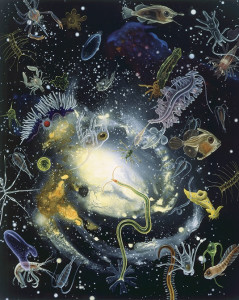 Precognitive beings are in this bind when it comes to free will and predestination. Insofar as their prescience navigates the landscape of time, it is at the expense of a kind of binding to fate, a kind of straightjacketing of Wyrd: Its degrees of freedom are narrowed in order to correctly interpret and utilize—which means, not foreclose—a future situation. The more an organism feeds its past with useful information, the more constrained its “free will” (in the past) is. But that sacrifice gives it a marginal survival advantage over an organism that lacks any preactive capacity, because the sacrifice is not total. (Also the pre-sense of one individual may benefit its kin or community and thus also contribute to its fitness indirectly.)
Precognitive beings are in this bind when it comes to free will and predestination. Insofar as their prescience navigates the landscape of time, it is at the expense of a kind of binding to fate, a kind of straightjacketing of Wyrd: Its degrees of freedom are narrowed in order to correctly interpret and utilize—which means, not foreclose—a future situation. The more an organism feeds its past with useful information, the more constrained its “free will” (in the past) is. But that sacrifice gives it a marginal survival advantage over an organism that lacks any preactive capacity, because the sacrifice is not total. (Also the pre-sense of one individual may benefit its kin or community and thus also contribute to its fitness indirectly.)
Put yourself in the shoes of a slime mold or bacterium. Would you rather have a future version of yourself leaving a breadcrumb trail toward the exact future it inhabits, even if it isn’t the best future and forecloses possibly better other options? Or would you rather gamble that there’s a future at all (i.e., you could be killed at any moment and thus not survive to become older you). Maybe to you, a human being, it sounds like an iffy proposition, since you probably figure your chances of arriving at some future unaided by psi are pretty decent (because even if you believe in psi you still probably think of it, erroneously, as a “significant but small effect”); but it might be a different story if you were a simpler being. That slightly constrained free will is to that organism’s existence in time what its enclosing membrane is to its existence in space: both a container and armor.
The Jouissance of Constraint
In other words, simple life made a deal with its future, that it would accept certain constraints and non-optimal outcomes in order to secure for itself a promise of survival long enough to reach that outcome. We are talking microseconds and milliseconds here, a thin veneer on life’s temporal envelope. But as life complexified, it found ways of prying open or widening this margin by small increments, turning it into more of a shell. Complex cellular assemblages of microtubules (neurons) and nervous systems made of them were a decisive step, enabling those precog circuits to recruit classical-causal interactions in the meat-sphere to “hold” precognitive information associatively for longer and longer periods.
The arising of sentience in a post-selected universe may have introduced a radically different causal regime from what prevailed in the first several billion years post-Big Bang.
A brain such as ours, with trillions of microtubules organized in 86 billion neurons with trillions of synaptic connections, can create the necessary noise of a system within which post-selection and something like “weak measurement” can operate on a much bigger scale. An accurate precognitive signal is a “majority report” within a relatively noisy chatter of relatively inaccurate assessments of the future. It may be this ability to preserve future information in highly oblique, associative form that enables future information to be contained and preserved for a long time—over months and years in some cases—in our “premory.” An unconscious—a tendency to compute across long timespans or even the whole life of the brain—is a necessary entailment of this.
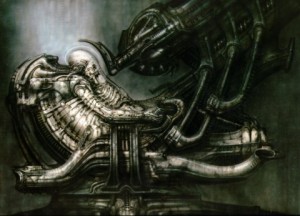 So is jouissance, which looks out for our survival by binding pleasure to constraint as well as to threat. The best painter of this aspect of jouissance was H.R. Giger, whose “Space Jockey” in Alien is the most perfect icon of endosymbiosis.* When future humans are nothing more than endosymbiotes in machines we created, it may be precisely our precognitive ability, our ability to enter the dreamworld, that makes us indispensable to our engulfing machine progeny. The ability to dream may give the organic brain vast natural advantages over technological precognitive circuits.
So is jouissance, which looks out for our survival by binding pleasure to constraint as well as to threat. The best painter of this aspect of jouissance was H.R. Giger, whose “Space Jockey” in Alien is the most perfect icon of endosymbiosis.* When future humans are nothing more than endosymbiotes in machines we created, it may be precisely our precognitive ability, our ability to enter the dreamworld, that makes us indispensable to our engulfing machine progeny. The ability to dream may give the organic brain vast natural advantages over technological precognitive circuits.
One wonders whether prescience and its necessary tradeoffs could have shaped our regular physical senses as well. There is an old, mostly forgotten theory that vision, for instance, is actually limited by the eye rather than enabled by it—the “clairvoyant theory of perception.” I’m skeptical of clairvoyance as such—I think it is one of the many masks of prescience—but it seems like there could be a grain of truth in this theory anyway: What if the senses emerged in such a way as to constrain or create the needed blind spots to enable prescience (or in the dim oceanic past, our primordial pre-sense) to operate? What if a tradeoff with prescience exerted pressures constraining our ability to navigate space, limiting our degrees of perceptual freedom, just as brains became structures to elaborately limit our cognitive freedom while reaching into the future?
Causal Sclerosis
On the surface, post-selection seems to imply some version of eternalism, the Minkowski glass-block universe I discussed some time ago in the context of Alan Moore’s forthcoming novel Jerusalem, a universe in which the future always already exists, which seems deterministic and claustrophobic—a hoarder’s cosmology (sorry, Alan Moore, you’re a hoarder). Determinism can make deliberate action seem pointless and life bleak. But causality, as I’ve argued (a propos of Moore and Phil Dick) may have a variable viscosity, open/loose/indeterminate in large swathes but given structure by islands of relative inevitability. It could be the case that the only history relatively “locked in stone” (or glass) and thus less subject to alteration by our free will, is precisely those events that are precognized by a sentient agent.
To some higher-dimensional walker on the cosmic beaches, these closed timelike curves created by our quantum brains may be like seashells, discarded remnants of intelligence persisting after their soft fleshy creators are long dead.
It could be that life itself actually injects a kind of novel calcification, stalagmites of determinism, Parmenidean inevitabilities, into the more free-flowing contours of causation, because of this precognitive functioning that dates back to our eukaryote ancestors. The arising of sentience in a post-selected universe may have introduced a radically different causal regime from what prevailed in the first several billion years post-Big Bang. Life opened a window onto its future only by placing itself in a bit of a straightjacket. Viewed four-dimensionally, those time-binding organisms are creating a kind of causal viscosity or solidity around them and in front of them, an ability to “preact” but at the expense of a certain boundedness or limitation on their freedom. That would be paradoxical if it were an all-or-nothing, black-and-white thing, but it isn’t.
We always think clumsily about fate and foresight, in terms of chickens versus eggs. The point is, the chicken and egg arise together, there is no precedence. Thus we cannot say that because we foresee something, causality police will arrive to see that it happens, or that a future becomes locked in and then we can see it, er, beforehand. It is all of a piece, a landscape feature in the four-dimensional topography of spacetime. (In this sense, it is probably ultimately wrong to think about precognition or prescience or pre-sense at all without also accounting for PK phenomena or some kind of gaming of future probabilities. I precognize that PK will be a recurring theme in my speculations during the upcoming year.)
 Beings with precognitive organelles, especially when organized into big brains, actually are shaping the contours of causality and the universe’s unfolding in radically more profound ways, by creating novel acausal formations: those ‘acausal’ (but really, dual causal/retrocausal) feedback loops, which amount to an actual calcification or fossilization of history. (For hermeticists: I wonder whether this Wyrd, this selective hardening of causality around prescient beings, is not precisely the calcification or “styptic” function Rene Schwaller referred to as the function of alchemical salt; it’s just the salt we shoot from our heads to give our psi-wheels traction on the icy mountain road of Time.)
Beings with precognitive organelles, especially when organized into big brains, actually are shaping the contours of causality and the universe’s unfolding in radically more profound ways, by creating novel acausal formations: those ‘acausal’ (but really, dual causal/retrocausal) feedback loops, which amount to an actual calcification or fossilization of history. (For hermeticists: I wonder whether this Wyrd, this selective hardening of causality around prescient beings, is not precisely the calcification or “styptic” function Rene Schwaller referred to as the function of alchemical salt; it’s just the salt we shoot from our heads to give our psi-wheels traction on the icy mountain road of Time.)
To some higher-dimensional walker on the cosmic beaches, these formations, closed timelike curves created by our quantum brains, may be like seashells, the discarded remnants of intelligence persisting after their soft fleshy creators are long dead.
Postscript: Dark Materialism
When all the metaphysical and theological systems have come and gone there remains this inexplicable surd: a flurry of breath in the weeds in the back alley—a hint of motion and color. Nameless, defying analysis or systematizing: it is here and now, lowly, at the rim of perception and being. Who is it? What is it? I don’t know. — Phil Dick, Exegesis
The future intrudes on the present as a void or absence that nevertheless shapes our thought and behavior in subtle ways. Meaning always awaits us in the future, forever deferred and postponed, as French poststructuralists like Lacan and Derrida always insisted. Thus when I argued a few posts back that there is no matrix of meaning giving some kind of secure sense-structure to the universe, I should have been more precise: the universe has no meaning in the present; meaning is always in the future.
Dark matter may be the “missing meaning” of the classical-causal universe, the unconscious of spacetime.
The closest thing to meaning in the present is that perturbation and deflection we feel subtly in our lives. It is Lacan’s Real and Phil Dick’s “surd,” and really, I think, we can place the whole Freudian “unconscious” (and the Buddhist “substrate consciousness”) in the Not Yet as well: It is the place where unthought thoughts are thought. The Not Yet also takes the form of elusive flickering anomalies, maybe even all of the almost-but-not-quite meaningful phenomena that button-down minds dump into the wastebin labeled “the paranormal.” As I suggested in the last post, PK phenomena could even be manifestations of causality’s immune system against paradox. The noönic envelope of the earth, the interpenetration of the future with the present, creates deviations, causal perversions, and anomalies that are both manifestations of “hardened” fate (or Wyrd) and debris of a powerfully time-binding biosphere. It sounds awfully lot like a control system. Are UFOs themselves part of the “long Earth’s” causal immune system?
Unlike many of my friends and fellow anomalists, I’m obviously not done with materialism. Opening physics and psychology up to retrocausality has much more traction as an explanation for psi and other paranormal phenomena (and chaos magic) than waving our hands about consciousness fields and matrices of meaning; it also (to me at least) satisfies the need to restore an excitingly science-fictional richness and surreality to the world made bleak by the dull-minded Dawkinses and other unimaginative science-stops-here skeptics. “Materialism” isn’t the equivalent of that sclerotic, skeptical point of view. It doesn’t mean there’s nothing but matter; for a century, nobody (at least in the hardest of the hard sciences) has believed that. It just means being mentally rigorous, critically minded, and not giving free passes from causality; but it is necessary to radically enlarge our picture of causality, and thus we need a more “elaborative” kind of materialism to replace the reductive one that currently dominates. Mainstream science will get there sooner or later; for now, we anomalists are doing advance scouting of the terrain.
The mystery of dark matter is emblematic of that need to enlarge our picture of matter rather than replace it with some simplistic idealism. A few years ago I speculated that dark matter might be made of knowledge. I was corrected by some readers more knowledgeable in information theory and computing that even very massive ET data collection would not be “big” in mass, because information storage ever tends toward the minute in scale. ET big data would be enfolded in the fabric of space or stored in black holes; it wouldn’t take the form of big Toshiba or Seagate hard drives floating around in space and perturbing the rotation of galaxies. But that throwaway idea was not valueless, because it led me to a better hypothesis, and this one is not idle: Dark matter could really be the perturbing effect of the future, or the Not Yet, at the galactic and intergalactic scale.
In other words, the large-scale perturbation or deviation from our gravitational predictions, which looks (to cosmologists who cannot countenance any future influence) like extra matter shaping the behavior of galaxies, could really be a nonrandom tendency in matter as a result of the causal “pull” of the future. Dark matter might, in other words, be the “missing meaning” of the classical-causal universe, the unconscious of spacetime, and not missing mass as it is presumed to be.
Readers, thoughts?
NOTE:
* Yes, please pretend the dumb prequel, with its moronic reimagining of Space Jockeys as steroid-pumped Woody Harrelson lookalikes, does not exist.
Wyrd, Post-Selection, and the Quantum Trickster
English is blessed with a large and fascinating family of w-r words connoting twisting, turning, and turning-into (in the sense of becoming)—think writhing wriggling worms and the wrath of wraiths. (See my ancient post about “werewords” if you are curious.) My favorite of this family is Wyrd, which comes from the Old English weorthan, “to become,” but with a sense of turning or spinning—as in, the “spinning” of the thread of our life. Wyrd (or in Norse, Urthr) was one of the three sister-goddesses, the Norns or Fates, who together wove a man’s destiny and could thus foretell it. Wyrd, as becoming and as turning, represents “what has turned out” or “what will have turned out” or “what you will have turned into.” It is a kind of future-perfect tense, a retrospective view from a future vantage point that can look back and survey the ironic (or even warped) paths a life has taken.
Paranormal phenomena survive in a post-selected universe precisely by introducing doubt, and mucking with our ability to settle on the right explanation.
Other than through a common appearance in fantasy novels, including the Discworld series of Terry Pratchett, Wyrd survives now in English solely via the wonderful word weird, and this is thanks entirely to Shakespeare’s Macbeth. The “weird sisters” were three prophetic witches living alone in the wilderness, inspired undoubtedly by the Norns, but their role in Shakespeare’s tragedy is far more interesting. Weird didn’t simply mean “strange” as it does nowadays; it meant more a force of compulsion related to prophecy—forcing things to happen because a prophetic person said it. Frank Herbert keyed in on this ancient usage in Dune, where “weirding words” had a compelling force over the hearer.
The concept of Wyrd can thus help us understand post-selection, the quantum physics concept that allows time travel—including time-traveling information (prescience and prophecy)—to exist without producing causality-offending paradoxes. The term comes from quantum computing, where it is simply a filter on the outcomes of a computation: Set a computer to perform calculations and exclude all the various solutions that do not arrive at a desired, “selected” answer. This leaves a range of allowable paths to get to that answer—a certain limited range or degrees of freedom within which information accessed in the past, at time point A, accurately pertains to the future event at time point B. In a way it is analogous to quantum “tunneling”—a particle’s ability to simultaneously take multiple paths to a destination in space—but applied to the time dimension instead.
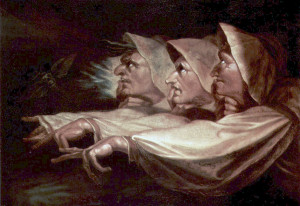 Applied to the larger universe of causality, which is information by another name, post-selection just means we live in a possible universe, and outcomes are those that have “survived” (think Darwin). Specifically, they have survived any possible precognitive detection by an agent capable or desirous of preventing them, or else have been actually facilitated by prophecy (those feedback loops I’m fond of). Under post-selection, a degree of foresight is purchased at the expense of some degrees of freedom of action and interpretation.
Applied to the larger universe of causality, which is information by another name, post-selection just means we live in a possible universe, and outcomes are those that have “survived” (think Darwin). Specifically, they have survived any possible precognitive detection by an agent capable or desirous of preventing them, or else have been actually facilitated by prophecy (those feedback loops I’m fond of). Under post-selection, a degree of foresight is purchased at the expense of some degrees of freedom of action and interpretation.
This produces ironic effects that go a long way toward explaining various characteristics of psi and the paranormal more generally. Post-selection is the Trickster, who might also be called the Timeline Guardian. The witches’ prophecies about Macbeth actually shape his destiny, his Wyrd, embodying the ambiguities and peculiarities of prescience in a possible universe, a universe that must sometimes take strange steps to protect itself from paradox. This may even offer a new way of thinking about psychokinetic (PK, or mind-over-matter) effects that seem to occur in the vicinity of precognition.
Misdiagnosed Informational Reflux
Folklore and tragedies from Oedipus to Macbeth to Dune Messiah show us that prophecy seldom directly and obviously helps further a person’s conscious intentions or plans; often it has the opposite effect. For instance, Macbeth neurotically finds himself striving to achieve his succession to the throne even though it has been prophesied; yet the witches’ more oblique prophecies about his downfall are fulfilled precisely because he misunderstands them until too late; had they been clearer, he would have taken action to prevent them.
Societal disbelief in psi and prophecy must be included in our account of the universe’s immune system against paradox.
Debates over prescience and its paradoxes often misleadingly turn on ideal-typical examples like receiving a premonition of a terrorist attack, which raises the obvious question of possibly using the foreknowledge to warn somebody (and thus foreclose the event). It doesn’t quite work that way in the real world, where prescience has a much more ambiguous character. Because we possess consciousness and free-will, the rule of post-selection guarantees that the vast majority of our precognitive experiences are consciously unregistered as such until after the fact, either because we totally overlook them or, if we detect something premonitory going on, it is subject to too many rival interpretations that it does not occur to us to act (deliberately or inadvertently) in a way that would prevent the foreseen outcome from occurring. Or, we can try to act on it, but the circumstances guarantee that nobody will listen or heed what we say. Nobody pays much attention to credulous paranoids and New Agers who believe in bullshit like ESP; societal disbelief in psi and prophecy must be included in our account of the universe’s immune system against paradox.
None of the nation of dreamers who dreamed of 9/11, for instance, knew exactly what was going to happen or when; even if some did, there was no possibility of preventing the attacks based on such dreams and visions (especially taken in isolation). Precognition is always slippery, always evades our attempt to interpret. It often has an ominous or uncanny flavor, for instance, yet turns out to have a totally mundane meaning once confirmed by events—or else, it seems mundane and innocuous at first glance and then turns out later to have had monumental importance. This is all, I believe, directly symptomatic of how prescience has to work in a post-selected universe.
 Post-selection is sometimes described as a rule that prevents the grandfather paradox, but the way it works in practical terms is as a context that preserves a tolerable degree of uncertainty about information back-flowing from the future. One of the vexations of psi is that it has always been seen to be a weak signal on a noisy channel; protocols to enhance the signal, such as the redundancy method described in Damien Broderick’s recent book Knowing the Unknowable, cannot get rid of the noise altogether. What this means is that you can never prove that a single psi behavior (guess, dream, insight, drawing, etc.) is authentically an example of psi. You are stuck in a land of statistics and uncertain probabilities and inability to ever make definitive claims.
Post-selection is sometimes described as a rule that prevents the grandfather paradox, but the way it works in practical terms is as a context that preserves a tolerable degree of uncertainty about information back-flowing from the future. One of the vexations of psi is that it has always been seen to be a weak signal on a noisy channel; protocols to enhance the signal, such as the redundancy method described in Damien Broderick’s recent book Knowing the Unknowable, cannot get rid of the noise altogether. What this means is that you can never prove that a single psi behavior (guess, dream, insight, drawing, etc.) is authentically an example of psi. You are stuck in a land of statistics and uncertain probabilities and inability to ever make definitive claims.
People always raise the paradoxical idea of having a premonitory dream of dying in a plane crash and then avoiding the flight. What, in that case, “sent” the premonition? But there’s no mystery: The premonition may really be “of” surviving a plane crash that was depicted in the dream as including you. Or if I am right, it would be more accurately characterized as being an oblique representation of your complex emotions sparked (in the future) by surviving a real or possible plane crash. We should not look for literalness in premonitory phenomena, or a direct connection to actual events; they refer to our (future) inner life. And more to the point, you can never be 100 percent sure it was “a premonition” or “a precognitive dream” in the first place and not chance coincidence, just a random dream, and your interpretation of it a hindsight-biased construct.
Don’t Think of a Polar Bear
And really, precognitive dreams and visions are not really “of” the future in any sense: They arrange material already in memory as a best-guess interpretation of unprovenanced “perturbing” information supplied by the precognitive circuit. My work with precognitive dreamwork and hypnagogia over the past two years has made this logic quite clear to me: We’re precognitively dreaming all night and metabolizing our immediate future in hypnagogia all day; but even scrutinizing these phenomena, armed with a notebook and melatonin and Freud’s Interpretation of Dreams, their meaning only ever becomes apparent in hindsight or, often, precisely as the precognized event is already unfolding (thereby adding to the excitement and thus emotional salience of the realization). They largely concern very trivial events, forcing me to conclude that the traditional association of premonitions with disasters and traumas is purely an effect of hindsight bias; prescience is a constant background function (i.e., James Carpenter’s “first sight”), not a rare thing provoked by “disturbances in the force.”*
The Trickster function causes us to find perverse reward precisely in signs of things we don’t want to happen.
Other than dreams, prescience informs our intuitions, parapraxes like misreadings and slips of the tongue or pen, “earworms,” and other manifestations of what Freud called the psychopathology of everyday life. The associative murkiness surrounding psi not only demands that we study these phenomena within a Freudian psychoanalytic framework, as Jule Eisenbud did in the 1970s, but also links them to phenomena described in more recent cognitive psychology, such as the “ironic process theory” of Daniel Wegner. Wegner realized that, if asked, you can’t not think of a polar bear, because a vigilant part of the brain is on the lookout precisely for the undesired thought in order to prevent it. It’s essentially a Trickster function, and such a function would have arisen to orient us toward real threats (not just imaginary polar bears); it causes us to find perverse reward precisely in signs of things we don’t want to happen; the function especially keys in on signals of chaos, entropy, and death or decay.
 Edwin May thinks entropy gradients actually carry the psi signal, but I think it is simply that our psi eyes are drawn to the signs of disorder and decay that hint at something our survival-minded limbic system ought to be aware of. Psi is semiotic, focused on signs, because information is; as psi-dreaming pioneer J.W. Dunne brilliantly discerned, it’s an orientation to information coming down the pike from the brain’s future, not an orientation to objective events out in the world. Wegner’s ironic process, or the Trickster function, explains the perverse linkage of reward to threat (a binding I have elsewhere called jouissance)—explaining why it is really reward and not trauma that “powers” psi phenomena, and why (again, per Carpenter) it most often operates awry of our conscious intentions.
Edwin May thinks entropy gradients actually carry the psi signal, but I think it is simply that our psi eyes are drawn to the signs of disorder and decay that hint at something our survival-minded limbic system ought to be aware of. Psi is semiotic, focused on signs, because information is; as psi-dreaming pioneer J.W. Dunne brilliantly discerned, it’s an orientation to information coming down the pike from the brain’s future, not an orientation to objective events out in the world. Wegner’s ironic process, or the Trickster function, explains the perverse linkage of reward to threat (a binding I have elsewhere called jouissance)—explaining why it is really reward and not trauma that “powers” psi phenomena, and why (again, per Carpenter) it most often operates awry of our conscious intentions.
This may seem to make precognition “useless” but it does not; it only makes it non-straightforward with respect to our conscious aims. It was a big “duh” moment for me about a year ago when I realized that this is just another way of phrasing what ritual and chaos magicians have been saying for many years, albeit in another idiom. Hence the importance (as Gordon White reminds us in his excellent recent book The Chaos Protocols) of “obliquity,” as well as the necessity of a ritualized social context in which to productively exercise psi abilities.
Blinding
The associative remote viewing setups devised by Russell Targ and others are perfect examples of psi-facilitative social ritual—where effectively the psychic him-/herself is “blinded” to the useful meaning of the information they produce until after the fact. Just as the first cells may have capitalized on quantum pre-sense by engulfing tubulin endosymbiotes (more on this in the next post), the only useful psi in the human world is “symbiotic” in the form of teamwork, a relation between, minimally, a “blind” psychic subject and an agent who is alone privy to the specific problem or question being posed—and better yet, even more intermediate layers of knowing/non-knowing.
Wouldn’t it shock most scientists to know that the ancestor of basic experimental controls is nothing other than mediumship.
We should not miss here the resonance to classical archetypes of prophecy. Prophets often are blind, or are blinded. Think blind Tiresias, who is really a mirror held up to Oedipus, who blinds himself upon learning the truth of how his actions fulfilled the prophecies. It is precisely the fact that prescience is always about the psychic subject’s own future enjoyment that makes the subject precisely useless or unreliable as an interpreter of his/her visions; there must be controls in place to take this unconscious foresight and forefeeling, de-bias it, and make it something actionable and useful for the welfare of the community. This is precisely why I think science is a necessary partner in psi: Actually utilizing psi effects requires the same sort of rigorousness and fussiness (blinding and controls) that enables us to capitalize on other elusive, small effects in nature and turn them into something powerful.
We also should not miss the historically well-known role of collaboration in divination and magic: The diviner often requires a more naive assistant as a conduit or reader, which performs the same function as blinding in an experimental context—creating filters to control for bias and to extract prophetic knowledge from the noise that surrounds it. Think the oddball practices like Cagliostro’s use of a child-clairvoyant, or John Dee’s use of Edward Kelly (although you could ask, who was using who, in that case). Experimenter effects are the death of divination. Blinding is really a kind of distillation or extraction operation … And wouldn’t it shock most scientists to know that the ancestor of basic experimental controls is nothing other than mediumship.
In no case can the “psychic subject” gain conscious knowledge, with any certainty, of an event such that the knowledge could be actually used by him-/herself in such a way as to prevent that outcome—kind of like the witches’ prophecy that no one “of woman born” will kill Macbeth, or that he’ll only be overthrown when Birnam Wood comes to Dunsinane. I’ve noticed that precognitive dreams have a cunning range of interpretations: Until the future referent becomes clear, you can often write them off as having vague links to past events or preoccupations. They have a way of discouraging scrutiny.
Precognition could only have arisen in this “cloaked” fashion; it can only be an unconscious phenomenon. Psi and meaning do not mix, as remote-viewers have always known: There is some contradiction between psi-gained information and understanding its meaning or being able to put its meaning (accurately) into words. It also comes hand in hand with a shaping of our possible degrees of freedom, and cannot be disassociated from our neuroses and deepest motivations.
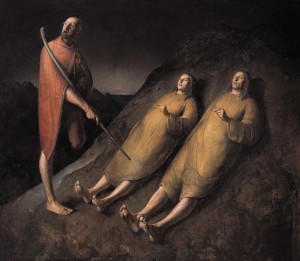 This is similarly clear on the other end of the spectrum from blinding us about fates we might rather avoid: There is also the situation of precognizing an outcome or event in such a way as to impel us to fulfill that outcome. Post-selection also explains why there can be a kind of bootstrapping in which the future seems to cause the past that causes the future, in a senseless loop—kind of like Macbeth’s desperate efforts to fulfill the witches’ prophecy of becoming king. As Macbeth shows, Wyrd entails a kind of neurotic, mechanistic or automatistic responsiveness, or pre-sponsiveness, in the face of prophecy. Generally, we would misinterpret our unconscious foresight as simply inspiration: having a thought to do or seek a thing and then being rewarded by going and achieving it. In these cases—indeed in many cases of artistic and other kinds of creativity—I suspect that “inspiration” is our classical-causal camouflage for prescience in action (what I have elsewhere called “prophetic jouissance”).
This is similarly clear on the other end of the spectrum from blinding us about fates we might rather avoid: There is also the situation of precognizing an outcome or event in such a way as to impel us to fulfill that outcome. Post-selection also explains why there can be a kind of bootstrapping in which the future seems to cause the past that causes the future, in a senseless loop—kind of like Macbeth’s desperate efforts to fulfill the witches’ prophecy of becoming king. As Macbeth shows, Wyrd entails a kind of neurotic, mechanistic or automatistic responsiveness, or pre-sponsiveness, in the face of prophecy. Generally, we would misinterpret our unconscious foresight as simply inspiration: having a thought to do or seek a thing and then being rewarded by going and achieving it. In these cases—indeed in many cases of artistic and other kinds of creativity—I suspect that “inspiration” is our classical-causal camouflage for prescience in action (what I have elsewhere called “prophetic jouissance”).
Such situations (which I described as “atemporal feedback loops” in my series on rethinking synchronicities) sound paradoxical, kind of like the grandfather effect, but actually an effect that ensures (rather than prevents) its cause is the opposite of a paradox, even if it challenges our “one thing after another” model of how things happen in a billiard-ball universe. This kind of tautological relationship between the effect and its cause would actually be an expected sort of formation in a universe containing precognitive agents. It may be precisely how complex systems like life arose, as I’ll argue in the next post.
The Hysterical Universe
Here’s where it gets really exciting: Post-selection might also help us understand PK and other tricksterish mind-over-matter phenomena that closely attend prophecy.
The tendency for weird physical manifestations to surround powerfully precognitive individuals suggests that the universe may be straining, hysterically, to protect the timeline.
In my earlier post on sleep paralysis and OOBEs, I raised the question of precognition’s possible relationship to apports and other PK phenomena, such as my “astral foot” possibly knocking over a rock in my study during an OOBE … or not. My limited experience has inclined me to think that what seems like astral journeying is really very vivid precognition of a future real-life experience in the target locale … thus my astral foot was safely in my bed at the time the rock fell, and my electrified bodymind was precognizing a scene in my study precisely a year in my future—nowhere near the rock in either time or space.
The intuitive notion that the mind in an emotional state can “reach out” and muck with matter via some energy or disturbance in the “consciousness field” is, I think, an appealing, easily visualized idea but hard to square with physics as we understand it. However. according to some interpretations of post-selection, time travel—including time-traveling information—would sometimes produce anomalies, highly improbable events, precisely to protect the timeline from paradox. If you went back in time to shoot your grandfather, you would be thwarted somehow, even if it took a UFO to appear from nowhere, or bigfoot to leap out of the bushes and kill you, or (more plausibly) a manufacturer error at the bullet factory. The way precognitive information is held in our associative ‘premory’ protects the timeline, as I’ve shown, but inexplicable phenomena in our physical environment might also.
in other words, what if a powerful precognitive experience like one of those “Howitzer” long-range OOBE precognitions of an event a year in the future—an event that, because of its distance, would be particularly vulnerable to perturbation in a butterfly-effect universe—could actually “force reality’s hand” to produce an improbable or even outrageous physical effect that raises doubt about the precognitive nature of the experience and thus protects the timeline from interference?
PK, like other psi phenomena, tends to disobey our conscious intentions or yield very micro-sized effects. Its most dazzling manifestations seem to be oblique, like the bent spoons and stopped clocks (and weirder events like teleportation) that surround Uri Geller but which he cannot quite control. The tendency for weird physical manifestations like apports and poltergeists and “exteriorizations” to surround powerfully precognitive individuals—Whitley Strieber would be another example—suggests that the possible (post-selected) universe may be straining, hysterically (i.e., “acting out”), to protect the timeline. (Coincidentally or not, hysteria characterizes the personality of many of those highly psychic individuals too.)
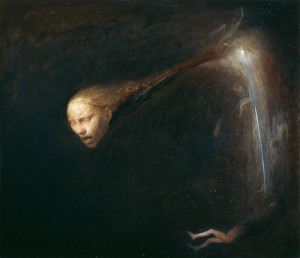 The displacement of my specularite from its perch, for example, precisely supported the standard OOBE interpretation of the experience, distracting me from any suspicion that it had a precognitive dimension. Had I suspected precognition, I might have done more to try and confirm its target and thus potentially altered my destiny. PK may be the probabilistic recoil of psi’s big guns, in other words. No “subtle bodies” are needed, just a “queering” of ostensible randomness toward the nonrandom. I find such a hysterical-causal pathology around prescience more believable than invisible pseudopods reaching out from our bodies to bang on stuff and knock things off the shelves … but that’s just me.
The displacement of my specularite from its perch, for example, precisely supported the standard OOBE interpretation of the experience, distracting me from any suspicion that it had a precognitive dimension. Had I suspected precognition, I might have done more to try and confirm its target and thus potentially altered my destiny. PK may be the probabilistic recoil of psi’s big guns, in other words. No “subtle bodies” are needed, just a “queering” of ostensible randomness toward the nonrandom. I find such a hysterical-causal pathology around prescience more believable than invisible pseudopods reaching out from our bodies to bang on stuff and knock things off the shelves … but that’s just me.
This is why I tend not to think of the “supernormal” as some realm of latent powers that humans are destined to develop more fully as the “next phase in our evolution” (a la Frederic Myers). For precognition to exist, it has to be mostly hidden, protected by dense layers of psychological and social resistance that would compel us to see its effects as anything but seeing or knowing the future. Future psi wizards are not going to be X-Men or Jedi Knights waving their hands to levitate stuff; they’re going to be, basically, furtive psychomagicians and chaos magicians engaged in weird rituals to program their own unconscious in private and idiosyncratic, highly weird, ways.
A Causal Immune System
The social unacceptability of psi and the paranormal to button-down minds is not only that it involves liminal (category-defying) subjects, as George Hansen argues in his monumental study The Trickster and the Paranormal. I think it goes even deeper: It is that the real process and mechanism that (I argue) must underly some or maybe even all of these phenomena—precognition—trespasses on our most basic understanding of causality and seems to invite paradox, which is the most loathsome thing to a rational person. It is why prescience, of all psychic phenomena, is especially taboo: It is essentially a temporal analogue of incest. Oedipus, as I’ve argued elsewhere, was an ancient gedankenexperiment about prophecy and causality, linking foresight both to the (grand)father paradox and to forbidden enjoyment.
Since the beginning, humans have talked about gods and spirits and spirit worlds and telepathy, without understanding that we are really talking about the tunneling into our own future timelines enabled by the quantum brain.
Paranormal phenomena survive in a post-selected universe precisely by introducing doubt, and mucking with our ability to settle on the right explanation. It’s possibly even their function: Some PK effects could be “high improbabilities” generated by the activity of our precognitive faculty. This may be part of precognition’s camouflage, an essential aspect of the way precognition survives as an adaptive trait in sentient, willful organisms like ourselves. When we know too much, we’re f***ed. Which also explains the link between the paranormal and paranoia: We instinctively know that this zone of taboo-defying phenomena is dangerous, and the universe’s immune system might not like us peering too closely. (It would be not too unlike the Strugatsky brothers’ wonderful novel Definitely Maybe, about a cosmic immune system against advanced science, and perhaps also not too unlike Jacques Vallee’s control system hypothesis.)
 Every culture, at all times, has misunderstood the power of prescience. Even when they acknowledge that it sometimes occurs (as nearly all besides ours do), it is this repulsive paradoxicality that deters people from pondering the mechanisms, the “how.” It is precisely the line of inquiry blocked by that Timeline Guardian, the Trickster, who sends us off in every other possible direction than the future. Since the beginning, humans have talked about gods and spirits and spirit worlds and telepathy, without understanding that we are really talking about the tunneling into our own future timelines enabled by the quantum brain. The Greeks of Sophocles’ time, for instance, thought that prophecy had to be supplied by the gods, not directly perceived by the seer.
Every culture, at all times, has misunderstood the power of prescience. Even when they acknowledge that it sometimes occurs (as nearly all besides ours do), it is this repulsive paradoxicality that deters people from pondering the mechanisms, the “how.” It is precisely the line of inquiry blocked by that Timeline Guardian, the Trickster, who sends us off in every other possible direction than the future. Since the beginning, humans have talked about gods and spirits and spirit worlds and telepathy, without understanding that we are really talking about the tunneling into our own future timelines enabled by the quantum brain. The Greeks of Sophocles’ time, for instance, thought that prophecy had to be supplied by the gods, not directly perceived by the seer.
A few ancient philosophies do however veer excitingly close to a god-free vision of Wyrd, our ironic and mysterious relation to the future. The Yogacara science of mind, with its “substrate consciousness” where the seeds of Karma are planted comes very close. My friend Alex van Oss (who did the illustration at the top of this post) alerts me that in the Caucasus the concept of Kebzeh (“the law of cause-effect and effect-cause”) is very similar; one of its principles, “produce the effect and the cause will follow” could really be another way of phrasing post-selection. In Europe, Hegel articulated a similar idea, with his retrospective understanding of history; and Freud came daringly close when he mapped the unconscious and philosophers like Sartre rightly asked “where is this unthought thought occurring?” As I argued, the question should really be “when?”
NOTE:
* Here’s a particularly good example of the mismatch between triviality and significance that contributes to our nonrecognition of the precognitive nature of dreaming. One morning a couple years ago I wrote down all I could remember of a dream that felt like some Central European (Czech or Polish) New Wave film from the 1960s, black and white, about a couple on vacation, a car at an intersection, and something about a sailboat on a lake—almost more of a vague impression than anything narrative I could pin down. A moment’s reflection on waking told me it was actually a specific movie I had dreamed of: Knife in the Water by Roman Polanski. It had been many years since I’d seen it, and I really just had a fuzzy recollection limited to the images and ambience of my dream. (I’d always vaguely confused Polanski’s film with Plein Soleil, the 1960s adaptation of Patricia Highsmith’s novel The Talented Mr. Ripley.)
Okay, I went to work and sometime mid-morning, probably about 10:30, I went into the small kitchen to get the serrated knife (it’s a sparsely appointed office kitchen, and there’s just one such knife) to cut and peel my apple. What should I encounter but the sink backed up, and a single object gleaming at me at under about four inches of gray dirty water: the serrated knife I wanted. Often the referent of dreams isn’t obvious at first, but this one struck me immediately on seeing the “knife in the water” like that: Information about this minor annoyance/upheaval in my morning had entered my unconscious “premory” and triggered an association to that Polanski movie; thus my brain concocted a little image to pre-present this event (or more accurately, the gestalt of my event and my very slightly depressed reaction to it) about 3 or 4 hours in advance.
A dream feels like a big immersive experience. Naively, it seems odd that the brain would “go to all the trouble” of representing something as trivial as a knife in a clogged sink using something as “big” as, in this case, a movie scenario about a couple’s eventful holiday on the water—as if such an image is, itself, kind of a “production” requiring actors, a set, and props, etc. But a moment’s thought shows how silly that is: For the brain there was no effort whatsoever in triggering a few neurons associated with that old Polanski film. This same apparent mismatch of scale and significance has been the mental block for many people, including Frances Yates, in imagining the usefulness of the art of memory too. A mnemonic image seems somehow effortful, like a big elaborate stage play, so how could it be an efficient method of learning? In fact it’s just the activation (via free association) of a tiny handful of items already in your head. Once you start doing it, you realize how effortless it is.
Given the immersiveness of dream experiences, we also naively assume that they unfold in something like real time. In fact, the few images in my dream could have been a brief flicker of cortical activity lasting a few seconds or even just a few milliseconds. When we realize we spend a couple hours each night dreaming, and any given dream we actually remember may represent just a tiny, tiny fraction of that cortical activation, then it becomes easy to imagine how we could be metabolizing all of our daily experience—both of prior days and subsequent days—in the course of a night. Dreams are easy for the brain, not a “production” in any sense of the word.
Altered States of Reading (5): Kirk Allen of Barsoom
What could any Other know of the up-and-out? What Other could look at the biting acid beauty of the stars in open space? What could they tell of the great pain, which started quietly in the marrow, like an ache, and proceeded by the fatigue and nausea of each separate nerve cell, brain cell, touchpoint in the body, until life itself became a terrible aching hunger for silence and for death? – Cordwainer Smith, “Scanners Live in Vain”
Central to Harold Bloom’s theory of poetic/literary revisionism is the precarious artistic ego, which feels threatened by a brilliant predecessor. But even though the Freudian paradigm it is based on (and pretty much all of Western culture) insists that good health means maintaining intact ego boundaries, the ego is actually something many souls are capable of setting aside in experiences of higher union or cosmic consciousness. These ruptures are central in the history of religions, so why not other domains like writing (and reading)? When the ego ruptures, the negative aspects of the Real and the pain of jouissance flip or transform over into a kind of bliss and inspiration that may feel like (and may indeed be—we should remain open-minded) the channeling or downloading of information from some alien source. I described this for instance in the case of Allen Ginsberg, who experienced his ecstatic experience in college as a transmission directly from the mystical artist/poet William Blake.
The creative and the mystical or paranormal (or some indeterminate category where it is hard to tell what is really going on) is some kind of universal nexus in the domain of cultural creativity.
Jeffrey Kripal’s work (especially Mutants and Mystics) provides a good starting place for thinking about this kind of paranormal/mystical transmission in the world of literature, especially imaginative literature. Kripal uses the term “imaginal”—a word introduced by Victorian paranormal researcher Frederic Myers but made more famous by Islamist Henri Corbin—to talk about this nexus. In an a lecture that I can no longer locate on YouTube, Kripal describes a daisy chain of influence in which sci-fi and comic book writers draw on culturally-framed anomalous experiences for their art, which then shapes the anomalous experiences of their readers, which feeds back into art and re-shapes cultural framings of the paranormal, and so on—what he calls “the fantastic loop between consciousness and culture.”
I can think of no better example of such a fantastic loop than the famous case study “Kirk Allen” in Robert M. Lindner’s 1955 pop-psychiatry memoir The Fifty Minute Hour. This young man, described as a brilliant scientist working on a secret government project during the war (implicitly the Manhattan Project, which was surely a misdirection to disguise the subject’s true identity), was referred to Lindner in Baltimore because he was spending less and less time in actual reality and more and more time in an imaginary world that, it turned out, was based on an unnamed multi-volume pulp sci-fi epic popular at the time. Lindner describes how Mr. Allen, out of his obsession with this alien world and his confused belief that it was actually about him, had, after he got to the end of his “biography,” continued writing “his” story and (to do the necessary research) habitually visited this other planet in a sort of dissociative state.
The doctor was stymied at first, because there seemed to be no reason for his clearly bonkers subject to stay in the real world—there were so many fascinating rewards in that other one, where he was a heroic ruler, married to a beautiful princess, etc. Thus there was nothing to induce him to see real reality for what it was. Lindner finally hit upon a novel therapeutic strategy: By entering the subject’s fantasy himself, taking an equally obsessive interest in it and, in the process, holding an uncomfortable mirror up to his patient’s behavior, perhaps he could gradually loosen its hold over the young man.
So he did … and it worked. And in what is surely one of the most interesting instances of psychotherapeutic countertransferrence ever documented, the doctor successfully got his patient to abandon his alternate reality, seeing it as false and pointless, but in the process developed his own deepening fascination and near-obsession with the interplanetary empire where his patient had been spending so much time. In the end, Allen breaks the spell for Lindner by admitting he made the whole thing up, although it’s unclear what he really believed earlier on.
In his book The Demon-Haunted World, Carl Sagan used this episode as a touchstone for thinking about supposed alien abductions as a kind of folie-a-deux between abductee and researcher: The abductee seduces the researcher into an alternate (and in Sagan’s mind, clearly deluded) reality or belief system, but the researcher then takes the ball and elaborates and deepens this new reality. Sagan thinks that Allen did Lindner a huge favor in the end, effectively rescuing the psychiatrist (who interestingly was an honorary fellow of the Fortean Society before his early death in 1956) from the fate of John Mack, whose reputation was damaged by credulity in a phenomenon some of his subjects too admitted to making up.
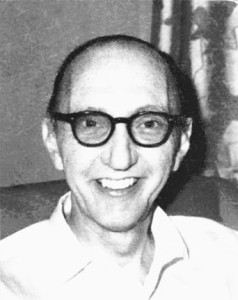 Based on the disguised description Lindner provides, it has been generally assumed that the sci-fi saga that obsessed and literally captivated his patient were Edgar Rice Burroughs’ stories about the Martian kingdom of Barsoom, which were first published in the pulps in 1912 and have remained popular to this day. But considerably adding to the interest and significance of Kirk Allen’s Martian adventures is his likely (although never conclusively proved) real identity. He is widely believed to have been, in actuality, the young Paul Linebarger, better known to generations of science fiction fans as Cordwainer Smith—one of the most interesting voices of mid-century sci-fi and a profound inspiration on younger writers like Ursula K. LeGuin. (And if his pictures are anything to go by, he was also about the least John Carter-ish person I could possibly imagine.)
Based on the disguised description Lindner provides, it has been generally assumed that the sci-fi saga that obsessed and literally captivated his patient were Edgar Rice Burroughs’ stories about the Martian kingdom of Barsoom, which were first published in the pulps in 1912 and have remained popular to this day. But considerably adding to the interest and significance of Kirk Allen’s Martian adventures is his likely (although never conclusively proved) real identity. He is widely believed to have been, in actuality, the young Paul Linebarger, better known to generations of science fiction fans as Cordwainer Smith—one of the most interesting voices of mid-century sci-fi and a profound inspiration on younger writers like Ursula K. LeGuin. (And if his pictures are anything to go by, he was also about the least John Carter-ish person I could possibly imagine.)
At the probable time of the therapeutic relationship described by Lindner, Lineberger’s day job was as a prominent government scientist, a specialist in psychological warfare working for the Pentagon; he had had an unusual upbringing in the Far East with somewhat close correspondences to what Lindner described for Kirk Allen. A psychologist named Alan C. Elms has written numerous blog posts and articles on Linebarger and evidently has done extensive research toward a definitive biography, and he has concluded that Linebarger indeed was probably Allen. It may make some sense of the truly far-out imagination of the writer known for his elegaic future histories of The Instrumentality of Mankind that he could have cut his chops writing excessive notes elaborating Burroughs’ elaborately envisioned alien empire.
Astral Travels
Assuming Kirk Allen was indeed Paul Linebarger/Cordwainer Smith, what makes the case triply interesting to me is the method of his fugue travels to this imagined/embellished alternate reality and how they matched the mode of travel used by his fictional alter ego.
 At the beginning of Burroughs’ Mars saga, in what was eventually published in book form in 1917 as A Princess of Mars, we are introduced to the series’ hero John Carter. In that first novel, Carter begins as a Civil War veteran prospecting with a compatriot in Arizona; after his companion is killed by Indians, Carter takes refuge in a cave, where he falls asleep and experiences the classic symptoms of sleep paralysis: He awakens but finds his body frozen, hearing a noisy presence behind him that he cannot see. Eventually he gains use of his body, but finds that it is merely his astral body—his physical body is still lying on the cave floor.
At the beginning of Burroughs’ Mars saga, in what was eventually published in book form in 1917 as A Princess of Mars, we are introduced to the series’ hero John Carter. In that first novel, Carter begins as a Civil War veteran prospecting with a compatriot in Arizona; after his companion is killed by Indians, Carter takes refuge in a cave, where he falls asleep and experiences the classic symptoms of sleep paralysis: He awakens but finds his body frozen, hearing a noisy presence behind him that he cannot see. Eventually he gains use of his body, but finds that it is merely his astral body—his physical body is still lying on the cave floor.
In his astral body, Carter goes to the front of the cave, where he sees Mars on the horizon—as a warrior, it is his personal star—and he focuses his attention and will upon it: “I closed my eyes, stretched out my arms toward the god of my vocation and felt myself drawn with the suddenness of thought through the trackless immensity of space.” Through many adventures over ten years while his Earth body slumbers in the Arizona cave, the Martian avatar of John Carter, after awakening in Barsoom, marries a princess and eventually becomes its ruler.
According to Chris Knowles (in Our Gods Wear Spandex), this detail of astral projection (as well as numerous other motifs in Burroughs’ work) betray a likely familiarity with Theosophy, which made a big deal of this exact mode of locomotion across space. Writers on the subject frequently noted astral projection’s continuity with what was then called “catalepsy”—i.e., waking up paralyzed, experiencing vibrations and frightening noises, and only with difficulty separating the astral body from the physical, just as Burroughs describes. Otherwise, Burroughs would have had to have a direct personal experience with journeying out of his body, as his account of the experience is highly “realistic,” as anyone who has suffered sleep paralysis and its occasional out-of-body sequelae knows. Also, traveling etherically or astrally is described in all the literature on the subject as a simple matter of willing one’s astral body to the location desired.
Crucially, this same method is followed by Lindner’s patient Kirk Allen in the dissociative states that led him to be referred for psychiatric help. Allen describes to the doctor how, when he got to the end of the series of novels—which had essentially (he thought) been describing his own life—he went ahead and began writing the continuation of his interplanetary life story. It started as a vivid anamnesis, a method he says he developed of distinguishing imagination and recall—literally “remembering” facts of his alter-ego’s ongoing biography as though they were his own memories. But at one point, while working on a map of the distant empire he ruled, he found himself unable to remember a significant detail from a photograph taken on one of his adventures but filed away (he knew) in a locked room inside his palace on the distant planet. He felt a sense of frustration that he couldn’t remember it accurately.
“I thought of those blasted photographs stuck away there in a place no one but I could get to. I wracked my brains trying to recall the landscape I had flown over, and the pictures I had glanced at casually before putting them away. No use. I was furious. I cursed myself for not looking at them more closely when I had them. And then I thought: ‘If only … if only I were there, right now, I would go directly to those files and get those pictures!”
“No sooner had I given voice to this thought than my whole being seemed to respond with a resounding ‘Why not?’—and in that same moment I was there.”
He describes how, finding himself fully within the body of his alter ego, he rose and went to the secret room in his palace and looked at the pictures he had been remembering.
“It was over in a matter of minutes, and I was again at the drawing board—the self you see here. But I knew the experience was real; and to prove it I now had a vivid recollection of the photographs, could see them as clearly as if they were still in my hands, and had no trouble at all completing the map.
“You can imagine how this experience affected me. I was stunned by it, shaken to the core, but excited as I had never been. In some way I could not comprehend, by merely desiring to do so, I had crossed the immensities of Space, broken out of Time, and merged with—literally become—that distant and future self whose life I had until now been remembering. Don’t ask me to explain. I can’t, although God knows I’ve tried! Have I discovered the secret of teleportation? Do I have some special psychic equipment? Some unique organ or what Charles Fort called a ‘wild talent’? Damned if I know!”
 Note that “immensity of space” is the phrase used by Burroughs too to describe the psychic crossing. Here again, the method as well as the strong emotions coming with it strongly resemble accounts from psychic research of astral travel/OOBEs—specifically the astonished excitement—as well as the sense of “verification” that it brought him. In this case, of course, there is little possible or plausible objectivity to this verification, since he was traveling to a place we are to assume never existed but in the pages of Burroughs’ novels. Or did his obsession create a kind of tulpa of Barsoom?
Note that “immensity of space” is the phrase used by Burroughs too to describe the psychic crossing. Here again, the method as well as the strong emotions coming with it strongly resemble accounts from psychic research of astral travel/OOBEs—specifically the astonished excitement—as well as the sense of “verification” that it brought him. In this case, of course, there is little possible or plausible objectivity to this verification, since he was traveling to a place we are to assume never existed but in the pages of Burroughs’ novels. Or did his obsession create a kind of tulpa of Barsoom?
The Fractal Geometry of Paul Linebarger
If we are not enough dizzied by the spirals of alter-egos and pseudonyms in Paul Linebarger’s (probable) life story—Linebarger believing himself to be John Carter of Mars and disguised by his therapist as Kirk Allen, ultimately to adopt the pen name Cordwainer Smith—there is also here a dizzying recursiveness of the mode of travel between real and imaginal and fictive worlds that is layer- or onion-like: a fractal geometry of reading and writing, imagination and anamnesis, influences and inspirations and revision and re/unnaming. What (the f***) are we to make of this? Is something trying to hide? Or is something trying to be born?
 It does seem like Linebarger/Smith/Allen had a lot he felt he needed to hide. Besides his constant astral projecting into a fictional universe, he also appears to have had sexual hangups and gender quirks that his era was not ready for. According to Elms (in an interesting article in the journal Science Fiction Studies called “Building Alpha Ralpha Boulevard”), Linebarger alienated his first wife by assuming a female alter-ego in some of his early writing and by cross-dressing in her presence. Nothing like this appears in Lindner’s chapter on Kirk Allen, but Lindner does interpret his divorce from reality as a defense against normative sexuality in the aftermath of an adolescent semi-trauma of being used sexually by an older woman. Lindner reports that his patient had had no further sexual experiences since adolescence and that on one occasion he astrally projected to his distant planet to avoid a sexual encounter with a female scientist colleague he had been platonically dating.
It does seem like Linebarger/Smith/Allen had a lot he felt he needed to hide. Besides his constant astral projecting into a fictional universe, he also appears to have had sexual hangups and gender quirks that his era was not ready for. According to Elms (in an interesting article in the journal Science Fiction Studies called “Building Alpha Ralpha Boulevard”), Linebarger alienated his first wife by assuming a female alter-ego in some of his early writing and by cross-dressing in her presence. Nothing like this appears in Lindner’s chapter on Kirk Allen, but Lindner does interpret his divorce from reality as a defense against normative sexuality in the aftermath of an adolescent semi-trauma of being used sexually by an older woman. Lindner reports that his patient had had no further sexual experiences since adolescence and that on one occasion he astrally projected to his distant planet to avoid a sexual encounter with a female scientist colleague he had been platonically dating.
Linebarger’s fiction does seem to me to be the work of a misfit very like the young Kirk Allen, comfortable with ideas and books and cats and alien cultures … and talking cats … but totally ill at ease in his own skin. For instance, his 1945 story “Scanners Live in Vain” (which would have been written not too many years after his therapy with Lindner, if he was indeed Kirk Allen) is about star pilots who endure the agony of space by severing all contact with their bodies, living like numb automata:
“The brain is cut from the heart, the lungs. The brain is cut from the ears, the nose. The brain is cut from the mouth, the belly. The brain is cut from desire, and pain. The brain is cut from the world. Save for the eyes.”
The button-down era when Kirk Allen visited Lindner was light years distant from our world of SF fandom, with its exuberant embrace of creative rewriting in the form of fanfic, as well as various forms of online and real-world role-play. At the time, the young man’s active fantasy life and lifestyle could only have been seen as full-on nuts, and Lindner is not at all embarrassed to use terms like “insane” and “mad” when describing him. The lack of any accepted cultural form or idiom for expressing his identification with a fictional (super)hero ensured that his ecstasies or reveries (or whatever we want to call them) remained an embarrassing private pathology whose intrusion on his professional or romantic/sexual life could only be damaging. Perhaps some future Foucault of the mystical could tell us whether this medicalized repression of Linebarger’s creative relationship to Burroughs’ fiction was actually ‘productive’ of something in the way of sexual desire, creative verve, or even psychical ability. Might the non-social-acceptability of his obsessions have facilitated some kind of psychic or mystical wild talent that today’s slightly more liberal atmosphere would have the effect of neutralizing?
Fitting in to one’s society is an important part of happiness, so Kirk Allen’s astral traveling to the self-created tulpa of Barsoom was certainly an impediment to his life. In Lacanian terms, his literary-imaginative jouissance had to be curtailed, subjected to the sociable logic of the pleasure principle, to restore him to health. But while we do get the sense that something in him was indeed cured, freed to progress in a more “normative” (in I suppose a good way) direction—which would enable him to thrive, have a family, pursue a writing career, etc.—one cannot read Lindner’s account nowadays and not feel that something extraordinary may have been killed in the process. We’ll never know if Lindner’s unorthodox treatment enabled the subsequent brilliant (but still too-obscure) career of Linebarger/Smith or inhibited it, and what other possibilities (or wild talents) it may have curtailed or redirected, for better or worse. Had Linebarger/Smith been able to consult a priest or a shaman instead of being referred to a psychiatrist for his habit of astral traveling to Barsoom, his life and his creativity may have turned out very differently.
 I do think it may be significant that Linebarger’s stories (as Cordwainer Smith) are set during or in the immediate aftermath of a milliennia-long period of Galactic peace—really, crushing bland conformity and a despiriting absence of danger and illness—under the “benevolent” totalitarian control of “The Instrumentality of Mankind.” I wonder if, like many creative spirits, Linebarger linked his muse to his psychic pain or ‘abnormality’ and thus had an ambivalent attitude to the psychotherapeutic cure(s) that had rectified and normalized his existence.
I do think it may be significant that Linebarger’s stories (as Cordwainer Smith) are set during or in the immediate aftermath of a milliennia-long period of Galactic peace—really, crushing bland conformity and a despiriting absence of danger and illness—under the “benevolent” totalitarian control of “The Instrumentality of Mankind.” I wonder if, like many creative spirits, Linebarger linked his muse to his psychic pain or ‘abnormality’ and thus had an ambivalent attitude to the psychotherapeutic cure(s) that had rectified and normalized his existence.
Whatever the case, the story of Linebarger/Allen is a complex maze of hidden and deferred identities, transferrences and countertransferrences, and redirected/sublimated sexuality. There is something powerful at work here, some model of the intersections of psychosexual exploration and creativity and mysticism and popular culture that relates to but also goes way beyond Bloom’s Gnostic/Freudian theory of misreading. All I know is, there is so much more I want to know about Paul Linebarger. On his blog, Elms promises he is writing a biography, although it appears it has been imminent for over a decade. I know too well how those types of projects go…
The Martian Imaginal
We can fit the curious case of Kirk Allen/Paul Linebarger within a long, fascinating, bizarre history of psychic engagement with the Red Planet (or the “Martian imaginal”). Books have been written on Mars’s place in our collective fantasies and in popular culture. A few key points include Helene Smith’s mediumistic communication with that planet in the late 19th century, described in Pierre Flournoy’s book From India to the Planet Mars. In turn-of-the-century sci-fi, there was, apart from Burroughs’ novels, also obviously H.G. Wells’ War of the Worlds, which later intruded on everyday reality through Orson Welles famously realistic radio adaptation.
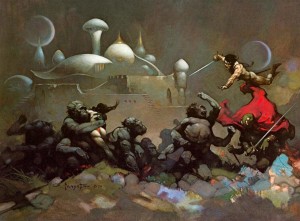 Then after Kirk Allen, there was comic artist Jack Kirby’s eerily prophetic anticipation of the “face on Mars” in a 1959 comic book, 17 years before the Viking probe photographed such an object. Later, thanks to Sagan, Mars played an arguably decisive role in galvanizing public attitudes toward nuclear weapons in the last decade of the Cold War, as its dust storms provided the astronomer with his idea and model of “nuclear winter.” Anomalists continue to speculate about the existence of an ancient civilization that destroyed itself or was destroyed in Mars’s watery past. Among the planets of our solar system, Mars is uniquely not only a mirror but, arguably, a psychic player in our culture and history.
Then after Kirk Allen, there was comic artist Jack Kirby’s eerily prophetic anticipation of the “face on Mars” in a 1959 comic book, 17 years before the Viking probe photographed such an object. Later, thanks to Sagan, Mars played an arguably decisive role in galvanizing public attitudes toward nuclear weapons in the last decade of the Cold War, as its dust storms provided the astronomer with his idea and model of “nuclear winter.” Anomalists continue to speculate about the existence of an ancient civilization that destroyed itself or was destroyed in Mars’s watery past. Among the planets of our solar system, Mars is uniquely not only a mirror but, arguably, a psychic player in our culture and history.
But more to my point, rather than trying to erase and rewrite his predecessor Burroughs’ engagement with that planet, the young Linebarger seems to have been happy inhabiting it, and evidently was only driven to creatively elaborate or embellish it because it ended too soon, before his “biography” was complete. Thus, to what extent does “anxiety of influence” really apply here? There is no way of answering that for certain without seeing the notes he created (and that Lindner himself got lost in). But Kripal’s picture of “fantastic loops” seems more apt: It is not simply the anxious creative genius that is wrestling with and distorting his/her predecessors; it is cultural forms, created (imperfectly) out of remarkable personal experiences—and also shaped and constrained by countless other cultural forces and semiotic systems—that distort or twist some pure current, which a budding artist was really trying to do justice to and honor even though he was an imperfect vessel in an imperfect world.
In other words, I see Kirk Allen/Paul Linebarger as genuinely trying to channel something that does not belong to him, and to actually get it right, and attempting in various ways to actually efface his ego in the process. Kripal has noted that mystical and psychic phenomena like clairvoyance and precognition are intimately connected to writing. The case of Kirk Allen, like that of Allen Ginsberg, suggests it’s clearly also connected to “spirit possession” in some, perhaps not completely literal, sense.
The creative and the mystical or paranormal (or some indeterminate category where it is hard to tell what is really going on) is some kind of universal nexus in the domain of cultural creativity, and Bloom’s “revisionism” maps just one small segment of a much wider and more interesting spectrum of creative (to put it mildly) reader response.
Psi’s Big Guns: Sleep Paralysis and Astral Time Travel
A year ago I wrote at length about out-of-body experiences (OOBEs) in the context of alchemy and the hermetic tradition. I confessed that I was a fence-sitter on the question of what they are—lucid dreams that just feel more real than most (i.e., corresponding to real physical environments) or actually what they feel like, some kind of dislocation of consciousness from the physical body in a “subtle” state. The latter is the doctrine and assumption of the Theosophical tradition and its modern heirs, including Robert Monroe and numerous other writers: Consciousness really leaves the body, they say, in some kind of etheric or astral envelope composed of a “fine” substance in between matter and energy. It’s a belief with ancient roots in Egyptian and Greek mysticism and European folklore, in the form of the detachable feminine spirit double.
 Subsequent experiences have deepened my perplexity and raised further doubts for me about whether they really represent a detachment from the physical body. I have been led to think more about their connection to my favorite topic, precognition, as well as to psychokinesis (PK).
Subsequent experiences have deepened my perplexity and raised further doubts for me about whether they really represent a detachment from the physical body. I have been led to think more about their connection to my favorite topic, precognition, as well as to psychokinesis (PK).
I have been particularly scratching my head over an OOBE I had a year and a half ago and that received “confirmation” of its veridicality almost exactly a year later, last August. It is thus far my only deliberately induced OOBE … and maddeningly, it opens itself up to multiple interpretations. Superficially, it does seem to confirm the “precognitive hypothesis” that I have been advancing in these posts. But it would be easy to read it in standard Jungian terms too, and in fact none of the readings can fully encompass the strangeness. It also has a possible mind-over-matter dimension.
It feels like a good opportunity to solicit the opinions and insight of my readers—crowdsourcing a “read” on my experience. So … readers, have at it!
The Backstory
I had been studying the literature on astral projection for the better part of a year by the time I achieved my first success at intentionally inducing one in late August, 2014. My favorite book on the subject is Sylvan Muldoon and Hereward Carrington’s 1929 classic The Projection of the Astral Body, an excellent collaboration between a frequent experiencer (Muldoon) and a psychical researcher (Carrington) who was able to put the young man’s numerous astral adventures in a theoretical and scientific context. (There are other fruitful collaborations between practitioners and theorists in the paranormal studies, the latest being Whitley Strieber’s collaboration with Jeffrey Kripal, The Super Normal, which I hope to discuss in a future post.) Other fascinating books have been written on the subject, particularly from the early and mid 20th Century. A few modern guides are also useful: I find Robert Bruce’s updated Theosophical metaphysics a bit iffy, but his guidebooks like Astral Dynamics have a lot of original and effective tips and tricks that show he knows what he is talking about from a practical point of view.
Precognition’s lack of familiar context would be the basis for the “uncanny” or “unhomely” that has always been associated with the paranormal: The future is the one source of information that really has no “home” for us.
My success in August 2014 was not my first OOBE—I had had one spontaneously 16 years earlier, before I was really even aware of the concept, although I did record it in detail in my dream journal (more on it below). I also had at least two OOBEs in my late teens or early twenties that were unfortunately unrecorded and I think were less detailed—just (amazingly and bafflingly) flying around the ceiling in my bedroom. Bruce would say, however, that we’re having these experiences nightly but just don’t remember them—and I think he’s probably correct.
Although I’ve consciously logged only a minute or two total of astral flight time in my life, I am no stranger to sleep paralysis, the universal precursor to OOBEs. I experienced sleep paralysis episodes frequently (and terrifyingly) as a young adult and periodically over the years since. My year of attempts at bringing on an OOBE produced several such episodes and also, on a couple occasions, pleasurable energetic or even “Kundalini”-type sensations traversing my body. Those alone confirmed that the guidebooks were not leading me astray. Typically these experiences led into standard lucid dreams, often in astonishing environments but without any veridical content that I could detect afterwards.
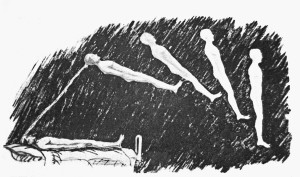 There is clearly something special about the OOBE state, and about sleep paralysis as its doorway; all the sources concur on the latter. The universally fearful aspects of sleep paralysis, or what used to be called “astral catalepsy,” only abate with experience and especially with reading experience, the ability to say “OK this is just sleep paralysis and nothing is really going to harm me.” The fear becomes a doorway to be pushed through, either into a lucid dream or, evidently when the stars align just right, something more.
There is clearly something special about the OOBE state, and about sleep paralysis as its doorway; all the sources concur on the latter. The universally fearful aspects of sleep paralysis, or what used to be called “astral catalepsy,” only abate with experience and especially with reading experience, the ability to say “OK this is just sleep paralysis and nothing is really going to harm me.” The fear becomes a doorway to be pushed through, either into a lucid dream or, evidently when the stars align just right, something more.
A Heavy Cat
My OOBE in August 2014 was preceded by a sleep paralysis episode, but it did not follow the typical pattern. Usually in such episodes it seems very much like my eyes are open (even though they usually really aren’t) and I am in my bed or the couch, or wherever I have fallen asleep, and cannot move. In this case, although I was in fact in bed, “I awoke” to find myself (or at least, my point of view) fixed down near the floor in a small closet next to the bedroom where my wife and I keep our vitamins, medicine, and miscellaneous toiletries, and where my wife stows several pairs of shoes. My gaze was facing a bunch of those shoes, of all things, and I felt I was being weighed down by a heavy cat that was on my back and that I could not see. I could not move or do anything, but felt initially immense fear that only gradually abated.
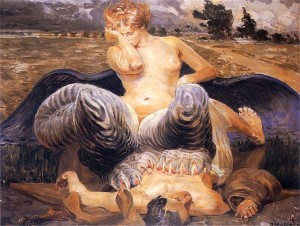 Feeling like you’re being weighed down by an unseen presence is very typical in sleep paralysis experiences—in some cultures, there is the belief that an “old hag” is sitting on your chest—but I had never actually interpreted my immobility as being “sat on” before, and never by a cat. It also felt like this weird and undignified situation was summoning some scary ESP power, some dark energy; I wrote in my journal afterward that it felt like the “other side” or like “black magic to complement my white, Zen practice.” I will come back to this weird and scary little prelude to the main show later. Actually, while I thought it was a prelude, it turned out to have much more significance in hindsight.
Feeling like you’re being weighed down by an unseen presence is very typical in sleep paralysis experiences—in some cultures, there is the belief that an “old hag” is sitting on your chest—but I had never actually interpreted my immobility as being “sat on” before, and never by a cat. It also felt like this weird and undignified situation was summoning some scary ESP power, some dark energy; I wrote in my journal afterward that it felt like the “other side” or like “black magic to complement my white, Zen practice.” I will come back to this weird and scary little prelude to the main show later. Actually, while I thought it was a prelude, it turned out to have much more significance in hindsight.
The sleep paralysis phase abated, replaced by what I considered to be the OOBE proper: I suddenly was hovering, very lucidly and clearly, without fear, up near the ceiling of my study, about ten or twelve feet down the hall from the medicine closet. The scene was totally realistic: It was dark, only illuminated by the streetlights outside, and I was gazing down over my desk through the window, past some tree branches, at the cars parked on the quiet street below. I was immediately aware that this was what I had been attempting for months—an actual full-on OOBE—and I felt jubilant. Following the instructions of Robert Bruce, I “kept my flight short” to ensure remembering it after I awoke, and thus turned and started to “fly” back toward the bedroom. As I turned away from the window, the visual experience faded and froze, almost like a glitchy videotape coming to an end (a strange peculiarity I have also noted when waking from lucid dreams) and then my wife shook me awake because, she said, I was “snorting” loudly.
That detail of “snorting” is significant, because my last, spontaneous OOBE, in 1998, also ended with my then-wife awakening me because I was, as she said (and as I recorded in my journal), “snorting like a pig.”
The 1998 OOBE too—although I did not at the time really know about OOBEs and just thought it was a strange nightmare—was set in the study of the house I then lived in in Atlanta. In that experience, I or my “astral body” was “sitting” in front of the study window, at night, able to see the trees outside, and I was holding in my left and right hand respectively a red and a white grease pencil. Somehow because I knew it would summon a dark, sorcerous power, I touched (I think) the tip of the white pencil to the tip of the red one, which seemingly caused an energetic short circuit that opened up a doorway to some kind of malevolent, possessing presence. The vibrations of it terrified me and that is what woke me up. The detail of the grease pencils (albeit not their terrible power to summon dark forces) was correct: I did have such grease pencils on or near my desk. In hindsight, this was clearly also an OOBE, as every other detail was totally realistic, which never occurs with standard dreams or even lucid dreams.
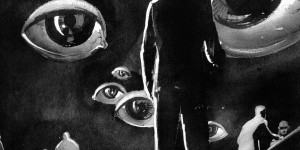 On the more recent astral trip into my study in 2014, just one detail seemed odd: Outside the window, somehow hovering in empty space between the window and the cars below, were two green points of light, right together, almost like eyes but stacked vertically or at an angle. I immediately had the sense of being watched by some kind of surveillance camera, but could see no box or device the lights were attached to. I thought there was a slightly ominous quality to these lights, almost like something disembodied and alien peering in at me. On waking, I recorded this feeling, along with a description of the whole experience, in my journal, and noted that the green lights cast a shadow of doubt over the veridicality of the experience, because they did not correspond to anything that was there in reality. The next night I looked out the window at the cars on the street to see if there was some dashboard light that I could have misinterpreted, or some electrical box affixed to a light pole or the tree, but saw nothing of the sort.
On the more recent astral trip into my study in 2014, just one detail seemed odd: Outside the window, somehow hovering in empty space between the window and the cars below, were two green points of light, right together, almost like eyes but stacked vertically or at an angle. I immediately had the sense of being watched by some kind of surveillance camera, but could see no box or device the lights were attached to. I thought there was a slightly ominous quality to these lights, almost like something disembodied and alien peering in at me. On waking, I recorded this feeling, along with a description of the whole experience, in my journal, and noted that the green lights cast a shadow of doubt over the veridicality of the experience, because they did not correspond to anything that was there in reality. The next night I looked out the window at the cars on the street to see if there was some dashboard light that I could have misinterpreted, or some electrical box affixed to a light pole or the tree, but saw nothing of the sort.
So, while excited to have finally achieved success at deliberate “astral projection,” and intrigued by the similarities to my experience in 1998, it didn’t answer any questions in my mind. It certainly “felt” real, felt like my consciousness had separated from my body and I was hovering in my study, but there was no way to prove this to myself, and the detail of those green lights lent a slightly dreamlike quality to the otherwise realistic scene. As for the prelude, the sleep paralysis episode-slash-lucid dream “set” in the medicine closet, I interpreted that as merely symbolic of the fact that, just before bed, I had consumed a cocktail of over-the-counter nootropic supplements that I frequently took to aid in bringing on lucid dreams. I thought no more of that part, because it didn’t seem significant at the time.
The true significance of this episode did not become apparent until a year—almost to the day—after the fact.
Astral Eyes
One night in late August, 2015, I found myself standing on a chair in my study, changing the light bulb in the late evening. I happened to look down toward the window, over my desk, and saw … a double green light. It was a reflection of my laptop power cord, which has a diode that glows green when plugged into the computer and charging. The reflection would have been invisible from any lower angle; it was doubled because of the double panes of glass. My point of view, high up on the chair, was identical to where my “astral eyes” had been positioned a year before in my OOBE.
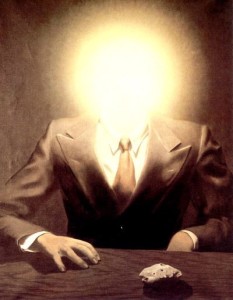 This was stunning: I immediately recognized this as “verification” of my OOBE. I had to check my journal to find the date, and was stunned, again, at the fact that it was just three days shy of a year since that experience.
This was stunning: I immediately recognized this as “verification” of my OOBE. I had to check my journal to find the date, and was stunned, again, at the fact that it was just three days shy of a year since that experience.
But immediately I also knew that there was a second possible interpretation: Was this really a confirmation of an OOBE or was the OOBE in fact “just” a precognitive experience of standing on a chair in my study and looking down at the green diodes reflected in my study window? If I had been a worthy paranormal researcher, of course, I might have photographed the scene initially after the OOBE, and that would have been able to confirm whether my laptop was charging on my desk that night a year earlier, potentially clearing up the ambiguity. Of course, no such luck—it never would have occurred to me.
Out of parsimony, but also admittedly partly because of vanity (I like my precognition hypothesis), I opted to side with what I consider to be the simpler of the two interpretations: The OOBE was indeed purely a vivid precognitive experience, not an actual journey out of my body. It raised the question for me whether many reportedly veridical OOBEs and near-death experiences are not in fact vivid (but misinterpreted) precognitive dreams of a later “scene of confirmation” in which the person happens to duplicate in real life the physical situation or scenario in the dream—perhaps precisely in the process of confirming their experience (in other words, the time-loop feedback effect I have discussed in several articles). Even with the 1998 case in Atlanta, I remember sitting down at my desk the next day and idly touching two grease pencils together, mimicking what I’d done in the dream, just out of curiosity … so that “OOBE” also could be interpreted in these terms.
Astral travel, in other words, seems to me more likely a form of time travel, not space travel.
But there are more layers to the weirdness, which add to its ambiguity.
A Very Bad Weekend
The weekend in 2015 when I happened to be changing the light bulb in my study was an emotionally very eventful one for my wife and me. A couple days previous, I had groggily awoken in the night to pop a couple of Advil, which we keep in the aforementioned closet down the hall from the study. In the process, I dropped one, and then couldn’t locate it amid my wife’s shoes.
I became increasingly desperate to find the pill, because one of my two cats will eat anything she finds, including medicines. She has done so before, resulting in expensive calls to the poison hotline. Unfortunately, she was indeed hanging out right behind the open door to the closet, and since I couldn’t locate the Advil in the closet, my immediate thought was that it had gone under the door and my cat had promptly swallowed it. A quick trip to my computer in the study, googling “advil” and “cats” confirmed that the former is poisonous to the latter. Increasingly frantic, I searched every inch of carpet in the hall outside the closet, but finally gave up.
 Long story short, I threw on some clothes and drove her to the 24-hour veterinary hospital and they admitted her. Unable to get her to vomit anything up, they put her on IV fluids to flush her system and try and prevent kidney or liver failure if she had indeed swallowed the pain reliever. The next two days, her condition was stable, but on her second night in the hospital, she had multiple life-threatening seizures. My wife and I were miserable—especially I was miserable, because I thought my carelessness had put my beloved cat’s life in jeopardy and she was now having to stay in a bedlam-like vet hospital with a lot of other screaming cats and dogs. Not to mention the fact that this fiasco was hemorrhaging our savings.
Long story short, I threw on some clothes and drove her to the 24-hour veterinary hospital and they admitted her. Unable to get her to vomit anything up, they put her on IV fluids to flush her system and try and prevent kidney or liver failure if she had indeed swallowed the pain reliever. The next two days, her condition was stable, but on her second night in the hospital, she had multiple life-threatening seizures. My wife and I were miserable—especially I was miserable, because I thought my carelessness had put my beloved cat’s life in jeopardy and she was now having to stay in a bedlam-like vet hospital with a lot of other screaming cats and dogs. Not to mention the fact that this fiasco was hemorrhaging our savings.
Here’s the thing: On the Monday morning I spoke to the vet and learned of our cat’s seizures and their decision that she couldn’t yet be discharged, I had a funny feeling about that Advil. It prompted me to return to the medicine closet and look one more time for the missing pill.
You guessed it. Unbelievably, there it was: not on the floor or in any one of my wife’s shoes, as it should have been, but sitting up on a narrow black binder or case standing against the wall of the closet. Its position made it look like a button on the case itself, and thus it would have been easy to overlook in my nocturnal panic two nights earlier. Somehow, it had bounced, probably off my shirt, and landed in a nearly impossible spot.
My first thought, I’m ashamed to say, was “Just don’t tell anyone.” Really, I felt bad enough already, and now it was clear that my cat had been hospitalized for nothing, and I felt like a fool. That thought passed in seconds, and I called the vet and told her frantically that I had found the Advil. The vet was silent for a second—she possibly thought I was crazy—and calmly reiterated that my cat would need to remain in the hospital and be monitored at least for another day, as she had had seizures. If she hadn’t actually swallowed something, then it meant she would need to go on anti-seizure drugs as she was clearly epileptic.
We brought our cat home the next day, I defied the various doctors and tapered her off the anti-seizure pills, and she’s been fine ever since. I don’t know what happened to her at the vet hospital, and I hope my carelessness with over-the-counter drugs never again results in such an awful and (for me) expensive misadventure.
It wasn’t until a few months later that the Advil episode and its possible connection to my sleep paralysis episode a year before dawned on me. Like I said, that part had been overshadowed by my successful OOBE, and I had written the “closet sleep paralysis” off as a prelude, “symbolic” of my having taken some supplements beforehand. But in hindsight, it proved to be the more significant of the experiences that night. Thank goodness for dated journals. I had clearly—there is no way of avoiding this interpretation—precognized the Advil affair: In the sleep-paralysis episode, my head was down by the floor, looking at my wife’s shoes, which is exactly what I did in fact do a year later, on the night I dropped the pain reliever. Moreover I had felt like “a heavy cat” was weighing me down; the cat in question, as it happens, is a bit plump (unlike our other cat). Feeling “weighed down” by her would certainly also correspond both to my anxiety over her possibly having eaten the pill and to my guilt that my negligence resulted in her miserable and seizure-inducing hospital stay.
That this part of the experience was clearly, unmistakeably precognitive supported the precognitive interpretation of the OOBE too. Other dream/visions in the context of sleep paralysis have confirmed for me quite strongly that sleep paralysis is a powerfully precognitive state. The terrifying mood or sense of an evil presence must be dissociated from the actual content of what you are seeing, doing, or trying to do in the dream. (Another more recent sleep paralysis experience also proved precisely veridical, although of a situation about 30 seconds after the dream, not a full year.)
Apports
After working with dream precognition for a few years, the precognitive nature of sleep paralysis and OOBEs surprises me not at all. But additional details lend this episode—or these linked episodes—a further paranormal twist, specifically opening the door to a topic I have avoided so far on this blog because my knowledge of the literature is admittedly much more limited. In my focus on precognition over the past couple years, I have mostly put off dealing with psychokinesis or PK phenomena, including poltergeist phenomena as a subset of those. But there may be a PK dimension to this “OOBE.”
The terror/feeling of “evil” in sleep paralysis phenomena may be the sleeping brain’s erroneous attempt to interpret information arriving from the future.
The shelves in my study contain numerous crystals and other rocks, not because I attach conventional mystical significance to them but simply because I like them and can’t help buying interesting items at rock shops whenever I return home to Colorado. A month before my OOBE, I had purchased a small slab of specularite (AKA specular hematite) in Estes Park, CO, and set it on a bookshelf in my study. Two days after the OOBE, I happened to discover that it had a crack running through it. I asked my wife about this, and she explained she had actually found it one morning on the floor at the base of the bookshelf, where it had evidently fallen in the night. Unfortunately, she couldn’t remember exactly which morning it was, but it had to be either the morning after my OOBE or the subsequent morning.
The only non-paranormal way that slab of specularite could have fallen on the floor is if one of my cats had knocked it off. But my mind obviously went to the stranger possibility that perhaps my “astral body” had dislocated it, perhaps when I whirled around to head back to the bedroom in my hurry to record my successful deliberate OOBE. I would have “flown” right past it on my journey. But of course, not knowing for sure which night it had fallen, I was again unable to come to any firm conclusions. But if my OOBE was “really” a vivid precognitive experience, as I later came to believe and as the more unmistakably precognitive experience with the Advil affirmed, then any involvement of the specularite at the time of the OOBE would be senseless. Right?
But … there is also the Advil itself, almost a year to the day later. Although I’m a PK believer, my skeptical side kicks in big time around certain phenomena such as “apports,” or objects that mysteriously just appear or change their location, as though teleported. Yet I am forced to admit, the mysteriously disappearing-and-reappearing Advil is awfully suggestive as an apport. I would like to think I just didn’t see it when I searched among my wife’s shoes, where I thought it must have landed (according to all laws of physics I know). Instead it landed somehow on a the spine of a narrow nylon binder, exactly in the middle, where it could easily look like a button or rivet.*
Or else, it vanished completely when I dropped it and it reappeared on that binder two days later. As with the specularite, there is no way to know for certain.
“Come play with us, Danny”
Here’s where the final baffling piece of this mystery comes in. I don’t even want to admit this part, because it points exactly to the Jungian stuff I keep doing my best to challenge on this blog. But here goes.
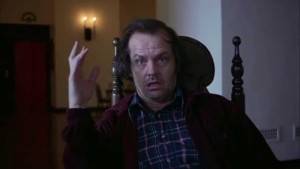 On the weekend in question, while my cat was in the hospital and the day before I found the Advil I had wrongly thought she had swallowed, my wife and I had some good friends over to watch The Shining. My friend is an astrologer and writer, and since both our wives were pregnant, we thought it would be fun to watch this movie about the supernatural horrors of writing and fatherhood.
On the weekend in question, while my cat was in the hospital and the day before I found the Advil I had wrongly thought she had swallowed, my wife and I had some good friends over to watch The Shining. My friend is an astrologer and writer, and since both our wives were pregnant, we thought it would be fun to watch this movie about the supernatural horrors of writing and fatherhood.
It’s one of my favorite films, and I’ve always been struck by Kubrick’s sophistication around the topic of the paranormal and possession. The most interesting scene, I think, is Jack Torrance’s terrible nightmare, from which Wendy has to rouse him. In the dream, he says, he was attacking and trying to kill their boy, Danny, and then her. Just then, Danny, in a kind of fugue or daze, his sweater ripped, wanders into the room where Wendy is consoling Jack. Wendy rushes to him, sees bruises on his neck, and then blames the bewildered Jack for attacking him. Later it turns out that the mysterious woman in room 237 had attacked the boy—presumably, exactly during the time Jack was having his dream.
Whether deliberately or not, this scene reflects the European folkloric belief I discussed in my earlier post: that our feminine spirit double can detach from our body when sleeping and perform actions and even make mischief on our behalf. Implicitly, it is Jack’s spirit double (the “old hag” in room 237) that attacked Danny, unbeknownst to either of them. Yet at the same time, Jack’s dream is also precognitive of what he will attempt to do to his family later in the film.
The detail that I uncannily keyed in on during this viewing was what immediately precedes this scene: Danny is playing on the carpet in the hallway, when from nowhere a tennis ball rolls toward him. It seems to come from room 237, the door of which is ajar, inviting him in. But the alert viewer will note that this is the same tennis ball that Jack hurled down the hall and out of sight days earlier, after working out his aggression by tossing it against the wall in the Overlook hotel lobby. In other words, it’s an apport. I had been thinking of this scene the next morning, and it is partly what prompted me to go look for the Advil again. The pill seemed to duplicate that tennis ball: disappearing and then reappearing, significantly.
 Our decision to watch The Shining that weekend was not spontaneous—we had prearranged this movie date weeks in advance—thus I cannot chalk it up to a “precognitive inspiration” on my part. The connection between the movie and the real-life emotional events of that weekend felt unmistakeably synchronistic in the standard, Jungian way. I’ve discussed synchronicities with my friend on several occasions and he would certainly have felt comfortable with the Jungian reading, whereas I think these experiences reflect misdiagnosed precognition—but admittedly, this one strained such an account. Even if I had indeed simply missed the Advil the first time, we could just say it was the tennis ball in the movie that inspired me to take a second look … but in that case, still, the fact that I had overlooked the pill days earlier again links weirdly to the movie.
Our decision to watch The Shining that weekend was not spontaneous—we had prearranged this movie date weeks in advance—thus I cannot chalk it up to a “precognitive inspiration” on my part. The connection between the movie and the real-life emotional events of that weekend felt unmistakeably synchronistic in the standard, Jungian way. I’ve discussed synchronicities with my friend on several occasions and he would certainly have felt comfortable with the Jungian reading, whereas I think these experiences reflect misdiagnosed precognition—but admittedly, this one strained such an account. Even if I had indeed simply missed the Advil the first time, we could just say it was the tennis ball in the movie that inspired me to take a second look … but in that case, still, the fact that I had overlooked the pill days earlier again links weirdly to the movie.
And then there’s the specularite. I had purchased it on one of my regular visits to the Ore Cart Rock Shop in Estes Park, CO, about a half mile from the Stanley Hotel, which inspired the Overlook Hotel in The Shining.
The Uncanny
I am left with many questions, obviously. Was the Advil an apport or did I just miss it on my first look? What about the specularite—did it just fall from the shelf or was it pushed … by a clumsy cat, or by my clumsy astral foot as I excitedly whirled around to head back to my sleeping body? Why do I always snort like a pig when waking from these experiences?** Does sleep apnea (which I do suffer from) help elicit them?
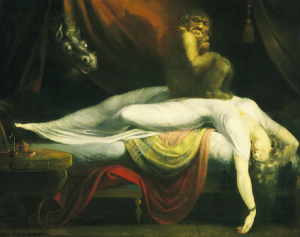 What about the “fat cat” weighing me down in the context of summoning evil power; was this just a sort of symbolic elaboration of my future guilt at putting my cat unnecessarily in the hospital because of a stray pain reliever, or was there a more precise significance: Was it actually my cat’s “spirit double” attacking me in the past (in pre-taliation, you might say, for putting her in the hospital), sort of the way Jack’s feminine spirit double attacks his son?
What about the “fat cat” weighing me down in the context of summoning evil power; was this just a sort of symbolic elaboration of my future guilt at putting my cat unnecessarily in the hospital because of a stray pain reliever, or was there a more precise significance: Was it actually my cat’s “spirit double” attacking me in the past (in pre-taliation, you might say, for putting her in the hospital), sort of the way Jack’s feminine spirit double attacks his son?
What does not seem to be in doubt is the precognitive nature of these experiences. Whatever else is going on, the sleep paralysis episode was like countless other precognitive dreams I have experienced, except it was unusually vivid visually and its target was a full year in the future, not a day or two as is typically the case. It also targeted a more emotionally vivid episode in my life. If the target episode was specifically my finding of the Advil (versus my frantic search for it two nights earlier), then there was a distinct emotional trope or turning, a gradient from frustration to relief (but overlaid with other complex emotions), which is nearly always the case with precognitive dreams: They seem to be about not just strong emotions, but strong emotional turnings (usually, frustration or guilt to relief or excitement, or vice versa).
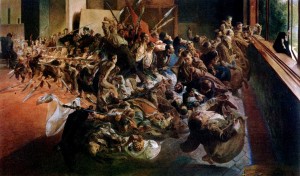 This experience left me with the suspicion that sleep paralysis and OOBEs are the “big guns” of precognitive dream phenomena. If most precognitive dreams about the sink backing up, the smoke alarm going off, or some piece of news on Twitter the next morning are like little insignificant Derringers, a sleep paralysis episode or a full-on OOBE is like a Howitzer, with much longer range and relating to events with bigger emotional impact. That the most gifted psychics (Pat Price, Joe McMoneagle, etc.) have traced their abilities to facility with OOBEs is no accident.
This experience left me with the suspicion that sleep paralysis and OOBEs are the “big guns” of precognitive dream phenomena. If most precognitive dreams about the sink backing up, the smoke alarm going off, or some piece of news on Twitter the next morning are like little insignificant Derringers, a sleep paralysis episode or a full-on OOBE is like a Howitzer, with much longer range and relating to events with bigger emotional impact. That the most gifted psychics (Pat Price, Joe McMoneagle, etc.) have traced their abilities to facility with OOBEs is no accident.
I think there is something important about the terror/feeling of “evil” in sleep paralysis phenomena: I suspect it may be the sleeping brain’s erroneous attempt to interpret information arriving from the future. Such information would lack the context and reassuring signal of past-ness and familiarity that our memories carry with them. Their lack of familiar context would be the basis for the “uncanny” or “unhomely” that has always been associated with the paranormal: The future is the one source of information that really has no “home” for us—it lacks any place in our life experience because it hasn’t happened yet. The semi-awake or sleeping brain may naturally interpret this real unfamiliarity as an evil or sinister presence. (The association of sleep-paralysis-type experiences and undeniable precognition in Whitley Strieber’s massively documented accounts of his experiences also leads me to this conclusion—more on this in a later post.)
Going forward, I am going to operate on the assumption that any feeling of fright/terror in a dream or similar experience may be a “tracer” or signal of incoming precognitive information. We’ll see where that leads.
NOTES:
* Oh yeah, one more odd, probably not significant detail: That black binder that the Advil magically landed on, at the side of the closet behind my wife’s shoes? It’s a binder that contains my wife’s extensive, near-complete collection of David Bowie CDs (including many rarities, imports, etc.). The entire past year, for both of us, was weirdly Bowie-themed, including some odd precognitive experiences around his death. (For instance he appeared to me in a dream a week before he died, staring significantly at me, like he was trying to tell me something, but he wouldn’t open his mouth.) Was Bowie’s spirit double somehow involved in relocating my Advil?
** After my 1998 OOBE, when I awoke in terror and “snorting like a pig,” my initial thought was that this episode reflected some attempt at spirit possession or witchcraft, possibly instigated by a healer/shaman I had met in Papua New Guinea several years before. The “pig” connection, and the possible symbolism of “grease” (the grease pencils) and the anthropologically significant idea of mixing red and white, blood and milk, somehow all pointed to this admittedly farfetched possibility of Melanesian sorcery. Pigs are a big, big deal in Papua New Guinea, and for mundane but personal reasons I’d rather not elaborate, I suspect I was not a particularly popular character in the village I’d stayed in for a few months.
Altered States of Reading (4): Ginsberg & the End of the Bookstore
Ralph Waldo Emerson warned, in his essay “Self-Reliance,” about the failure of most people to notice and follow their inner light or spark: “A man should learn to detect and watch that gleam of light which flashes across his mind from within, more than the lustre of the firmament of bards and sages. Yet he dismisses without notice his thought, because it is his.” In other words, we don’t pay attention to our own unique genius simply because it is our own—belonging to little old me, some dumb schlub.
The result of this self-denial is a particularly disappointing reading experience that is all-too-common if you have any kind of aspiration to express yourself originally: “In every work of genius,” Emerson writes, “we recognize our own rejected thoughts; they come back to us with a certain alienated majesty.” We are, when that happens, “forced to take with shame our own opinion from another.”
This frustrating experience of being scooped by some other writer is the kernel from which Harold Bloom spun a whole Gnostic-Freudian theory of literary criticism: Forget that the book we are reading may have been written years or centuries before we were even born; the unconscious has no sense of time. A strong or worthy writer (Bloom argues) feels deeply threatened by the texts that resonate most strongly with what he himself has to say, and those texts thus radiate with fascinating/horrifying sublimity, an “alienated majesty” (as Emerson put it), that must be resisted at all costs. Out of this feeling, what Bloom calls the “anxiety of influence,” the truly original creative genius feels driven by a competetive-destructive spirit that is another version of the son’s Oedipal wish to kill his father and replace him.
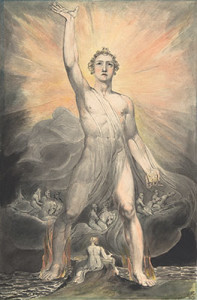 The energy of literary creation, in other words, is competetiveness arising from a desperate refusal of the writer’s own belatedness. This need to be original also distorts the writer’s reading of his predecessors; in the course of several books, Bloom applied this to the world of poetry and created what he called a “map of misreading”—a start toward a kind of literary genealogy of influence and its anxious defenses from literary fathers to their sons down through the centuries. When broadened beyond the narrow sphere of poetry, Bloom’s theory of literary revisionism offers a useful Freudian theory of cultural innovation that can be applied to many domains. I even suspect this precise anxiety may fuel precognitive experiences among writers who are unconsciously trying to scoop each other, as I have discussed in previous installments.
The energy of literary creation, in other words, is competetiveness arising from a desperate refusal of the writer’s own belatedness. This need to be original also distorts the writer’s reading of his predecessors; in the course of several books, Bloom applied this to the world of poetry and created what he called a “map of misreading”—a start toward a kind of literary genealogy of influence and its anxious defenses from literary fathers to their sons down through the centuries. When broadened beyond the narrow sphere of poetry, Bloom’s theory of literary revisionism offers a useful Freudian theory of cultural innovation that can be applied to many domains. I even suspect this precise anxiety may fuel precognitive experiences among writers who are unconsciously trying to scoop each other, as I have discussed in previous installments.
Bloom’s theory makes great sense of poetic and cultural creativity in the world of what might be called alpha creatives, who are generally male and who are universally obsessed with their own reputation and legacy—and this applies a bit to everyone insofar as we are humans and have egos and try to protect them. But I think it also may cause us to overlook more outrageous and even mystical altered states of reading in which the reader/writer’s ego is more permeable and receptive to “transmission” from literary forebears.
Ginsberg’s Initiation
If I could take any one piece of mystical writing and thrust it people’s hands and urge them to read it with all my pleading force, it would not be any of the spiritual classics or Zen writings piled in my study but, of all things, Allen Ginsberg’s 1966 interview in the Paris Review, in which the poet describes at great length a profound mystical state he experienced in 1945 while a student at Columbia University. I’ve read lots of accounts of ecstatic experiences, but this one gets me the most—it’s a touchstone I’ve returned to again and again since I first read it two and a half decades ago, not only for the beauty of Ginsberg’s insights but also for the simple humor and humanity with which he depicts the transfigured reality he experienced during a few ecstatic days as a young man.
Ginsberg is disarmingly blunt in his description: It began, he said, just after he had masturbated while idly reading the poetry of William Blake in his room. I quote at length:
And just after I came, on this occasion, with a Blake book on my lap—I wasn’t even reading, my eye was idling over the page of The Sunflower, and it suddenly appeared—the poem I’d read a lot of times before, overfamiliar to the point where it didn’t make any particular meaning except some sweet thing about flowers—and suddenly I realized that the poem was talking about me. “Ah, Sun-flower! weary of time, / Who countest the steps of the Sun; / Seeking after that sweet golden clime / Where the traveler’s journey is done.” Now, I began understanding it, the poem while looking at it, and suddenly, simultaneously with understanding it, heard a very deep earth graven voice in the room, which I immediately assumed, I didn’t think twice, was Blake’s voice … But the peculiar quality of the voice was something unforgettable because it was like God had a human voice, with all the infinite tenderness and anciency and mortal gravity of a living Creator speaking to his son. “Where the Youth pined away with desire, / And the pale Virgin shrouded in snow / Arise from their graves, and aspire / Where my Sunflower wishes to go.” … [L]ooking out at the window, through the window at the sky, suddenly it seemed that I saw into the depths of the universe, by looking simply into the ancient sky. The sky suddenly seemed very ancient. And this was the very ancient place that he was talking about, the sweet golden clime, I suddenly realized that this existence was it! And that I was born in order to experience up to this very moment that I was having this experience, to realize what this was all about—in other words that this was the moment that I was born for. This initiation.
 It is an experience and an insight that has been described countless times in spiritual literature, but what is unique in Ginsberg’s account are the particulars, the humor and specificity of it, and his linking it specifically to the act of reading and the mundane economy of books and learning, which lend it an authenticity and immediateness that more culturally or historically distanced accounts may lack.
It is an experience and an insight that has been described countless times in spiritual literature, but what is unique in Ginsberg’s account are the particulars, the humor and specificity of it, and his linking it specifically to the act of reading and the mundane economy of books and learning, which lend it an authenticity and immediateness that more culturally or historically distanced accounts may lack.
Ginsberg goes on to describe visiting the campus while in his transcendent frame of mind and his realization, upon leafing through another Blake book in the university bookstore, that this cosmic awareness is actually shared by everyone but that we hide it from ourselves and each other through the masks we wear. Again I quote at length:
I was in the eternal place once more, and I looked around at everybody’s faces, and I saw all these wild animals! Because there was a bookstore clerk there who I hadn’t paid much attention to, he was just a familiar fixture in the bookstore scene … But anyway I looked in his face and I suddenly saw like a great tormented soul—and he had just been somebody whom I’d regarded as perhaps a not particularly beautiful or sexy character, or lovely face, but you know someone familiar, and perhaps a pleading cousin in the universe. But all of a sudden I realized that he knew also, just like I knew. And that everybody in the bookstore knew, and that they were all hiding it! They all had the consciousness, it was like a great unconscious that was running between all of us that everybody was completely conscious, but that the fixed expressions that people have, the habitual expressions, the manners, the mode of talk, are all masks hiding this consciousness. Because almost at that moment it seemed that it would be too terrible if we communicated to each other on a level of total consciousness and awareness each of the other—like it would be too terrible, it would be the end of the bookstore … in other words the position that everybody was in was ridiculous, everybody running around peddling books to each other. Here in the universe! Passing money over the counter, wrapping books in bags and guarding the door, you know, stealing books, and the people sitting up making accountings on the upper floor there, and people worrying about their exams walking through the bookstore, and all the millions of thoughts the people had—you know, that I’m worrying about—whether they’re going to get laid or whether anybody loves them, about their mothers dying of cancer or, you know, the complete death awareness that everybody has continuously with them all the time—all of a sudden revealed to me at once in the faces of the people, and they all looked like horrible grotesque masks, grotesque because hiding the knowledge from each other. Having a habitual conduct and forms to prescribe, forms to fulfill. Roles to play. But the main insight I had at that time was that everybody knew. Everybody knew completely everything. Knew completely everything in the terms that I was talking about.
The Interhuman Church
Ginsberg’s ecstatic realization in the bookstore reminds me a lot of my favorite Polish writer, novelist and diarist Witold Gombrowicz, who throughout his work described masks as a way of managing the danger of human contact. (The most hilarious and memorable scene in his debut novel Ferdydurke, for instance, is a “grimace war” between two schoolkids.) Gombrowicz elevated the power and danger of other people into a kind of fetishistic religion, what he called the “interhuman church.” Throughout his writing he focused on the perverse ways people try to extract the energy of contact from others without paying their social dues, and how the forms through which we express ourselves are always these dishonest bottlings of our latent energy. (His stories and novels are weirdly like Seinfeld episodes from a different, much more uptight era.)
As I’ve written elsewhere on Gombrowicz: “Humanity has devised a billion ways of not contacting each other. Everything you look at, everything we’ve done or accomplished, can be seen as a way of avoiding contact. The Hebrews of the Old Testament kept God behind a curtain because to be in his presence, they thought, was fatal. I think really being in the presence of the human is fatal, so we create structures, channels, protocols, machines, to redirect the energy, redirect ourselves, and protect ourselves.”
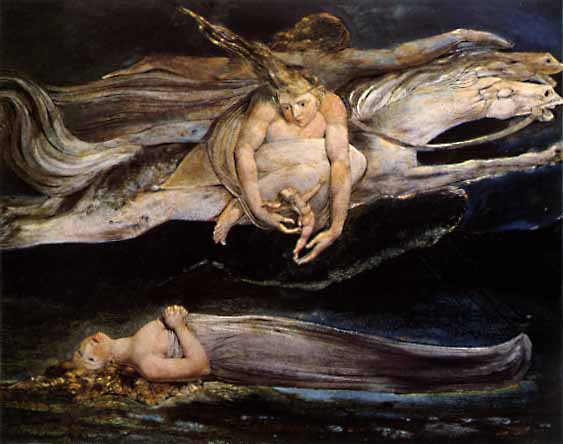 An interesting thing happens when you bottle the interhuman Real: It evolves a Form, just as an influx of energy does in any physical system. Forms—cultural forms, biological forms, behaviors, you name it—become possibilized, rationalized, rechanneled into acceptable constructs or formations that are, when you really peer in close (like peering into the grass in David Lynch’s Blue Velvet) seething with instability and danger. Cultural forms like art and poetry (and science and politics) are temporary unstable solutions, just as the individual ego is. We utterly depend on these constructs to contain the outrageous energies that are in us and that precede and surround us. Sometimes in the midst of visionary experiences, as in Ginsberg’s case, we have an insight into this fact, and see the human pathos behind the masks we wear and the systems we erect to protect us from the jouissance of the human Real.
An interesting thing happens when you bottle the interhuman Real: It evolves a Form, just as an influx of energy does in any physical system. Forms—cultural forms, biological forms, behaviors, you name it—become possibilized, rationalized, rechanneled into acceptable constructs or formations that are, when you really peer in close (like peering into the grass in David Lynch’s Blue Velvet) seething with instability and danger. Cultural forms like art and poetry (and science and politics) are temporary unstable solutions, just as the individual ego is. We utterly depend on these constructs to contain the outrageous energies that are in us and that precede and surround us. Sometimes in the midst of visionary experiences, as in Ginsberg’s case, we have an insight into this fact, and see the human pathos behind the masks we wear and the systems we erect to protect us from the jouissance of the human Real.
Ecstasy is another possible translation for jouissance: a feeling so excessive that it actually takes us out of our bodies (ecstasy comes from ek-stasis, to stand out or aside). The way language and social rules, including manners and structures of social interaction, function as a Symbolic screen against the interhuman Real is seen clearly in situations when those structures and rules are surgically removed.
Performance artist Marina Abramovic’s 2009 installation at MOMA, “The Artist Is Present” is probably the best example. For three months, gallery visitors could sit silently across from the artist in the gallery and gaze into her eyes. As shown in the film documenting this piece, many visitors were overwhelmed with emotion at this unmediated presence of another person; the experience seems to have been a religious one for many. It is essentially identical to the experience of receiving darshan (or “auspicious sight”) in the Hindu tradition: a gaze or a hug by a great guru or holy person that can provoke an ecstatic experience in the recipient. For a few months “The Artist Is Present” became the thing to experience in New York.
It may not matter that the giver of darshan is a guru or famous artist. L. Ron Hubbard clearly understood the power latent in interhuman contact for liberating our untapped potential. There is an early exercise in Scientology training in which participants sit across from each other without speaking (it is even depicted in Paul Thomas Anderson’s movie The Master). According to John L. Wilhelm (The Search for Superman), SRI psychic extraordinaire Pat Price traced his unique psi gifts to an out-of-body experience provoked by precisely this exercise. Jason Beghe reports in Alex Gibney’s Scientology documentary Going Clear that it had the same effect on him (even if without the psychic sequelae). So explosive is another human being’s mere presence, in other words, that just facing one without the usual social mores that structure our social encounters has the potential of actually liberating us from our bodies.*
Humanity is strong stuff.
Reading, Psi, and the Body
I have never had a full-on religious experience like Ginsberg’s while reading a book or wandering around a bookstore, but I’m no stranger to less extreme altered states of reading. The “intellectual high” is a real thing, for example: In the excitement of reading a particularly mind-blowing passage in a book I have often experienced semi-out-of-body experiences, where I feel myself to be drawn toward the text in front of me, hovering in the space between my face and the page—an odd body-dysmorphic feeling of being italicized. I assume other readers experience this slight dissociation. The joy of uniquely mind-bending writers like Phil Dick or Slavoj Žižek is not unlike that of Zen koans: to force a conceptual rupture and a mild ek-stasis.
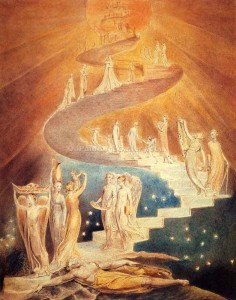 Even if a text does not seem literally about me, I also know the experience of hearing the words spoken in my head as though by the author; I’m surely not unusual in this, either. There is some way in which, in a state of intellectual excitement, the book in front of you—or the screen you’re reading on, or whatever the medium through which you engage with a text—is not enough; you want to pass into and through it, or you believe some direct communion with the author is possible. That frustration may in fact widen the aperture of psi.
Even if a text does not seem literally about me, I also know the experience of hearing the words spoken in my head as though by the author; I’m surely not unusual in this, either. There is some way in which, in a state of intellectual excitement, the book in front of you—or the screen you’re reading on, or whatever the medium through which you engage with a text—is not enough; you want to pass into and through it, or you believe some direct communion with the author is possible. That frustration may in fact widen the aperture of psi.
Jacques Vallee observed ESP effects in experiments he set up in the 1970s using computer networks. The sense of frustration at communicating through narrow channels of electronic mail and chat systems, on a keyboard and screen, produced what looked to him like real telepathy (although I’d suggest, without knowing the details, that it could really have been precognition of imminent confluences/coincidences of thoughts as manifested on the participants’ screens). Psi particularly seems to manifest when there is particular urgency and when ordinary modes of communication are unavailable or felt to be too-limiting. For me, precognition manifests routinely, almost daily, around Twitter, email, and the specific mild frustrations of following unfolding news events online.
I suspect mildly anomalous experiences of aesthetic or intellectual excitement that distort our psychic spacetime, as well as feelings of psychic connection to an author, are quite common yet are seldom discussed or described, simply because we lack a vocabulary for them. These small experiences are just one end of a continuum that includes the powerful sublime ecstasies that interest religion scholars like Jeffrey Kripal—a spectrum of energetic distortion of the powerfully enthralled or engaged bodymind that is conducive to psi.
A Time Machine
How many college students must experience similar things to what Ginsberg did: ecstatic states inspired by something profound they have read during that reading-intense four or so years of their lives—and perhaps even wandered through their campuses in an inspired haze, ending up in the bookstore—but lack sufficient cultural/spiritual/literary coordinates to triangulate the experience and articulate it to themselves, let alone others? How many such experiences are thus completely or mostly forgotten?
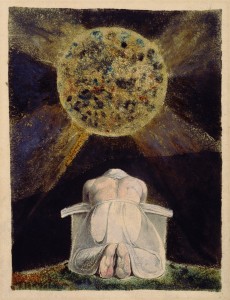 Fortunately for Ginsberg, he did have the necessary coordinates, thanks to his education and upbringing and interesting friends, as well as an ambition to become one of those people sharing their cosmic insights. “[M]y first thought,” Ginsberg says, “was this was what I was born for, and second thought, never forget—never forget, never renege, never deny. Never deny the voice no, never forget it, don’t get lost mentally wandering in other spirit worlds or American or job worlds or advertising worlds or war worlds or earth worlds. But the spirit of the universe was what I was born to realize.”
Fortunately for Ginsberg, he did have the necessary coordinates, thanks to his education and upbringing and interesting friends, as well as an ambition to become one of those people sharing their cosmic insights. “[M]y first thought,” Ginsberg says, “was this was what I was born for, and second thought, never forget—never forget, never renege, never deny. Never deny the voice no, never forget it, don’t get lost mentally wandering in other spirit worlds or American or job worlds or advertising worlds or war worlds or earth worlds. But the spirit of the universe was what I was born to realize.”
For the young poet, the experience of finding himself addressed and described in a text by Blake, lying on his bed with his fly unzipped, was nothing less than a transmission across time and space from the English mystic, bestowing an inheritance and a mission that he explicitly compared to the Zen fifth patriarch giving the begging bowl symbolic of his status to his successor Hui-Neng. He says:
The thing I understood from Blake was that it was possible to transmit a message through time that could reach the enlightened, that poetry had a definite effect, it wasn’t just pretty, or just beautiful, as I had understood pretty beauty before—it was something basic to human existence, or it reached something, it reached the bottom of human existence. But anyway the impression I got was that it was like a kind of time machine through which he could transmit—Blake could transmit—his basic consciousness and communicate it to somebody else after he was dead …
This “time machine” experience of literary transmission bestowed upon a lonely young student/poet in his little New York apartment a whole destiny to be the ecstatic American poet-prophet of the Self in the tradition of Whitman. It is a destiny that he went on to fulfill brilliantly.
I am not enough of a literary scholar to be able to tell whether the Bloomian features of misreading (of Blake, of Whitman) are evident in Ginsberg’s poetry, and Ginsberg was oddly overlooked by Bloom despite wide critical consensus that he belongs firmly in the “Western Canon.” But I have to think the emphasis on Freudian father-killing obscures a less “agonistic” channel of poetic-spiritual transmission. When I read Ginsberg’s exuberant, ecstatic poetry or even just his transcribed conversation, I detect a spring flowing unimpeded from somewhere else. It could be a universal cosmic inheritance that is being channeled by a particularly unhindered soul. It could simply be his own future, bigger, smarter, wiser self—which I have argued is the true identity of the Freudian unconscious and the real source of all our creativity.**
NOTES:
*It may be possible to extract some of this power just from staring at ourselves. The exercise of gazing into a mirror for a prolonged period, something I have always avoided because it feels unlucky, seems to produce interesting paranormal phenomena, as Chris Savia explored in this article.
**The scene of Ginsberg’s “transmission,” masturbating in his apartment, is appropriate. Slavoj Žižek often expresses the cynical-sounding Lacanian idea that sex is really masturbation with a partner. My argument that psi phenomena like telepathy may really be precognition with a partner probably sounds similarly cynical; but while it may ‘queer’ the Frederic Myers idea that psi is fundamentally about human connection across great distances, I think this hypothesis opens all kinds of new ways of thinking about the power of psi to enhance our “real world” connections to others.
Consider this: We can imagine a “lateral” psychic connection to other humans in the present moment, or we can realize that through such experiences we are being drawn toward tangible physical connection to other humans in our future. Without that IRL connection in the flesh (or the text), how can we ever know it was ‘telepathy’ in any case, and not some solipsistic fantasy (even if shared by both partners)? For me, that physical (or at least, physically mediated) connection to other human beings that psi orients us toward feels ultimately more redemptive, in any case.
Lost in Translation (or, Don’t Look for a Matrix of Meaning)
I have been arguing that present experience contains associative traces of emotional events ahead of us in time; we are detecting (faintly) the future—the real future, not just some imaginatively forecast future—at all moments, mostly beneath the level of conscious awareness. But because the retrocausality implied in this model is so “hard to think” (and culturally taboo), we prefer to interpret our future-sniffing faculty in all kinds of other, classically causal ways. We reframe precognitive visions as telepathy or clairvoyance or spirit mediumship or “past lives“; we reframe precognitive psychosomatic symptoms as manifestations of an off-stage unconscious; and we reframe the surprising, seemingly coincidental outcomes of our precognitive orientation as “synchronicities” stage-managed by a meaningful universe or higher intelligence.
My dream is that the psi ranger of tomorrow will learn to detect and recognize the bent twigs of her own passage ahead of herself in time and understand them for what they are.
Even many parapsychologists dislike the idea of precognition. This results in a funny effect of reserving precognition only for phenomena that absolutely cannot be accounted for through one of the other classical psi channels. My favorite psi guide, psychoanalyst Jule Eisenbud, fell prey to this reasoning: Although he brilliantly analyzed numerous instances of unmistakable “paranormal foreknowledge” displayed by his patients (and himself), he always assumed that if a patient dreamed merely about the contents of the next morning’s paper, for instance, it had to be a case of clairvoyance and not precognition as long as the paper had already been printed at the time of the dream.
I call this the “impossible by degrees” fallacy: If something is hard to think, we assume that nature likewise must find it strenuous to achieve. But if we grant the existence of precognition at all, there is no reason not to think that it is an ubiquitous operating principle in our lives. The problem is we have never had a theory that made it believable or palatable to mainstream scientific thinking.
Nonlocality, commonly invoked in parapsychology since the 1980s, sounds like it ought to fit the bill, but it cannot. All things in space and time may indeed be connected, but that fact doesn’t explain how the psi eyes of a remote viewer like Joe McMoneagle can home in on a Russian Typhoon submarine under construction, amid all possible pieces of information in the universe; he doesn’t know what he is looking for or even where (or when) the coded target is located—and thus has no basis from which to recognize the “right answer.” And quantum entanglement, the basis of nonlocality, cannot explain why a mother might have a vision of her own son dying on a battlefield; the particles that ever linked the two individuals would, as far as we know, have long since broken their special bonds due to the quantum promiscuity called decoherence.
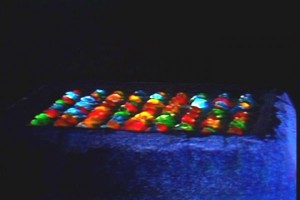 Although some psychics and psychical researchers have been tempted to see the mind as limitless or omniscient, or as somehow extensions of a higher (or deeper) collective (un)consciousness, I think this kind of explanation is a bit of a cop-out. It removes psi from the scientific pale, and it doesn’t really fit the data very well. Much evidence suggests ESP trades in intimate, idiosyncratic meanings that resonate across an individual’s unique timeline, not on something shared or exchanged across space and among people. “Extraordinary knowing” (to use Elizabeth Mayer‘s term) often can be shown to consist of knowledge that a psychic lacks direct access to currently but will acquire at some point thereafter, often imminently. Other paranormal phenomena like meaningful coincidences have a similarly personal, intimate character, and this should be the needed clue that these phenomena are fundamentally precognitive and likely linked to our own brain processes. It simplifies things considerably to think of them as phenomena related to memory. In fact, McMoneagle himself (in his book Mind Trek) came to exactly the conclusion I have been arguing: that somehow the psychic is sending him/herself information from a future point when the correct answer is learned. (Not surprisingly, the star remote viewer also reports a lifetime of extraordinary memory abilities.)
Although some psychics and psychical researchers have been tempted to see the mind as limitless or omniscient, or as somehow extensions of a higher (or deeper) collective (un)consciousness, I think this kind of explanation is a bit of a cop-out. It removes psi from the scientific pale, and it doesn’t really fit the data very well. Much evidence suggests ESP trades in intimate, idiosyncratic meanings that resonate across an individual’s unique timeline, not on something shared or exchanged across space and among people. “Extraordinary knowing” (to use Elizabeth Mayer‘s term) often can be shown to consist of knowledge that a psychic lacks direct access to currently but will acquire at some point thereafter, often imminently. Other paranormal phenomena like meaningful coincidences have a similarly personal, intimate character, and this should be the needed clue that these phenomena are fundamentally precognitive and likely linked to our own brain processes. It simplifies things considerably to think of them as phenomena related to memory. In fact, McMoneagle himself (in his book Mind Trek) came to exactly the conclusion I have been arguing: that somehow the psychic is sending him/herself information from a future point when the correct answer is learned. (Not surprisingly, the star remote viewer also reports a lifetime of extraordinary memory abilities.)
Thus despite my strong affinity with some aspects of New Age thinking, the scientist side of me is increasingly “anti” one of the strongest currents in that metaphysics, the idea of a transpersonal matrix of meaning connecting humans to each other and to objects, some oceanic amnion of significance in which we are all swimming, or a universal “field” of consciousness whose ripples somehow carry meaningful information across both time and space. This turns out to be a very hot-button issue, as shown in the reactions I sometimes get to these posts and in the forum discussion following my recent Skeptiko appearance. Many psi believers very much want to believe that we are ensconced in an intrinsically meaningful universe and that it is not simply, as I argue, our own meaning-making brains creating the meaning we seem to find in the world ready-made, such as in synchronicities.
In the Out Door
The matrix of meaning goes back, in the Western philosophical tradition, to Plato, who saw the real world imperfectly reflecting the perfect world of ideal forms. This basic idea is reflected in astrology and the hermetic tradition (“as above, so below”) and in the late Medieval theory of similitudes described by Michel Foucault in The Order of Things—a system of correspondences that maps nearly identically onto the tropes used by the dreaming brain in building our associative memory search system. That right there should be a big hint that when we think we see evidence of a meaningful universe, we are encountering our own cortical processes in reflection, a confusion of the subjective and objective.
As an inherently material phenomenon, meaning is really a false friend of any idealist wishing to unseat the dominant materialist paradigm.
The Platonic matrix of meaning has tempted an increasing number of modern theorists of consciousness, psi, and related anomalies. Ervin Laszlo’s “Akashic fields” idea and Rupert Sheldrake’s theory of “morphic fields” owe a great deal to Platonic (meta)physics. And many parapsychologists too adopt an implicitly or explicitly Platonic, matrix-of-meaning model, assuming that such a model is somehow the only possible explanation for psi. For example, in an essay in this past December’s EdgeScience, James Carpenter argues that psi implies
a universe of meaning that exists ‘out’ as well as ‘in.’ As Plato thought, meanings exist beyond the person and are not simply constructed by the person or by groups of people. In psi, we engage meanings that supersede any physical connection to the self. Yet we engage them, we are affected by them, we express implicit references to them. It seems that we find them much more than we make them, and we find them far beyond the normal bounds of the body and the current moment.
I love Carpenter’s “first sight” theory of psi, and agree with his basic argument that psi is not some extraordinary add-on to normal perception but reflects a fundamental substrate of sensation and awareness, basic to our survival. But as an anthropologist, I must challenge him on the idea of meanings existing beyond the person other than in materially instantiated symbols. Meaning is a semiotic phenomenon that is encoded culturally but is made by individual minds/brains; although codes can be transmitted in material form, meaning as such could not exist “outside the head” … and psi does not necessarily imply such an outside-the-head structure of meaning, even if it seems to at first glance.
All data from ethnography, psychology, human development, etc., point to meaning as particular and physically embodied, not transpersonal or reflective of an underlying unus mundus, as Jung phrased it (however appealing we may find such a notion). Cultural systems of meaning are particular to cultures and incommensurable across cultures—there is always something lost in translation. The very notion of a transpersonal or universal matrix of meaning runs counter to how meaning works and how it has to work: Just as there is no “language” as such but only specific languages, meaning is only, ultimately, when you zoom in, a plurality of meanings, which are semiotic in nature, resting ultimately on arbitrary (that is, artificial, made-and-not-found) distinctions within a larger symbolic system that has to be culturally transmitted.
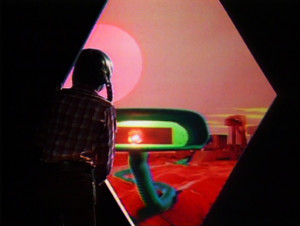 Making meaning requires imposing arbitrary divisions on otherwise smooth reality. Every meaning-bearing signifier reduces to an arbitrary attachment of a consensus value to some “cut” or distinction in a flow of matter or energy—for instance, a certain gesture in opposition to other possible gestures (or to no gesture), a certain sound in opposition to other possible sounds (or to silence), a certain shape in opposition to other possible shapes (or to emptiness), and so on. The ability of the cortex to pair such “distinctive features” (as they are known in linguistics) with associated values and link them to personal experience in memory is what imbues the world with meaning in the semiotic sense of the term. Meaning is information relative to a context and, most importantly, to a recipient who can use that context to decode and make sense of it, give it value.
Making meaning requires imposing arbitrary divisions on otherwise smooth reality. Every meaning-bearing signifier reduces to an arbitrary attachment of a consensus value to some “cut” or distinction in a flow of matter or energy—for instance, a certain gesture in opposition to other possible gestures (or to no gesture), a certain sound in opposition to other possible sounds (or to silence), a certain shape in opposition to other possible shapes (or to emptiness), and so on. The ability of the cortex to pair such “distinctive features” (as they are known in linguistics) with associated values and link them to personal experience in memory is what imbues the world with meaning in the semiotic sense of the term. Meaning is information relative to a context and, most importantly, to a recipient who can use that context to decode and make sense of it, give it value.
As an inherently material phenomenon, meaning is really a false friend of any idealist wishing to unseat the dominant materialist paradigm. It is a human creation, encoded in culture, made and re-made endlessly in the individual mind/brain. It is also necessarily subjective, dependent upon a particular point of view. As such, it cannot really be collective, other than in the sense of roughly (culturally) shared.
When the World Was Jung
The updated modern version of Plato is Jung, who is of course a sacred and nigh untouchable figure in New Age metaphysics. He also persistently creeps into parapsychological theorizing because his concepts seem to offer at least a useful vocabulary for talking about psi phenomena; his concept of the “collective unconscious” is, like the world of forms, a transpersonal matrix of meaning somehow uniting humans to each other and even to the physical environment. People love the idea of a universal field of energy and insight where basic symbolic motifs exist ready-made and shared, like a central library we all draw from. But what does it really help explain? And how could immaterial ideas “reach in” and shape our lives all on their own, for instance in synchronicities? He was unable to answer this—indeed as Arthur Koestler argued in his essential book, The Roots of Coincidence, he essentially resorted to a causal model but simply called it something different.
The idea of archetypes fast-forwarded past the really meaty questions of meanings and how they are fashioned, negotiated, and transformed in ritual and social action.
Hypostatizing “archetypes” was Jung’s biggest mistake, and it is the main reason that Jung, unlike Freud or Lacan, has zero relevance for today’s social sciences. Even at the time Jung wrote, the sublime complexity of cultural meaning systems as studied by anthropologists and linguists, coupled with the sublime ingenuity of the individual unconscious as mapped by Freud, could already easily explain the commonalities of symbolism that Jung detected in his patients’ lives and dreams and regularities across the mythologies of different cultures. The idea of archetypes fast-forwarded past the really meaty questions of meanings and how they are fashioned, negotiated, and transformed in ritual and social action, and how these processes might produce forms that recur from society to society despite no history of contact.
Meaning is ultimately personal; it takes social action to make it collective, and that making-collective must be renewed again and again in ritual. Meaning is something built up within us over the course of life and perpetually renewed in cultural experience; again, there is no universal language giving meaning to human thoughts prior to learning a language and the other meaning systems constitutive of culture. This is why anthropologists have long looked to Freud and the Freudian psychoanalytic tradition for a basic theory of symbolic motivation, or how culturally encoded symbols become meaningful to the person by linking to our instincts, needs, and drives, and how personal/private symbols conversely become public. Nobody in anthropology reads Jung (except maybe for pleasure), because he unfortunately put the cart of meaning before the horse of embodied cognition.
 If many cultural symbolic motifs are similar all over the world, it is because they reflect human existential universals. Sexual reproduction is basic and universal, thus all cultures symbolize and personify various functions central to sex, motherhood, fatherhood, etc.; conflict and war are universal, so cultures tend to have similar martial symbologies; ironic unconscious processes always trip us up, thus all cultures have a “Trickster”; and so on.
If many cultural symbolic motifs are similar all over the world, it is because they reflect human existential universals. Sexual reproduction is basic and universal, thus all cultures symbolize and personify various functions central to sex, motherhood, fatherhood, etc.; conflict and war are universal, so cultures tend to have similar martial symbologies; ironic unconscious processes always trip us up, thus all cultures have a “Trickster”; and so on.
It is nevertheless a human need to deep down believe in a larger guarantor of the arbitrary cultural meanings we were enculturated into. Jacques Lacan called it the “Big Other.” He assured us that the Big Other does not in fact exist, yet it may be a necessary illusion for users of culture to retain their faith in the symbolic currency of language and symbols—sort of the way a central bank declares and supports the value of its bank notes even if there’s nothing actually in the coffers. Jung’s “collective unconscious” is kind of a transcultural version of the Big Other.
“42”
Much confusion arises, I think, from the failure to draw the proper distinction between meaning and information, which is increasingly becoming the dominant conceptual lens through which physical scientists view complex ordered systems at all scales.
The scandalous irony is that causality as such, the object of scientific inquiry prior to our outside of meaning, is thus outside the known and can only be an article of faith.
Information is really a way to quantify causality. For instance in Seth Lloyd‘s definition, any measurable state of a particle (its spin, charge, etc.) is a “bit” of information. The amount of information in a system is the number of bits needed to describe it, and as chaos/entropy increases in the universe, so (thus) does the amount of information—leading to Lloyd’s argument that the universe can be thought of as a big quantum computer, each of whose physical interactions amounts to “computation,” the processing of information. The Information is not intrinsically meaningful, however, and this is where his metaphor fails a little—unless we imagine that God is sitting at his laptop awaiting some output of all this computation, because it was designed to answer some question in his mind. Computers are generally programmed to produce a desired output, not crunch numbers for no reason; meaning is what expresses this sense of purpose, the value somebody gives to information gained in measurement or computation, the value of information for and to someone. Thus information is a concept that conveys the virtual or potential meaning in causality; but information as such—that is, cause—has no intrinsic meaning, and meaning as such cannot be causal, except via our own actions.
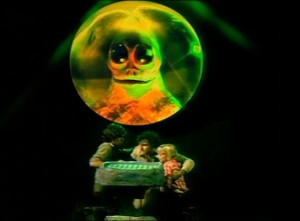 But (I hear you protest) quantum physics insists that measurement—the giving of meaning to information—has a real physical effect through collapsing wavefunctions, etc. Many things could be said here: First, there is no consensus in physics about what measurement means or what the consciousness of the observer doing the measuring might mean. This is going to be debated for a very long time and may prove unanswerable. And anyway the “observer” that physicists are talking about, by virtue of being injected into the experimental context, has ceased being the subjective, philosophical, “I am here, this is me” consciousness centralized in anti-materialist metaphysics; it could mean just the capability to make a choice … but a computer could do that. The question is whether a computer could experience the answer to its own question—and whether that subjective experience matters somehow in measurement. It may be impossible to answer these questions, because it pushes knowledge and knowability to its limit (the Lacanian Real).
But (I hear you protest) quantum physics insists that measurement—the giving of meaning to information—has a real physical effect through collapsing wavefunctions, etc. Many things could be said here: First, there is no consensus in physics about what measurement means or what the consciousness of the observer doing the measuring might mean. This is going to be debated for a very long time and may prove unanswerable. And anyway the “observer” that physicists are talking about, by virtue of being injected into the experimental context, has ceased being the subjective, philosophical, “I am here, this is me” consciousness centralized in anti-materialist metaphysics; it could mean just the capability to make a choice … but a computer could do that. The question is whether a computer could experience the answer to its own question—and whether that subjective experience matters somehow in measurement. It may be impossible to answer these questions, because it pushes knowledge and knowability to its limit (the Lacanian Real).
This is really what Heisenberg showed back at the birth of quantum physics: Measurement, which imparts a human-given meaning to a physical object like a particle, diverts what might otherwise be a “pure cause” into a flow of symbolic meanings usable by the mind-brain but at the cost that it is now useless for doing other work; we cannot know what a particle might have done if we had not measured it. For causality to flow unimpeded, it cannot be interfered with in the process of giving it meaning—that is to say, making it communicable—through measurement. Thus the indeterminacy principle showed not the role of meaning in nature (as some interpret it) but rather the incommensurability of meaning and cause, and thus the limits of human knowing, and the noncollapsible gap between subjective and objective. There is no traversing this gap. The scandalous irony of course is that causality as such, the object of scientific inquiry prior to our outside of meaning, is thus outside the known and can only be an article of faith.
The Sandbox of Confusion
As Robert Plant famously put it, “sometimes words have two meanings.” This is no more true than of the word meaning itself. I’ve discussed meaning is the semiotic sense, significance as signification; it can only be this sense of meaning that the universe could be thought to consist objectively of a matrix of correspondences that could be invoked to account for phenomena like meaningful coincidences or psi. But when anti-materialists decry the “meaningless” universe described and even created by materialist science, they also partly mean meaning in the larger “meaning of life” sense: A higher significance, a sense of connection, and so on, as well as just the sense of life’s potential and richness, its beauty and grandeur. Science (it is argued) wants to evacuate the world of these things, replacing any sense of God or higher purpose with the impersonal, cold interactions of objects and energy (i.e., information).
Good luck colonizing Mars, developing new antibiotics, or feeding the starving masses with a mindset that meaning has to be part of our scientific picture.
This other meaning of meaning is partly a sense of life being worth living because it interests and excites us—that is, it is a synonym for enjoyment. This kind of meaning can in fact be found in and enhanced by scientific inquiry, but it is certainly not (nor should it be) the point of that inquiry; the point of science is to expand our ability to manipulate the world, expand our instrumentality, and that is achieved via reduction and measurement—which entails setting aside personal preferences about the way the world is (which we call “bias”) and, as much as possible, dispassionately subjecting objects to an impersonal system of theory and measurement. Measurement, in turn, necessarily implies materialism as an operating assumption. Thus meaning not only is inherently material, it demands materiality, and thus is no friend of true idealists.
Some in the psi community think it is a futile enterprise to even use science to investigate or theorize psi phenomena, since such efforts have, after a century and a half, yielded little in the way of a theory. Remote viewer Paul Smith argues that the attempt to scientifically theorize psi reflects a kind of “Stockholm Syndrome,” adopting a framing that is inherently hostile and unhelpful to the real point of exercising psi abilities. It’s an understandable position, and there may even be a way in which understanding psi mechanisms inhibits the actual doing (a common ironic principle in life and art that Lacan summarized with his phrase “how the non-duped err”). But I cling (perhaps naively) to my belief that although the scientific framework has historically been hostile to parapsychology, it is not inherently so. Future scientific understanding could be an essential part of exploring and enhancing psi abilities in new ways. We just need to have faith in that future science … and perhaps give the obstructionist skeptics time to die off.
Science, as social construct, isn’t perfect, but as long as we play by its rules (and don’t oversell its ability to address philosophical questions), it is a valuable, necessary tool. None of us, it is safe to say, would even be here, alive (let alone able to debate these ideas) if it wasn’t for the technologies that reductive, materialist science has made possible, starting with the “concrete science” of myth that (per anthropologist Claude Levi-Strauss) gave us tools and agriculture and animal husbandry. The “meaningless” world that science is sometimes accused of creating comes from the way humans use their crude as well as more refined tools to inflict pain and suffering on themselves and each other—that is, rob the world of spirit or enjoyment—but this is not science’s fault, per se, and it’s hardly a new thing. You can’t gaze at a megalithic site or a pyramid and not realize that the ancients had their own profound issues with and around materialism.
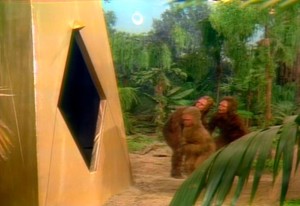 All this is to say, I’m not a fan of making science and spirit play together in the same sandbox. Since meaning is always meaning-to or -for someone, injecting meaning into science, despairing of causal explanations (as Jung did with his theory of synchronicity, for instance), would entail returning science to the pre-Copernican, Medieval world, where our personal wishes/biases (or, the wishes of the priesthood) dictated scientific truth. Good luck colonizing Mars, developing new antibiotics, or feeding the starving masses with a mindset that meaning has to be part of our scientific picture. Though we often confusedly call upon science to weigh in on philosophical or ethical or poetic questions, those exist on a completely different layer of discourse and experience. To think that these conceptually separate layers causally interact, or that the answers to existing scientific anomalies like psi are to be found in blurring the distinction between subjective (meaning) and objective (information), is to create a sandbox of confusion.
All this is to say, I’m not a fan of making science and spirit play together in the same sandbox. Since meaning is always meaning-to or -for someone, injecting meaning into science, despairing of causal explanations (as Jung did with his theory of synchronicity, for instance), would entail returning science to the pre-Copernican, Medieval world, where our personal wishes/biases (or, the wishes of the priesthood) dictated scientific truth. Good luck colonizing Mars, developing new antibiotics, or feeding the starving masses with a mindset that meaning has to be part of our scientific picture. Though we often confusedly call upon science to weigh in on philosophical or ethical or poetic questions, those exist on a completely different layer of discourse and experience. To think that these conceptually separate layers causally interact, or that the answers to existing scientific anomalies like psi are to be found in blurring the distinction between subjective (meaning) and objective (information), is to create a sandbox of confusion.
If the world comes to seem acquainted with our thoughts (as Jung very aptly put it), it is neither because we live suspended in an amnion of cosmic meaning nor because we are simply deluded about the probabilities of coincidence (as psychologists never tire of insisting), but because our brain is somehow predigesting, pre-metabolizing our future in some way we have yet to fully understand. My dream is that the psi ranger of tomorrow will learn to detect and recognize the bent twigs of her own passage ahead of herself in time and understand them for what they are. The first step toward such a future is casting aside the cultural models of time and causality that currently shackle our imaginations—which includes not only the rigid, unidirectional classical causality of the skeptics but also “matrix of meaning” models that inhibit our scientific inquiry into how the human organism inhabits time.
Postscript: The Spirit of Parallax
To argue against a matrix of cosmic or universal meaning is not a spirit-free stance. It accords quite well with Buddhism, in fact, which would say that enlightenment comes not from departing the material world for some world of meaning but from transcending both of these limited frameworks. The great beauty of the cosmos is in its meaninglessness, its transcendence of the symbolic order as well as material instrumentality.
We really need to get over the fear of dualism, a fear shared by both materialist and idealist extremists.
This higher transcendent dimension of awareness and bliss, the rarified sense of “consciousness” that mystics have always united with, and that I think is really synonymous with enjoyment as the Lacanian tradition describes it, surpasses all symbolic cuts and measures and forms. Those who have not united with it but admire it from afar wrongly suppose it to be a place rich in meanings, a “mind” in the everyday sense, as somehow a plenitude of thoughts and ideas and information. But bliss-awareness, at its root, precedes any structuration; there is no information or meanings there.* There is only meaning in that other sense of the word, as fulfillment and reward and a sense of connection.
We really need to get over the fear of dualism, a fear shared by both materialist and idealist extremists. The triumphal voices in both camps somehow think the only pure way to be is to be a monist, and thus they all, on whichever side of the divide, commit the sin of reduction, reducing or assimilating the opposite viewpoint to their own. Hardcore eliminative materialists try to destroy and assimilate meaning to the objective—a stupid, pointless position that only makes them feel better, less threatened by mystery and uncertainty and subjectivity. Hardcore idealists, on the other hand, equally falsely claim the scientific enterprise is bankrupt or a lie because it doesn’t make a place for meaning and spirit. They claim that, since the material world is “within consciousness” (a true-enough statement) then meaning ought to somehow be a causal term in scientific explanations (an unsupported and confused statement, not logically flowing from the first).
The fact is, humans are dual creatures; we need both points of view, subjective and objective, idealist and materialist, spiritual and instrumental, and these opposites do not add up or complement each other or form any harmonious unity. This is the uncomfortable condition of “parallax” described by Slavoj Žižek, identical to the “no self” of the Buddhist tradition. I am thus unashamed to be an anamorphic dualist, flickering between these viewpoints. I highly recommend such a position for stress relief: You no longer get angry at the arrogant reductive materialists or impatient with the fuzzy-headed New Agers (God bless ‘em). Both positions are expressions of monist extremism, fearful of impurity, wanting things to balance and harmonize. Instead, embrace impurity and meaninglessness and non-closure. Embrace parallax. That impossible no-space in-between is where Zen is.
NOTE:
* … Which is why it is important to always question the spiritual value of information-dense visions reported by Gnostic and psychedelic explorers. Gnosticism is an intellectual and critical path, but not a spiritual one. Terrence McKenna the entheogen prophet and Phil Dick the Gnostic prophet were among the smartest people I’ve ever had the joy to read, but neither strike me as anything like enlightened. And while they both reported back about plenitudes of “alien” information (McKenna’s solidified language in DMT-land, Dick’s hypnagogic galley proofs and data-dense milk cartons, etc.), with sparse exceptions they were never quite able to report the content of the information they had seen or glimpsed, just its form—as though it had the fleetingness and insubstantiality of a dream.
What neither could quite discern was that that alien information they saw was their own future writings (and talkings, in McKenna’s case). The invisible landscape of information, the robot satellites beaming Dick information, were just figurations for the information they would themselves produce through their brilliant inspired discourse; it was their own future products they were seeing. The insubstantiality of our precognitive visions reflects the fact that they can only be sketches until we ourselves have done the work of coloring them in.
Synchronicity Machines and Psychotropies of Spacetime
It is because we are lost, decentered by the ego and conceptual symbolic thought, that many mystical or religious experiences involve a sudden amazement of what Ram Dass famously called “being here now,” or simply presence. What is really the most obvious fact, our simple existence somewhere, our conscious awareness, suddenly comes alive as something new and fascinating: “I am here.” Every term in that sentence takes on a numinous quality or becomes a sublime mystery: I, me, what is that? What is it to be? What is here? Where is here? Where was I before and why didn’t I feel so strongly like I was anywhere? How did my being-here-now suddenly feel so amazing?
Space itself contains psychotropic properties that can be extracted, distilled, and delivered to users.
And then, just as quickly as we became aware of it, clear presence fades, and we are clouded again in muddy thoughts of small-s self (the imaginal-symbolic murk I have called the “Solaris mind”).
Mystics and meditators get addicted to these transient clear moments of presence outside and beyond imagination and language, trying to reclaim, prolong, and intensify them. It can become an active daily project. Besides meditation and yoga, peak or flow experiences in sport may strip away mental and behavioral barriers to being in the present moment, temporarily dissolving the obstructing ego. Sex and war can do it, or, I imagine, a life-or-death duel where “it was either him or me.” And of course, some use drugs to strip away the ego and attempt to be in the Now.
In his excellent book On Deep History and the Brain, historian Daniel Lord Smail recommends viewing all of human history through the lens of psychotropy. He doesn’t mean literally that drug-taking made us what we are—the argument sometimes made by entheogen enthusiasts—but rather that nearly everything we do alters our brain chemistry, either restoring balance to, or deliberately un-balancing, the inner neuroendocrine ensemble.
 Being efficient on the job, listening to music, watching an event unfold on the news, getting in an argument or a fight, or gossiping with neighbors (not to mention the basics like sex and eating and sleeping) are all “psychotropic” in the sense that they modulate our internal mixing-board console with its dopamine and serotonin and norepinephrine and endorphin and endocannabinoid (and many, many other) sliders, like a sound technician in a recording studio. And most of the things we say or do to other people are similarly meant to operate on their internal mixing boards. Among a handful of random examples, Smail mentions the rise of the novel in the 18th century, which introduced a new and troubling “solitary pleasure” that worried cultural authorities in ways not too different from the “reefer madness” fears around marijuana in the 1930s.
Being efficient on the job, listening to music, watching an event unfold on the news, getting in an argument or a fight, or gossiping with neighbors (not to mention the basics like sex and eating and sleeping) are all “psychotropic” in the sense that they modulate our internal mixing-board console with its dopamine and serotonin and norepinephrine and endorphin and endocannabinoid (and many, many other) sliders, like a sound technician in a recording studio. And most of the things we say or do to other people are similarly meant to operate on their internal mixing boards. Among a handful of random examples, Smail mentions the rise of the novel in the 18th century, which introduced a new and troubling “solitary pleasure” that worried cultural authorities in ways not too different from the “reefer madness” fears around marijuana in the 1930s.
Although Smail doesn’t mention this, people throughout history and even prehistory have devised countless innovations in art and architecture and even landscaping to recruit and deploy the Kantian frameworks of Space and Time in ways that can induce the profound or even numinous feeling of “being here now.” These innovations were full-on psychotropic, and they were decisive turnings in our cultural and spiritual evolution.
The Timothy Leary of Perspective
I can’t forget the day in art class in fourth grade, when Mrs. Este taught us how to draw a building in perspective. She had each of us place a dot in the center of the paper and then use a ruler to draw a vertical rectangle to the right of the dot, which would become the front of the building. For the oblique side wall of the building, she had us extend the ruler from the top and bottom corners of the building toward the vanishing point, drawing short lines “receding” in space toward it. We then finished our building with another shorter vertical line connecting these two lines at the back. We then drew a horizontal line through that vanishing point and “behind” the building, representing the distant horizon, and finished the building off with rows of windows—the oblique ones likewise receding toward the vanishing point using a ruler.
Perspective turned seeing into an intensely individualistic and solitary form of enjoyment. What viewers were enjoying was not “the view” that paintings gave them, but a new kind of awareness of themselves as individuals.
That day in art class was unforgettable because it was an astonishing revelation, a paradigm shift in my understanding of myself in relation to the world, not to mention my self-confidence as a creator of culture. Just by making parallel lines converge on a central vanishing point, even I, a mere fourth-grader, could make a pretty decently “realistic” drawing of a building. Little did I know that this lesson, and the profound “aha” feeling that came with it, was reliving one of the most storied discoveries-slash-inventions in the history of art.
The first full-on perspectival illusion was created by Filippo Brunelleschi, a brilliant young sculptor, and later architect, who sometime around 1413 painted two pictures of buildings in his town, Florence, that were in perfect, mathematically precise perspective. These panels, which unfortunately no longer exist, are reported to have had a mind-blowing effect on his contemporaries. Other than Louis Lumiere’s 1895 Arrival of the Train—which is rumored, possibly inaccurately, to have caused audiences to panic in fright—I am not aware of any other unveiling in the history of art that so resembles the delivery of a hallucinogen.
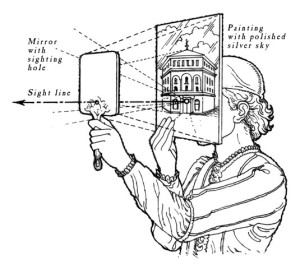 The first of Brunelleschi’s panels was a piece of wood about the size of a record album, depicting the octagonal Baptistery of Florence Cathedral. It was more a contraption than a mere painting: It had a tiny hole drilled through the exact center of the panel (corresponding to the vanishing point). The viewer was made to hold the panel up to his face, almost like a mask, and look through the peephole from the back, at a mirror held out in front of the panel at arm’s length. Instead of painting the sky above the baptistery, Brunelleschi applied a reflective silver foil to reflect the real sky.
The first of Brunelleschi’s panels was a piece of wood about the size of a record album, depicting the octagonal Baptistery of Florence Cathedral. It was more a contraption than a mere painting: It had a tiny hole drilled through the exact center of the panel (corresponding to the vanishing point). The viewer was made to hold the panel up to his face, almost like a mask, and look through the peephole from the back, at a mirror held out in front of the panel at arm’s length. Instead of painting the sky above the baptistery, Brunelleschi applied a reflective silver foil to reflect the real sky.
The panel no longer exists, and we have only various written recollections by Brunelleschi’s contemporaries, attesting to its awe-inspiring, even life-altering impact on them. The most detailed account is that of his biographer, Antonio Manetti, who wrote that seeing the Baptistery this way was something truly special, an experience to be repeated: “To look at it, under the various specified circumstances … it seemed that one was seeing truth itself; and I held it in my hands and saw it several times in my own day, and so can testify to it.”
Brunelleschi was thus like the Timothy Leary of perspective—getting friends and fellow intellectuals and artists in Florence to try it, savoring their amazement, and acting as kind of a prophet of this new technique that, when done right, could move viewers’ minds toward introspection in not only a delightful but also a spiritual way.
One at a Time
Brunelleschi wasn’t simply showing his friends a new scientific principle of art; he was actually connecting them to their presence. And since the intensely private experience he gave them was witnessed by eager, amused onlookers, there was an important confusion about which aspects of this psychotropic experience were more important, the public or the private.
Perspective, with its power to make one end up solitary, eccentric, melancholy, and poor, was the intellectual opiate of its day.
Early work in perceptual psychology showed that seeing things through peepholes does something special to the viewing experience, tricking the mental and visual system into believing in the “truth” of the viewed scene in a much more powerful way than if we saw it in more typical, unrestrained conditions. Simultaneously, a peephole enforces a sense of privacy or solitude—only one person can look through a peephole at a given time, giving you the feeling that the view you are seeing is intended only for you—kind of like the “door in the law” in Kafka’s famous Gnostic parable.
During the first decades of perspective’s existence, people believed that to see the 3-D illusion accurately it wasn’t enough to just stand in front of it; your eye had to occupy a very precise point in space directly opposite the picture’s vanishing point—called the “station point”—and if you didn’t, all you would see, as Leonardo da Vinci put it, was “confusion.” This notion is probably why Brunelleschi designed his demonstration to be viewed the way he did. It took a while for artists to figure out that the imagination can compensate for being off-center with respect to a perspectival rendering, as we now intuitively know from our experience not having the exact center seats in a movie theater; even if we have to sit all the way on the aisle, the movie’s still “in perspective.”
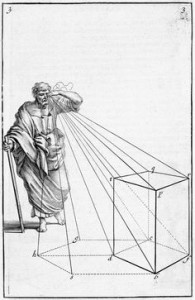 In fact, what Brunelleschi’s contraption really did was enforce and reinforce the idea that perspective demands being right in one exact spot, and thus (by extension) that the viewer is alone in his experience of the world—a singular, solitary experiencer. It’s kind of the implicit corollary of “being here now”: Only a single person, you, can be right here, right now, in this exact spot, seeing what you’re seeing. By awakening the viewer to that amazing fact, perspective turned seeing into an intensely individualistic and solitary form of enjoyment. What viewers were enjoying was not “the view” that paintings gave them, but a new kind of awareness of themselves as individuals.
In fact, what Brunelleschi’s contraption really did was enforce and reinforce the idea that perspective demands being right in one exact spot, and thus (by extension) that the viewer is alone in his experience of the world—a singular, solitary experiencer. It’s kind of the implicit corollary of “being here now”: Only a single person, you, can be right here, right now, in this exact spot, seeing what you’re seeing. By awakening the viewer to that amazing fact, perspective turned seeing into an intensely individualistic and solitary form of enjoyment. What viewers were enjoying was not “the view” that paintings gave them, but a new kind of awareness of themselves as individuals.
The invention-slash-discovery of perspective in the 1400s was the biggest-ever paradigm shift in visual representation, defining the way we see the world, and ourselves, ever since. It turned what used to be a taken-for-granted public experience (seeing) into an intensified solitary pleasure, as well as creating a whole new visual code or language where oppositions like near/far or flat/deep space carried specific meanings. The perspective code actually required the implicit “unitary seeing subject” (in the words of philosopher Brian Rotman) the same way a spoken utterance always carries an implied “you” as its addressee.
The Capitalist Subject
 It is no coincidence that perspective and the individual and individualistic culture-consumer it helped create was born right when capitalism was emerging in Europe. Perspective’s implicit conceptual model—light rays entering a private brain-space via the eyes—informed modern European ego-bound psychology and philosophy and the “centering of the subject.” Paintings at the time displayed valuable commodities, and the virtual 3-D space in those paintings was described by John Berger as like a safe set into a wall.
It is no coincidence that perspective and the individual and individualistic culture-consumer it helped create was born right when capitalism was emerging in Europe. Perspective’s implicit conceptual model—light rays entering a private brain-space via the eyes—informed modern European ego-bound psychology and philosophy and the “centering of the subject.” Paintings at the time displayed valuable commodities, and the virtual 3-D space in those paintings was described by John Berger as like a safe set into a wall.
It is surely also no coincidence that the most popular subject matter for paintings at the time was the Annunciation to Mary, because this is a scene in which an individual is singled out and addressed by something not of this world—in other words, exactly what a perspective picture is. Whenever you see a Renaissance painting of that scene from the Gospel of Luke, you’ll see a powerfully receding space, a pyramid of parallel lines receding to an actual or implied vanishing point in the center, with the angel Gabriel on the left addressing Mary on the right, forming a kind of implicit cross structure.
 Mary herself is always shown in one of a few subtly distinct postures reflecting her unfolding reaction to what the angel is telling her—surprise, bewilderment, inquiry, finally humble acceptance of her mandate to bear God’s son. With perspective, a picture had to implicitly show a single “now,” a single instant in time, even if the moments of the story were implicitly just a few brief seconds apart (as in the Gospel narrative). No longer did paintings depict cartoon-like series of moments or a vague spread-out timespan, as Medieval paintings had done.
Mary herself is always shown in one of a few subtly distinct postures reflecting her unfolding reaction to what the angel is telling her—surprise, bewilderment, inquiry, finally humble acceptance of her mandate to bear God’s son. With perspective, a picture had to implicitly show a single “now,” a single instant in time, even if the moments of the story were implicitly just a few brief seconds apart (as in the Gospel narrative). No longer did paintings depict cartoon-like series of moments or a vague spread-out timespan, as Medieval paintings had done.
The intensified feeling of presence that perspective awakened to viewers is equivalent to awakening to what we would now call “consciousness,” as consciousness is tantamount to being aware that you exist in a particular place and have a (unique) point of view. The Renaissance viewer may have unconsciously identified with Mary during the Annunciation, feeling uniquely “addressed” and, in some peculiar way, divinely favored, by this perspectival awakening.
Space-Abuse
In other words, space itself contains psychotropic properties that can be extracted, distilled, and delivered to users through procedures like perspective paintings. This raises the question: Can space be abused? The answer is, unfortunately, yes. The 16th-century art historian Georgio Vasari records the case of at least one “addict” who was destroyed by the perspective fad that had swept through the artistic community of the 15th century.
 “The most captivating and imaginative painter to have lived since Giotto,” Vasari wrote, “would certainly have been Paolo Uccello, if only he had spent as much time on human figures and animals as he spent, and wasted, on the finer points of perspective.” Among Uccello’s sketches and notebooks are astonishing studies of circular and polygonal objects, many of which look exactly like nothing else but solids that have been wire-modeled on modern animation or design software. He liked to focus on solid objects such as hats much more than on the people wearing them, and it is a woodenness in some of his paintings that prompted Vasari to criticize the painter for his overriding interest in this special effect.
“The most captivating and imaginative painter to have lived since Giotto,” Vasari wrote, “would certainly have been Paolo Uccello, if only he had spent as much time on human figures and animals as he spent, and wasted, on the finer points of perspective.” Among Uccello’s sketches and notebooks are astonishing studies of circular and polygonal objects, many of which look exactly like nothing else but solids that have been wire-modeled on modern animation or design software. He liked to focus on solid objects such as hats much more than on the people wearing them, and it is a woodenness in some of his paintings that prompted Vasari to criticize the painter for his overriding interest in this special effect.
Vasari actually blamed Uccello’s excessive interest in perspective for his failure in life and for various unhappy tendencies in his disposition. He writes: “Artists who devote more attention to perspective than to figures develop a dry and angular style because of their anxiety to examine things too minutely; and, moreover, they usually end up solitary, eccentric, melancholy, and poor, as indeed did Paolo Uccello himself.” If Brunelleschi was perspective’s inventor, then without a doubt Uccello would have to be considered its first casualty. When he died, Vasari writes, he left behind “a wife who told people that Paolo used to stay up all night in his study, trying to work out the vanishing points of his perspective, and that when she called him to come to bed he would [ignore her, saying]: ‘Oh, what a lovely thing this perspective is!’”
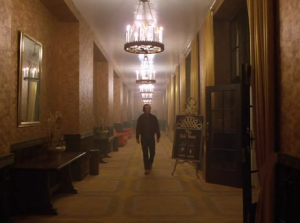 So perspective, with its power to make one end up solitary, eccentric, melancholy, and poor, was the intellectual opiate of its day. To suggest that the condition of melancholia was brought on by the loss of sleep and conjugal pleasures that befell the artist or theoretician in their excitement over perspective would not actually be so far from the truth—the inherent paradoxes of perspective (being-there yet not being there, seeing alone yet among others, etc.), and the inability of the mind to get around them, became something of a metaphor for insoluble paradox in general, the sort of thing that plagued students, scholars, and monks who spent too much time alone with their books.
So perspective, with its power to make one end up solitary, eccentric, melancholy, and poor, was the intellectual opiate of its day. To suggest that the condition of melancholia was brought on by the loss of sleep and conjugal pleasures that befell the artist or theoretician in their excitement over perspective would not actually be so far from the truth—the inherent paradoxes of perspective (being-there yet not being there, seeing alone yet among others, etc.), and the inability of the mind to get around them, became something of a metaphor for insoluble paradox in general, the sort of thing that plagued students, scholars, and monks who spent too much time alone with their books.
To this day, in photography and film, extreme or forced perspective using a fisheye (extreme wide-angle) lens is part of our standard visual symbolism for isolation, depression, anxiety, and even madness. Stanley Kubrick’s films, for example, provide endless good examples of this.
To the Oculus Rift
Every revolution in visual experience has repeated the pattern of perspective: initially providing a new and amazing or inspiring experience (of “truth itself,” as Manetti put it), opening us to a new way of seeing the world, before gradually becoming taken for granted. We develop tolerance to special effects when we see them every day.
Any two things can be joined by a line; when three things are all joined by that same line, there is a coincidence; when that coincidence seems to address you individually, it is, effectively, a “synchronicity.”
The natural outgrowth of perspective, for example, was the refinement of optical theories that led quickly to the development of lenses for microscopes and astronomy and, ultimately, the camera. Viewers of the first daguerrotypes had similar mind-expanded reactions to those that accompanied the first perspective paintings, and anthropologists have reported interesting responses among indigenous peoples unfamiliar to photographs when first shown them: They may not know what they are looking at, but if and when it suddenly clicks for them that “this is how it would appear if I were standing in a specific spot looking at X,” it does so with a kind of euphoria—the psychological effect of a conceptual paradigm shift.
Subsequently, movies and television combined the psychotropy of photographic reproduction with the ancient powerful psychotropies of story and music to produce a highly compelling and addictive drug cocktail. The next phase in the historical unfoldment of presence and the technologies for producing it is virtual reality, of course. Although immersive VR goggles have been around for over two decades in rudimentary form, there has been an “uncanny valley” quality to them that has tended to make the VR experience somewhat aversive, even nauseating. But according to all the advance hype, the next generation is poised to surpass these difficulties and represents a milestone in eliciting a truly euphoric feeling of presence. This is surely going to be the next techno-drug … at least, before we become tolerant to it.
 Countless culture critics have pointed out the drug-like nature of electronic and visual media, and that’s not solely a function of the constant dopamine stimulation caused by motion and fast-cutting. Even acting is a kind of ancient shamanic “special effect”: A living, known person assuming a persona of someone else, such as a hero or a spirit or a god (even just dad in a Santa Claus suit), is a transformation that to a child is still amazing; it is even a bit amazing to adults when we see a movie or TV personality in real life—a mildly pleasurable cognitive dissonance that surely accounts partly for our fascination with celebrities (i.e., mentally juxtaposing the fake and real, savoring the “aura” that Walter Benjamin famously observed surrounds an “original” that has been widely reproduced).
Countless culture critics have pointed out the drug-like nature of electronic and visual media, and that’s not solely a function of the constant dopamine stimulation caused by motion and fast-cutting. Even acting is a kind of ancient shamanic “special effect”: A living, known person assuming a persona of someone else, such as a hero or a spirit or a god (even just dad in a Santa Claus suit), is a transformation that to a child is still amazing; it is even a bit amazing to adults when we see a movie or TV personality in real life—a mildly pleasurable cognitive dissonance that surely accounts partly for our fascination with celebrities (i.e., mentally juxtaposing the fake and real, savoring the “aura” that Walter Benjamin famously observed surrounds an “original” that has been widely reproduced).
And harvesting spacetime to induce a drug-like sense of presence probably goes back to the very origins of religion.
The Druid Inside
Consider the range of druidic psychotropies afforded by megalithic observatories. Although the individual standing stones that dot the British and Continental European landscape were probably wayfinding tools for neolithic travelers and traders, the large stone complexes like Stonehenge or Callanish on the Scottish Isle of Lewis certainly had an astronomical function: Depending on the particular observatory, on significant days like solstices and equinoxes, the sun might be seen, to the observer standing at the exact center of the circle, to rise or set directly past a specific feature on the horizon beyond a specific stone or through a specific gap. An imaginary line was thus created that connected the viewer to the heavenly body, via a significant landmark, right at a particular significant moment in time.
Synchronicity, in a sense, is the ultimate solitary pleasure
In the modern world, we have become mostly tolerant of holiday sunrises and sunsets, so it is natural for today’s ethnoastronomers to focus on the mundane practical uses of reckoning solar and lunar events for timekeeping—that is, maintaining the ritual calendar and knowing when to plant crops—or else they chalk ancient astronomy up to beliefs about the spirit world. Timekeeping and astrological or shamanic practices were no doubt real payoffs of attention to the night sky and to the rising and setting of heavenly bodies, but those explanations pass over the crucial viewing experience of the ancient astronomer, the “awakening to presence” aroused by experiencing significant spacetime alignments, not to mention the rewards of delivering such experiences to a mystified laity.
Any two things can be joined by a line; when three things are all joined by that same line, there is a coincidence; when that coincidence seems to address you individually (like Gabriel addressing Mary), it is, effectively, a “synchronicity.” You might even call a stone circle a synchronicity machine: a material apparatus for creating a significant coincidence between an observer and a geo-cosmic conjunction. We must not forget its contrivance, however—the “coincidence” wouldn’t exist but for that apparatus. This is exactly like Brunelleschi’s demonstration, with its imaginary connection between the eye and the vanishing point (symbolically associated with God), via the peephole. Coincidences and synchronicities feel both uncanny and reassuring to us, and that must have been true for ancients observing the solstices in their temple complexes—observing, both in the sense of watching and in the sense of celebrating or commemorating.
 At the center of observatories were living people—perhaps just the druidic elite and nobility, or perhaps everyone, one at a time—viewing and experiencing those alignments at precise moments on specific days of the year, and thus feeling their consciousness acutely and sublimely. Prehistoric astronomy would have generated a personal experience in living human beings that translated directly into perennial philosophical and spiritual terms of cosmic communion and simple presence.
At the center of observatories were living people—perhaps just the druidic elite and nobility, or perhaps everyone, one at a time—viewing and experiencing those alignments at precise moments on specific days of the year, and thus feeling their consciousness acutely and sublimely. Prehistoric astronomy would have generated a personal experience in living human beings that translated directly into perennial philosophical and spiritual terms of cosmic communion and simple presence.
These ancient synchronicity machines were every bit as ideological as Renaissance paintings or photography or cinema: They were material (and materialistic) contrivances that capitalized on the brain’s susceptibility to illusion, especially the illusion of having or being a “self,” to mystify and amaze. There were always men behind the curtain who had created this expensive experience as an instrument of material, social, and religious power as well as an expression of scientific and technical mastery.
Humbler everyday experiences of meaningful coincidence also draw power from the way they single us out as individuals. As I’ve been arguing in this blog, in such experiences, the man behind the curtain is simply ourselves, displaced in time. The meaning-making, precognitive brain is the ultimate synchronicity machine, the real “acausal connecting principle.” We mystify ourselves by playing hide and seek with our presence, facilitated by our culturally-imposed non-belief in precognition. And there is always lone experiencer at the center, enjoying its perplexity at being addressed by the cosmos or fate. Synchronicity, in some sense, is the ultimate solitary pleasure.
Phil Dick Boulevard: Precognition, Karma, and the Unconscious
Until you make the unconscious conscious, it will direct your life and you will call it fate. — Carl Jung
The future is more coherent than the present, more animate and purposeful, and in a real sense, wiser. It knows more, and some of this knowledge gets transmitted back to us by what seems to be a purely natural phenomenon. We are being talked to, by a very informed Entity: that of all creation as it lies ahead of us in time. — Phil Dick
Ever since Freud formulated his theory of the unconscious, it has troubled philosophers, because it seems self-contradictory. Thinking is closely allied to consciousness, after all, so how can we have thoughts that we do not know we’re thinking? For Sartre, this conceptual impossibility revealed the falsity of Freud’s theory; in Being and Nothingness, he questioned the possibility of a “censor” in the mind which both was aware of what it was censoring but somehow alien or other than our ordinary consciousness.
The unconscious may be nothing but future consciousness as it informs present thought and action. Precognition and the unconscious may really be the same thing.
He cites as an example the “resistance” seen in analysis—”the patient shows defiance, refuses to speak, gives fantastic accounts of his dreams, sometimes even removes himself completely from the psychoanalytic treatment. It is a fair question to ask what part of himself can resist.” To Sartre, it was absurd to speak of an unconscious part of the self that nevertheless knows what it is resisting, which implies consciousness. Thus he argued that any supposed determinism by an ‘unconscious’ formation in the psyche is really a red flag of “bad faith,” the failure to take responsibility for our actions. There is no unconscious, just the avoidance of responsibility.
Something like this view prevailed also in scientific psychology through most of the 20th Century. But despite their continued hatred of Freud, researchers in the brain and behavior sciences have been forced over the past couple decades to concede the existence of massive amounts of processing in the brain that is truly unconscious. We now know lots of stuff occurs in our heads that we are unaware of, much of it similar to what Freud originally described. There is thinking, sensing, and feeling that is not thought, sensed, or felt, and our non-experience of this huge domain is much more than a matter of bad faith (although there is that also).
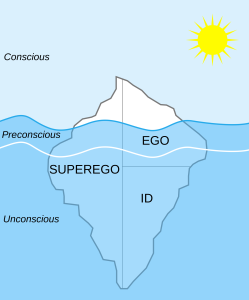 Much of the parapsychological literature points to this same, enigmatic dimension of “unthought knowns” (to misappropriate a term by Christopher Bollas) that seem to carry information not only about our embarrassing or forbidden desires but also about our own immediate or more distant future. Precognition is a fundamentally unconscious phenomenon, and when it manifests consciously it tends to do so through the very same oblique, associative and somatized pathways that the classical “repressed” stuff of psychoanalysis does, as well as memory more generally.
Much of the parapsychological literature points to this same, enigmatic dimension of “unthought knowns” (to misappropriate a term by Christopher Bollas) that seem to carry information not only about our embarrassing or forbidden desires but also about our own immediate or more distant future. Precognition is a fundamentally unconscious phenomenon, and when it manifests consciously it tends to do so through the very same oblique, associative and somatized pathways that the classical “repressed” stuff of psychoanalysis does, as well as memory more generally.
The argument that many parapsychologists are making lately is that the source of psi material is “outside the head” in some transpersonal, collective, or otherwise nonlocal and immaterial conscious medium. I make a different proposal: The unconscious and psi are in our head, but not in our head at this moment.
The entire phenomenon of the unconscious, along with many if not all psychic phenomena, point to the brain as a fully four-dimensional processor of information. Elsewhere I’ve proposed how this may work given recent advances in quantum computing and quantum biology. The unconscious may be nothing but future consciousness as it informs present thought and action; manifestations of psi provide direct evidence that this is the case. Precognition and the unconscious may really be the same thing.
The More Informed Future
Part of our difficulty imagining such a possibility comes from the spatial metaphors we use to imagine mental processes. We think of layers of consciousness as vertically piled strata: The unconscious is a substrate, something underneath us, buried under the earth or submerged in murky water … or perhaps it is over our heads, up in the sky, obscured by clouds. Thinking of the unconscious as another ‘simultaneous’ layer of thought assumes, although without basis, that it is “there already” but just unseen. It is probably impossible not to construe temporal relationships via spatial metaphors, but a better place to situate the unconscious would be ahead of us, in front of us. In other words, consciousness and the unconscious may be displaced from each other in time, not in space.
We can’t find the origins of our thoughts because those origins haven’t happened yet. We haven’t yet gotten to where we (will have) thought them in the first place.
Jacques Lacan almost sorta hit on this with his understanding that “repressed” material derives its meaning from (or at least in) the future. He writes in his last Seminar, “what we see in the return of the repressed is the effaced signal of something which only takes on its value in the future, through its symbolic realization, its integration into the history of the subject.” But he didn’t go quite far enough. I would add that what defines a repressed or unconscious thought is not simply that you are not thinking it consciously, but that you are not thinking it yet. You can never prove it was there until it is there … for exactly the same reason that we cannot prove the veridicality of a supposed telepathic or clairvoyant experience until the future moment of feedback or confirmation. Instead of the unconscious being something happening on another, obscured layer of cognitive processing, it is something that is destined to become conscious in a future moment, such as a moment of therapeutic insight or an accidental revelation like a slip of the tongue, or perhaps just an “aha” moment. More generally, the unconscious could be described as what hasn’t been consciously thought yet but that somehow shapes or perturbs our behavior anyway.
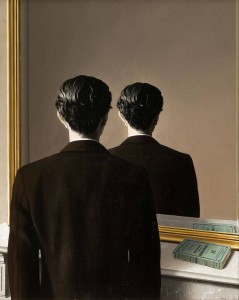 Psi (as I have been arguing in recent posts) suggests that the brain is an organ that reaches forward across our timeline, pulling thoughts and insights from the “more informed” future. Animals are so good at living, miraculously effective at moving through their environment, because of this relation to a future self that knows just a little bit more than the present self does. If this is the case, and abundant presentiment research supports it, then it provides answers not only to psi but to the nature of the unconscious in its relation to consciousness. The brain (and who knows, maybe even smaller cellular units or cells themselves) thinks across its history, not just in the instant.
Psi (as I have been arguing in recent posts) suggests that the brain is an organ that reaches forward across our timeline, pulling thoughts and insights from the “more informed” future. Animals are so good at living, miraculously effective at moving through their environment, because of this relation to a future self that knows just a little bit more than the present self does. If this is the case, and abundant presentiment research supports it, then it provides answers not only to psi but to the nature of the unconscious in its relation to consciousness. The brain (and who knows, maybe even smaller cellular units or cells themselves) thinks across its history, not just in the instant.
Your consciousness thought processes right now (and most likely, along with a fan of multiple other conscious moments) are the unconscious of you a few seconds ago, a few minutes ago, or a few hours ago, and even a few weeks or years ago. Stated differently, your future consciousness is the unconscious of your present moment, quietly animating and informing your thoughts and actions, maybe causing a slip of the tongue or (if you are sleeping) a dream, or giving you some intuition or hunch of where to go and how to proceed, or perhaps even generating an uncanny “synchronicity.”
What Goes Around, Comes Around
This ongoing cycling of information through time, the way present thought and action alter our future potentials and the way future brain states “reflux” into the past, is very close to the Eastern concept of Karma.
The future is literally where the “karmic seeds” are planted and, thus, whence they arise in the form of our thoughts and inspiration for action, through the retrocausal logic of psi.
Buddhist meditators have studied consciousness for thousands of years, and Buddhist psychology (specifically the Yogacara school) makes a central place for alaya-vijnana, usually translated as “store consciousness” or “substrate consciousness.” When you trace back the origins of thought through your associative mental thought-stream in meditation, the trail eventually goes cold and you hit a brick wall: Thoughts literally arise from nowhere, and it is a bit of a surprise when you confront this. How can a thought have no visible cause or origin? Yet in spite of this, new thoughts that emerge after an interval of mental stillness are not random. They bear unmistakable traces of our concerns and our past thoughts and actions—it is like our old thoughts just went underground for a while before reemerging nearby, like some garden worm. They seem to have an underground life that we do not and cannot see.
Store consciousness is thus very similar to the Freudian unconscious, a place where our thoughts hide out before manifesting in some new thought or action (including unpredictable and possibly surprising thoughts, symptoms, and dreams). Like the implicit Freudian spatial-conceptual metaphoric map of mind, Buddhist psychology also places store consciousness underneath us, imagining it as a ground that we traverse. It is metaphorically seen as a kind of soil, and our actions are likened to seeds that, after a period of hidden germination, sprout onto the surface as new thoughts and actions. Karma is the planting of these seeds and reaping them as the ongoing cyclical horticulture of mind. (The work of meditation is sometimes described as “burning” these seeds so they lose their power to germinate or generate new thoughts.)
 But I think this new, psi-based conception of four-dimensional mind can really transform how we think of “store consciousness” as well. We just need to up-end the planter, stand it vertically: The fallow store consciousness is nothing but the future in front of us, and Karma is our two-way interrelationship to this future unfolding of mind. In other words, the future is literally where the “karmic seeds” are planted and, thus, whence they arise in the form of our thoughts and inspiration for action, through the retrocausal logic of psi, the refluxing of future experience into the past.
But I think this new, psi-based conception of four-dimensional mind can really transform how we think of “store consciousness” as well. We just need to up-end the planter, stand it vertically: The fallow store consciousness is nothing but the future in front of us, and Karma is our two-way interrelationship to this future unfolding of mind. In other words, the future is literally where the “karmic seeds” are planted and, thus, whence they arise in the form of our thoughts and inspiration for action, through the retrocausal logic of psi, the refluxing of future experience into the past.
Again, the future not only informs the present in the form of rare psychic visions and premonitory dreams; it is actually (I am suggesting) the very source and origin of present thoughts and imagination. The wall meditators hit when trying to peel back the layers of consciousness is the wall of time itself, the wall of the Not Yet. We can’t find the origins of our thoughts because those origins haven’t happened yet. We haven’t yet gotten to where we (will have) thought them in the first place.
A Game of Charades
This forces us to confront some basic philosophical fundamentals, such as the nonexistence of the past. We can know intellectually that the past doesn’t exist, but it is very hard to really accept or confront that there is no solid record “behind” or “below” us. All there is, really, is change, and the possibility of imaginatively reconstructing a “past moment” that is different from the present moment, by forensically interpreting the present in such and such a way. But the past is always an image or construct in the present. Thus the things we “leave behind,” the traces we leave, including the moral traces of our actions in Karma, or the traumas that serve as the seeds of our neurotic symptoms, have nowhere to go in the past—they go into the future.
We only “see” the future when something we are seeing in the present, or something from our past in memory, stands out more vividly because it happens to match or resemble that not-yet-materialized thing.
The neurological description is that they do this by altering the strength of synaptic connections. Every time you have a thought, it is reinforcing certain synapses, and the longer you go not having other thoughts, those associated synapses weaken. There are no “memory traces” as such in the brain, hidden in the folds of tissue like fossils in the earth; there is just an unfolding neverending weather pattern of cortical firing across a hundred billion neurons and trillions of synaptic junctions. Thus every thought and action leaves its “karmic” traces in the subtly altered propensity (or potentiation) of future action. If I’m right, quantum entanglement in many of those hundred billion neurons is causing future information to be fed back into the past, also in the form of altered potentiation—a kind of bending or skewing of present perception toward stimuli that have associative links to something coming down the pike.
Precognitive information is almost never clear or unambiguous, because it lacks context; and in a way, this may be the whole difference between the past and the future. Present consciousness has no way of knowing what the future is or recognizing thoughts from the future because there are no sensory experiences already associated with them in memory; those experiences are what provide the context for autobiographical events, enabling us to situate them in our history … making future information a bit like letters with no return address. Information from the future, lacking a context of lived sensory experience, can only emerge in consciousness by perturbing present experience or drawing forth past memories that resemble it.
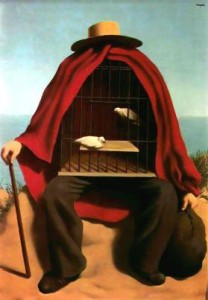 When something seen now rhymes with or matches a future idea or experience, the present stimulus is noticed with greater force than it otherwise would. We pay attention to it, it may even have a slightly luminous or numinous quality, and it may generate an odd train of thought whose significance only becomes apparent once the future experience occurs.* Thus our future is constantly playing a game of charades with us. The charades-like quality is not intentional game-playing, the “trickster”-like behavior of our “higher self” teaching us lessons. It is just the associative nature of the links that connect information in the brain through time, the altering of the potentials of our thought, and the fact that the future lacks the lived biographical context that the past possesses.
When something seen now rhymes with or matches a future idea or experience, the present stimulus is noticed with greater force than it otherwise would. We pay attention to it, it may even have a slightly luminous or numinous quality, and it may generate an odd train of thought whose significance only becomes apparent once the future experience occurs.* Thus our future is constantly playing a game of charades with us. The charades-like quality is not intentional game-playing, the “trickster”-like behavior of our “higher self” teaching us lessons. It is just the associative nature of the links that connect information in the brain through time, the altering of the potentials of our thought, and the fact that the future lacks the lived biographical context that the past possesses.
This accounts for why coincidence really plays an important role in psi, even though synchronicity per se (as Jung defined it) is a fiction: We only “see” the future when something we are seeing in the present, or something from our past in memory, stands out more vividly because it happens to match or resemble that not-yet-materialized thing. Something in the past or present that is like something in the future acts as a seed of psi. We see this again and again in precognitive dreams, visions, etc.: They crystalize around something in memory, or some thought arising naturally through immediate experience, that will be seen to resemble the future event or thought or feeling.
Phil Dick Boulevard
So if I am right, the unconscious is just ordinary waking consciousness at other moments in time, or more likely a range or fan of multiple other moments, that contributes to shaping present perception. It is not so much that the future “communicates” with us in the present as that it subtly biases or skews our present thought and perception by altering our cortical potentials.
Future physics and neuroscience will be able to crack the nut of how psi works, but we need to give it time—including time for many of the current anxiously “classical” generation of skeptics to die off.
Yes, this is a reductive, materialist argument, and thus I’m being super naughty. Bad, bad me. But it is a testable hypothesis, and also a parsimonious one, that makes sense of a lot of otherwise wildly disparate anomalies.** It also suggests that it is our age-old spatial metaphors of mind that trip us up when trying to solve the psi conundrum. Shifting to the language of “nonlocality” doesn’t help; that just implies broad connection across space and time, without offering any explanation for how we become connected to specific certain things that personally matter to us, that we want to know and indeed will know in our future (the key piece of evidence that is so often ignored—that is, the role of feedback).
Future physics and neuroscience will be able to crack the nut of how it works, but we need to give it time—including time for many of the current anxiously “classical” generation of skeptics to die off and make way for the fully quantum future in which informational time travel is not so unthinkably radical or scary.
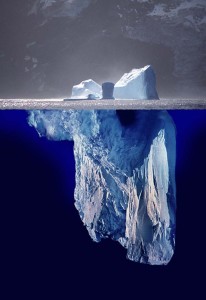 We can start now by resisting (as much as possible) unhelpful mental models of mind, like the submerged icebergs or subterranean regions that implicitly constrain our thinking about the unconscious. The unconscious is not sequestered beneath consciousness, some “other” hiding out of sight, thinking without our awareness and permission, or walled off behind barricades. Nor is it a “higher self” hovering over us and stage managing our affairs like a big teacher or parent in the sky. And the store consciousness that gives rise to Karma isn’t a fertile ground we walk over and leave seeds in. It is the landscape that unfolds before us as we walk down the road. That figure up ahead is you. It’s Phil Dick Boulevard, and we’re all traversing it.
We can start now by resisting (as much as possible) unhelpful mental models of mind, like the submerged icebergs or subterranean regions that implicitly constrain our thinking about the unconscious. The unconscious is not sequestered beneath consciousness, some “other” hiding out of sight, thinking without our awareness and permission, or walled off behind barricades. Nor is it a “higher self” hovering over us and stage managing our affairs like a big teacher or parent in the sky. And the store consciousness that gives rise to Karma isn’t a fertile ground we walk over and leave seeds in. It is the landscape that unfolds before us as we walk down the road. That figure up ahead is you. It’s Phil Dick Boulevard, and we’re all traversing it.
NOTES
*This is why meditation is so crucial to getting more in tune with our precognitive nature, and why Zen is a particularly useful path. The more the mind is placid, the more we can focus on small perturbations of thought, and detect oddities in our train of thought. In my experience, precognition manifests in waking life most often in odd trains of thought sparked by random everyday events.
A valuable tool created in the field of ecological psychology is a method called “experience sampling”: Participants are prodded at random times throughout the day using a pager to pause and reflect on and record what they were just thinking at that moment. It is a surprisingly difficult task for some people who are unused to observing their thought-stream, but they invariably find it not only surprising but really rewarding. The basic idea is to get in the habit of noticing what you were just thinking a second or a few seconds ago. It is in those innocuous thoughts just before you decided to notice your thoughts that the answer to not-yet-formulated questions can often be found.
Synchromystics, take note here: The practice of experience sampling greatly increases the number of synchronicities in your day. But it may persuade you that synchronicity is nothing but your own precognitive nature that you have until now failed to recognize.
**The Fortean sense of an “unseen world” or multidimensional parallel realities all around us, intruding on or intersecting our reality, could be part of this same misunderstanding or misdiagnosis of our precognitive nature. We mentally picture frequencies of a “superspectrum” (a la John Keel) as simultaneously coexisting bands on reality’s radio dial, layered over or next to each other, the same way shamanic cosmologies imagine vertically layered spirit worlds. But what looks like an “already existing” parallel reality could instead be other-temporal (past or future) perceptions or thoughts or experiences drawn into present conscious awareness through the associative logic I’ve described. How might this idea help illuminate UFOs, ghosts, and abduction experiences?
Some Thoughts on the “Blackstar Working”
When Bowie’s Blackstar album came out last Friday, and the title track was finally heard in context with the other six (mostly, equally stunning) songs, there was something truly weird about it all. This was no mere album, and no mere concept album. The last two hauntingly beautiful tracks, “Dollar Days” and “I Can’t Give Everything Away” felt very much like a goodbye. The whole thing was creepy and ominous, like Bowie had something really big up his sleeve. My wife and I listened to the album three times over three days, spellbound by its depth and sadness, and could not stop talking about it. It put us in a very strange, very sad mood. And when I rose from bed Monday morning, the line “something happened on the day he died” was on repeat in my head:
Something happened on the day he died.
Spirit rose a meter and stepped aside.
And someone else took his place and bravely cried: I’m a blackstar!
Sure enough, Bowie, who spells his name on the cover using fragments of a five-pointed star, did have something big up his sleeve. When I sat down at my computer and read the awful news, I was shocked but not surprised. We now know from the producer, Tony Visconti, that he’d indeed been planning Blackstar as a deathbed gift to his fans since he learned he had incurable cancer 18 months ago, and that the songs were recorded in early 2015, when he was obviously in much better health. (There is no hint of weakness in his singing voice, although he allows his breaths to be heard on a couple tracks, which, along with every other detail, now becomes highly significant.) Has an artist … or anyone … ever gone out with such masterful control, grace, wit, and mystery? Bowie, as many remarked on Twitter, managed to stare death in the face and use it.
 When the “Blackstar” video (bottom of this post) was first released in late November, there were rumors that it was somehow about or related to ISIS … which seemed a bit too narrowly geopolitical a subject matter for Bowie. Yet there was an unmistakeable whiff of the imagery that had become associated with that group’s adolescent atrocities. There was the blindfold worn by Bowie himself and then the three scarecrows at the end. There was the theme of death and, specifically, execution (“On the day of execution, only women kneeled and smiled,” etc.), in a vaguely Middle Eastern setting. And most significantly, the video opens with the retrieval of a jeweled skull from inside a spacesuit, while later we see a headless skeleton floating in orbit. Death, executions, beheadings. It seemed like Major Tom had been martyred in a particularly distressing way.
When the “Blackstar” video (bottom of this post) was first released in late November, there were rumors that it was somehow about or related to ISIS … which seemed a bit too narrowly geopolitical a subject matter for Bowie. Yet there was an unmistakeable whiff of the imagery that had become associated with that group’s adolescent atrocities. There was the blindfold worn by Bowie himself and then the three scarecrows at the end. There was the theme of death and, specifically, execution (“On the day of execution, only women kneeled and smiled,” etc.), in a vaguely Middle Eastern setting. And most significantly, the video opens with the retrieval of a jeweled skull from inside a spacesuit, while later we see a headless skeleton floating in orbit. Death, executions, beheadings. It seemed like Major Tom had been martyred in a particularly distressing way.
Knowing that this album was written and recorded a full year ago, the ISIS link makes much more sense: From the time Bowie found out he had cancer in mid 2014 until he recorded these songs, the world was transfixed by the ISIS spectacle, specifically their videos of decapitations. Bowie, unparalleled master of fame and stardom, must have recognized their savvy method: using extremity and transgression to transfix the attention of the world, capitalizing on the total whorish complicity of the media. In his own much more benevolent way, Bowie had pioneered this M.O. in his own career. Like all of us, he must have been saddened and appalled at what was happening, while at the same time reeling from his own diagnosis. His associative mind would have drawn a link between the black-clad executioners marching through Syria and Iraq and the illness spreading in his body. It now turns out that “black star” is medical jargon for a certain type of cancer lesion.
I think Bowie saw here an opportunity to commit a last heroic act: Reappropriate ISIS’s symbolic language (ritualistic executions, decapitation, blindfolds, etc.) and subvert it, utilizing his own death to draw the necessary attentional energy to a final magical intervention against the extremist violence eating away at the world. In the video, he waves a black spell book, and indeed the gorgeously designed book accompanying the LP is very like a grimoire. “BOWIE” spelled on the cover in star fragments literalizes that he is using the shattering/destruction of his self to cast a “spell” at evil, or the forces of evil. Blackstar is not about ISIS so much as a kind of magic(k)al “working” (a la Crowley) against ISIS (and what they represent). It remixes their own symbolism into a dark and beautiful summoning of female power to defeat the forces that enable that kind of base violence to flourish.
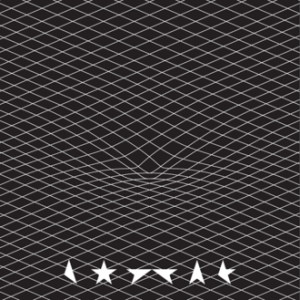 Symbolic working and re-working (or in an academic and political context, “reframing”) uses the fact that all symbols have multiple meanings. Bowie’s death two days after the album’s release provided the final bit of needed meaning to understand the “Blackstar” video: A blackstar is obviously much more than a cancer lesion; it is also a black hole, the remnant left when a very big star dies, absorbing all light (the cover of the single, right, showing a gravity well, confirms this intended meaning).
Symbolic working and re-working (or in an academic and political context, “reframing”) uses the fact that all symbols have multiple meanings. Bowie’s death two days after the album’s release provided the final bit of needed meaning to understand the “Blackstar” video: A blackstar is obviously much more than a cancer lesion; it is also a black hole, the remnant left when a very big star dies, absorbing all light (the cover of the single, right, showing a gravity well, confirms this intended meaning).
Such a heavy hole in spacetime, I think Bowie knew and hoped, could supply the necessary power for his spell against the terrestrial darkness blighting our world. What indeed did the entire world do when it found out about his brilliantly timed death, but attend ever more closely to Blackstar‘s tracks “Blackstar” and “Lazarus” and to his whole life and works? He would have counted on that black-hole-like sucking-in of all attention and meaning.
The women are the “heroes” of “Blackstar.” When the sly animal-tailed woman at the beginning of the video retrieves Major Tom’s jeweled skull and the relic is then incorporated into the circle of female power “in the Villa of Ormen” (i.e., “____ or men”), it seems to summon a spirit that punishes and destroys the initially smug blindfolded scarecrows. Bowie seems to be saying to women, and to the feminine (i.e. receptivity) in all of us: Take the power back from those stupid children. Bowie saw clearly what somehow few people want to talk about in our insane times: All violence in the world, be it ISIS, school shooters, gun nuts of all stripes, is committed by men. Terror and violence are not about religion and politics; they are about testosterone. Perpetrators are often young and confused, flooded with adolescent and young-adult male anger—precisely the raw material that older, powerful men have always summoned and channeled for wars. If women of the world stopped being impressed by male audacity—both the audacity to kill and the audacity to command death—how might that change the world?
It would thus be a mistake to read the “women kneeling and smiling on the day of execution” as women complicit and supportive of the horrors being perpetrated by their atrocious menfolk; the knowing smile on the face of the tailed woman as she appropriates Major Tom’s skull and bears it through the village toward its destination is how I take that smile—a calm “you just wait and see what’s coming” smile.
Bowie repeatedly insists that the place where the action is, the “center of it all,” is “your eyes.” Another thing a blackstar is is the pupil of the eye, which is a candidate for the materia prima in alchemy—the black raw material (i.e., what is in your field of vision) from which anything can be made. You are not a slave of ISIS, or of their media servants, or of anything or anybody doing outrageous things to capture your attention. Instead of filling your vessel-like gaze with stupidity and atrocity, look up instead, he says—look to the skies, to the stars—don’t look at all this shit being spewed on your TVs and your computer screens.
I don’t know if Bowie read Giordano Bruno, but throughout the “grimoire” accompanying the album, the lyrics to several songs are printed as stars arranged in constellations. Bowie’s “working” reminds me very much of Bruno’s 1584 attempt to reform the heavens in his book The Expulsion of the Triumphant Beast: Because worldly institutions were so full of corruption and people’s values had sunk to such dismal lows in his time, Bruno felt that the constellations themselves by which humans orient their lives needed to be reformed and reshaped, their images given new meaning, and his lengthy book in dialogue form attempted precisely this. That is exactly what Bowie, that emissary from the stars, seems to be attempting in a perhaps more modest way.
The way Bowie takes and redefines “execution” is his boldest stroke. The decapitated skeleton isn’t just a martyr to ISIS; it is also someone who has followed the advice of a book that we do know Bowie had read and counted among his favorites, D.E. Harding’s Zen classic On Having No Head. Really pay attention to what you actually see in front of you, not to what you imagine or think is there. The headless skeleton floats in space in front of a pupil-like black hole, and this is precisely what the eye actually sees of the self in Harding’s vividly described satori vision: everything but a head. That’s because there is no head; only other people have such an appendage—you don’t. Recognizing this truth, in all its senselessness, is the true path to liberation.




